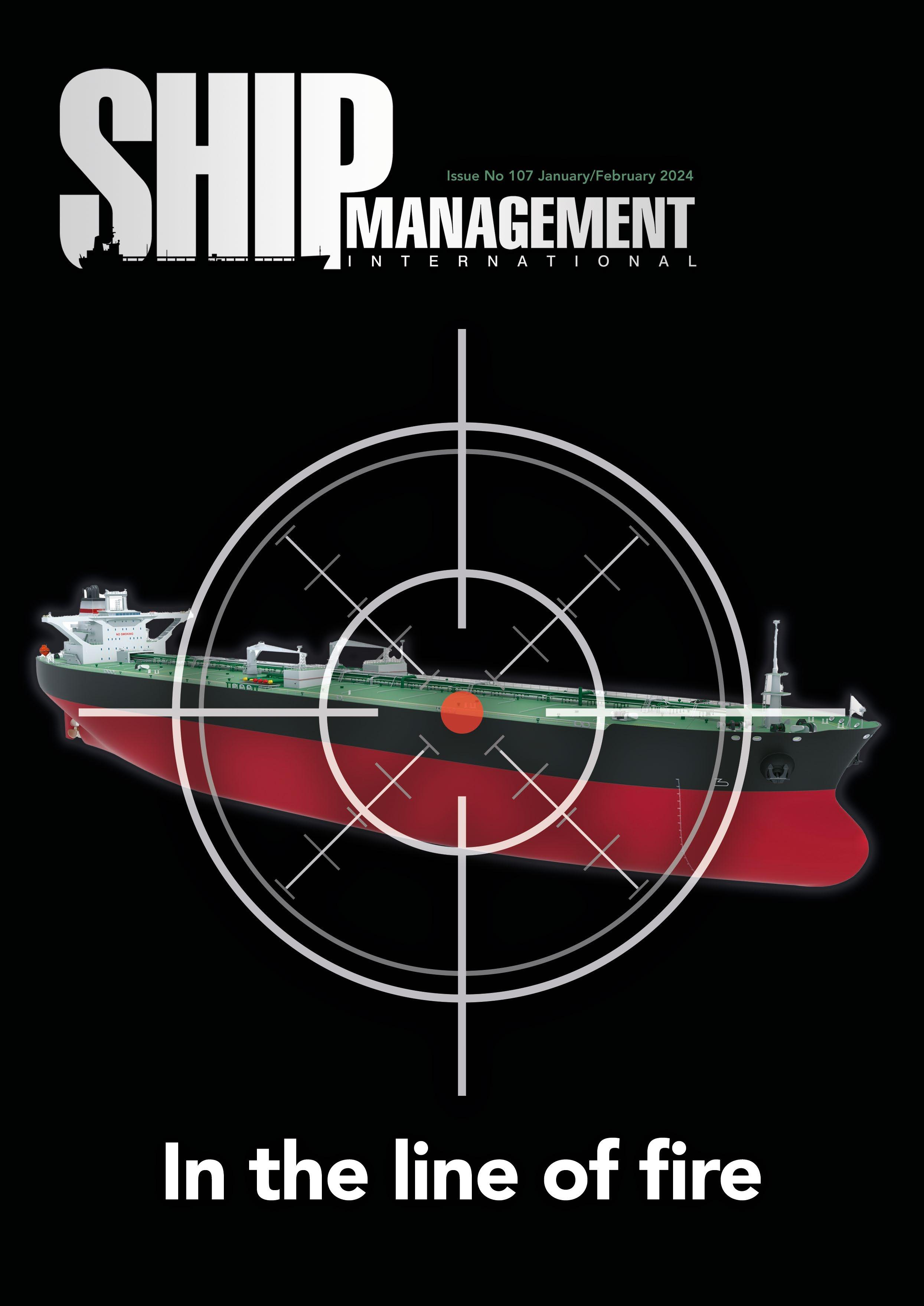

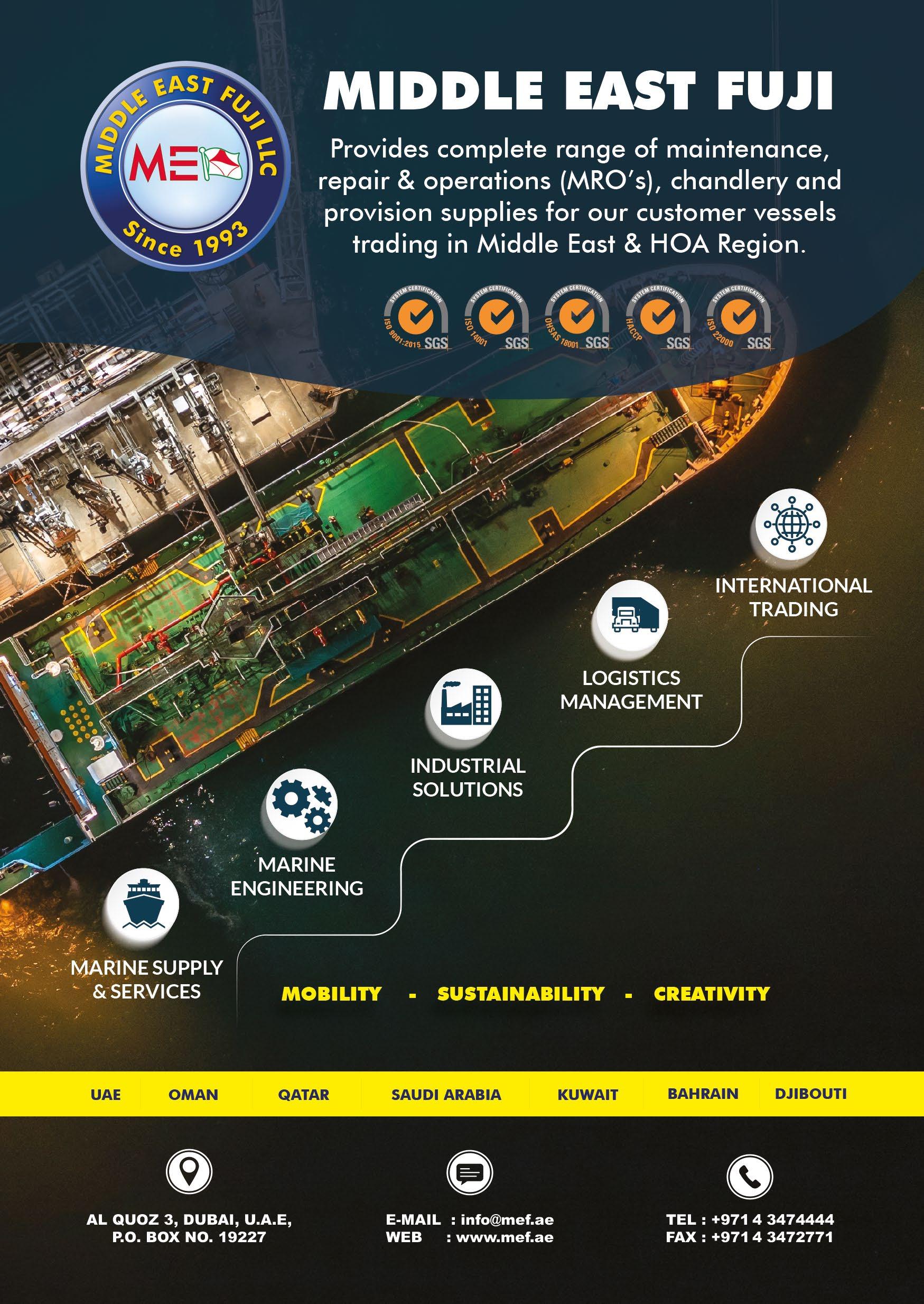

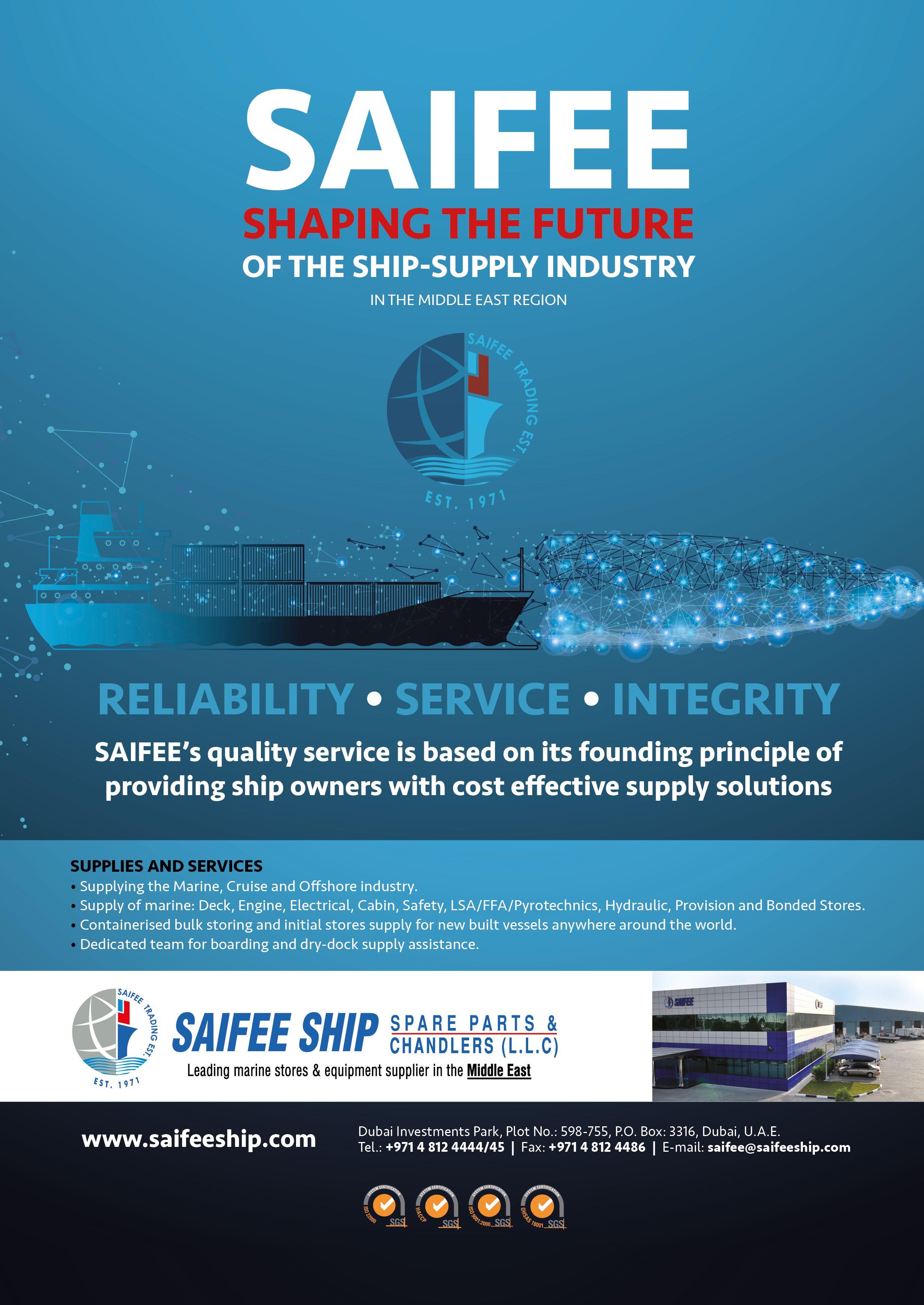

See pp. 8, 10, 12, 22, 36, 41, 47 & 80
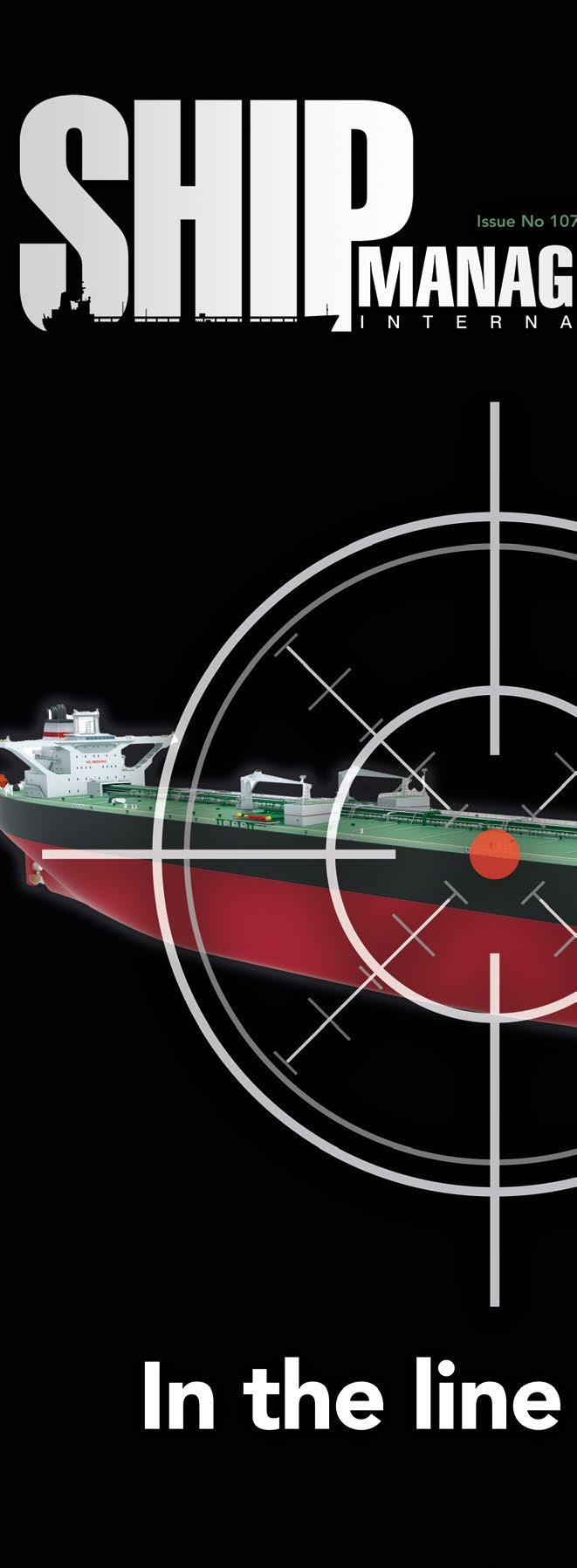


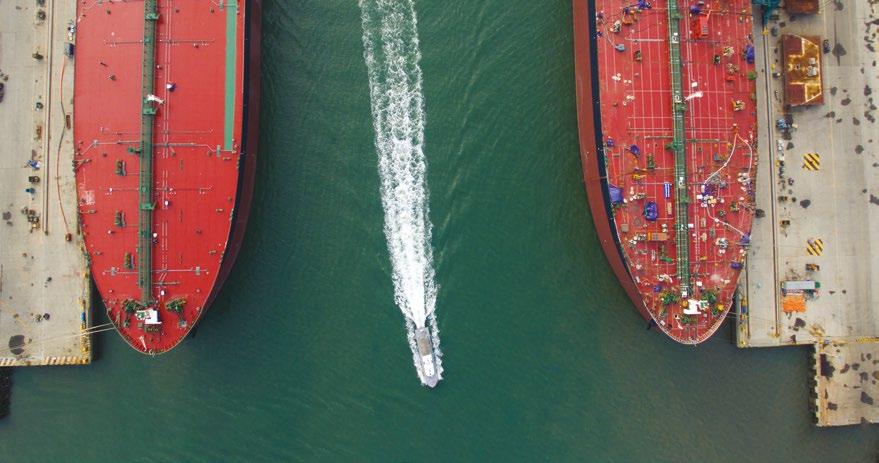

8 – Navigating the future: safety first!

Get our magazine digitally. Scan QR code and fill in your details to receive.
10 – Suez Canal toll earnings set to continue falling, as vessels re-route around Cape of Good Hope 22 – Capt. Kuba Szymanski Attacks on merchant ships must end now 12 – Likelihood of legal disputes stemming from Red Sea crisis 14 – Crew recruitment becoming harder, Danica crew manager survey reveals 16 – Artificial Intelligence as Human Resource 19 – InterManager elects new Vice President 20 – EU ETS - bare confusion


–

THE
OWNERS
STRAIGHT
ISSUE 107 JANUARY/FEBRUARY 2024
MAGAZINE FOR THE WORLD’S SHIP
& SHIP MANAGERS
TALK FIRST PERSON HOW I WORK NOTEBOOK INTERMANAGER OUTLOOK Cover Story
In the line
fire
of
25
Arsenio Dominguez, Secretary-General, IMO 28 – Catherine Mulvihill, CEO, IFAN
5 107 January/February 2024 Ship Management International
30
33 – Euronav’s ‘grey to green’ pathway

EMISSIONS
74


6 Ship Management International Issue 107 January/February 2024 Next issue The March/April issue of the magazine (SMI 108) will be appearing at this year’s Posidonia event in Athens and will include special GREECE and CYPRUS reports, including a focus on what classification societies are doing in these major shipping centres. There will also be an in-depth report on SINGAPORE as Asia’s foremost maritime cluster, including coverage after this year’s Singapore Maritime Week. For advertising enquiries, please contact Sales by emailing sales@elaboratecomms.com You can also keep abreast of news and subscribe to our daily newsletter at shipmanagementinternational.com SHIP MANAGEMENT INTERNATIONAL – ISSUE 107 JANUARY/FEBRUARY 2024 THE MAGAZINE FOR THE WORLD’S SHIP OWNERS & SHIP MANAGERS LIFESTYLE 94 – Holidays extraordinaire: the road less travelled AD HOC REVIEW OBJECTS OF DESIRE ANALYSIS TECHNICAL DECARBONISATION CLEAN SEAS REGIONAL FOCUS REGIONAL FOCUS 76 – Our regular diary section 92 – Bringing you the best in arts & culture 90 – Our pick of the most coveted creations 80 – Geopolitics to rule tanker market for the foreseeable future 83 – Evaluating the engine retrofit option 86 – Simplying emissions compliance 88 – Holistic solution for hull cleaning Gibraltar 53 – Planning with certainty in mind 64 – Gibdock looks to growth Isle of Man 69 – Maritime cluster on a digital footing SHIP REGISTRIES CREW WELFARE MARITIME SECURITY TECHNICAL MANAGEMENT 41 – Registries have to adapt to constant change 47 – Belize-flagged Rubymar forced to evacuate crew 58 – University of Gibraltar working to meet the needs of industry 61 – Geopolitics – a silver lining or a negative backlash? 34 – VIKAND launches OneHealth seafarer welfare programme 36 – Tackling Houthi threat using AI technoloogy 73 – Using digital solutions to enhance vessel maintenance planning and performance 72 – A crew manager’s view from Manx Ocean DISPATCHES
mergers: Lowering emissions versus raising fleet size
ALTERNATIVE VIEWPOINT 79 –
Stopford Reducing emissions requires new thinking
– Tale of two
Dr Martin
– How
for its EU ETS emissions trading debut in the year ahead?
should shipping prepare
January/February 2024 | Issue 107
STRAIGHT TALK
Navigating the future: safety first!
Addressing a subcommittee of the International Maritime Organization held in early February this year, new SecretaryGeneral Arsenio Dominguez elaborated on the theme of this year’s IMO World Maritime Day, namely: “Navigating the future: safety first!”
“This theme is a pledge to uphold the highest standards of safety in every aspect of this Organization’s regulatory work while facing the challenges of a fastchanging world,” he said, “in particular with respect to challenges such as climate change; developments in technology, artificial intelligence; and new threats faced by the shipping industry.”
Uppermost of these ‘new threats’ for the past three months and more have

Sales Enquiries
Julian Berry Phone: +44 (0) 1296 682 051
Email:jberry@elaboratecoms.com
Editorial Bob Jaques Phone: +44 (0) 1296 682 089
Email: editorial@elaboratecoms.com
Email: bjaques@elaboratecoms.com
Finance Lorraine Kimble Phone: +44 (0) 1296 682 051
Email: accounts@elaboratecoms.com
been the attacks by Houthi militants on commercial shipping passing through the Red Sea, the first time that merchant ships have faced sustained military attack since the Iran-Iraq war of the 1980s – and then only against one type of vessel on a specific route, not an entire global trade artery. In early February it was reported that 50 ships had suffered missile attacks since November, Israel-based Maritime AI specialist Windward referring to January in particular as having been “a month of mayhem”.
“Our mission to safeguard seafarers takes on particular significance against the backdrop of the situation in the Red Sea,” continued the IMO Secretary-General, “emphasising the imperative for collective action to
fortify the safety of those who serve at sea… I join the calls for caution and restraint to avoid further escalation of the situation in the Red Sea and the broader region, and I particularly urge the immediate release of the Galaxy Leader and its crew” (seized by the Houthis back in November).
This issue of SMI examines the Red Sea crisis from various viewpoints… including commercial, regulatory, legal, technological and operational. Because, as Secretary-General Dominguez - subject of our First Person profile - simply states: “The entire world depends on international shipping and seafarers, and therefore ships and cargoes should not be the subject of attacks.” l
Publisher: Sean Moloney
Editor: Bob Jaques
Sales Manager: Julian Berry
Finance: Lorraine Kimble
Design and Layout: Diptesh Chohan
Regular Contributors: Michael Grey Felicity Landon Ian Cochran Margie Collins Ema Murphy
Motoring Journalist: Rob Auchterlonie
Technical Editor: David Tinsley
Editorial contributors: The best and most informed writers serving the global shipmanagement and shipowning industry.


Printed in the UK by Warners Midlands plc. Although every effort has been made to ensure that the information contained in this publication is correct, Elaborate Communications accepts no responsibility or liability for any inaccuracies that may occur or their consequences. The opinions expressed in this publication are not necessarily those of the publishers. All rights reserved. No part of this publication may be reproduced whole, or in part, stored in a retrieval system or transmitted in any form or by any means without prior permission from Elaborate Communications.
Wingbury Courtyard Business Village, Upper Wingbury Farm, Wingrave, Bucks, HP22 4LW, United Kingdom Published by 8 Ship Management International Issue 107 January/February 2024
Connect with us /ShipManInter Visit our website www.shipmanagementinternational.com Download our App Ship Management International Join the debate @ShipManInter
The shipping business magazine for today’s global ship owners and ship managers
Suez Canal toll earnings set to continue falling, as vessels re-route around Cape of Good Hope
By Rebecca Galanopoulos-Jones, Senior Content Analyst, Veson Nautical
As we entered into the third month of escalating conflict in Yemen [in early February], this has prompted significant rerouting of vessels with far-reaching consequences for global trade and transport and the latest trade data from Veson Nautical indicates a notable shift in traffic patterns. Geopolitical tensions and conflict have raised maritime security concerns in the region, given its strategic importance and critical maritime trade routes.
The influence of the situation on the various cargo markets has been mixed. In the crude Tanker sector, rates for Suezmaxes and Aframaxes have firmed since the start of December up by around 16% and 63% respectively. The route around the Cape of Good Hope more than doubles the length of voyages from the Middle East to Europe and therefore reduces the supply of available tonnage in the market.
Looking at the weekly tolls graph [estimated using toll fees pre-Jan 15], overall tolls have fallen by c.40% since the end of November from USD 47 mil to USD 28 mil. Container tolls have significantly decreased, falling by c. 66% from the end of November, where estimated fees fell from c. USD 18 mil that week to USD 6 mil at the start of January. However, in percentage terms the LPG sector experienced the biggest drop with tolls down by c.93% from USD 1 mil at the end of November to USD 153,000 in the first week of January. LNG tolls ranked third, with a fall of c.65.65% followed by Crude Tankers which experienced a fall of c.23.34% from USD 7.3 mil to USD 5.7mil in January. Bulkers were the least affected, with a comparatively modest decline of about 7%.
The analysis of the sum of weekly calculated SCNT (Suez Canal Net Tonnage) transiting through the Suez
In addition, the ongoing crisis in Yemen has implications for traffic through the Suez Canal and therefore Egypt, which may incur substantial costs due to the disruptions in trade and transport. Although this situation could potentially serve as a catalyst for increased diplomatic efforts to broker peace, considering the economic losses incurred by the Egyptian government as a result of the crisis. Understanding the economic impact on Egypt and specifically the Suez Canal might encourage a more proactive approach towards resolving the conflict and mitigating its adverse effects on global trade.

Canal versus the Cape of Good Hope (Graph 2) reveals a noteworthy trend. The graph illustrates a reduction in SCNT through the Suez Canal and a corresponding increase in the Cape of Good Hope region/transit zone, which is particularly evident since November 2023. Month on month, there has been a significant decline of approximately 38% in the sum of weekly calculated SCNT through the Suez Canal, while the sum of SCNT going around the Cape of Good Hope has increased by about 25%.
This shift is attributed to a surge in attacks targeting vessels in the region, compelling ship operators to alter their routes. The consequences of which include increased costs including rising oil prices, shipment delays, threats to maritime security, and concerns about geopolitical instability. Without resolution to the situation, this could further impact trade flows and increase commodity prices and emissions.
As vessels divert away from the affected area and opt for the Cape of Good Hope route, tonne-mile demand for various sectors has increased, providing support to vessel earnings.
In addition, the intervention of the US and UK military with strikes has caused a spike in oil prices. While levels have not risen as dramatically as they did following the invasion of Ukraine, there are ongoing threats of retaliation from Iranian-backed forces, suggesting potential further disruptions to oil supply in the future.
In the Container sector, the diversion has reversed a steady downward trend in freight rates since 2022. A large number of vessels have diverted from the Red Sea to Travel around the Cape of Good Hope, and this has also led to increasing earnings with Post Panamax period rates for oneyear up by c.7% from December. Although the impact on the Bulker sector is significantly lower than for other markets, despite the usual dip in earnings during January, rates have remained historically high for this time of the year, even after a decrease from the peak in December.
The complex interconnection of geopolitical events, maritime security concerns, and global trade dynamics underscores the multifaceted challenges facing the shipping industry in the current scenario. Although longer transit times and increased earnings may be acceptable in the short term, looking further ahead, they could be outweighed by increased costs to the owner.
From the perspective of Egypt, reduced traffic through the Suez Canal and therefore a lower income from toll fees is likely to persist for the foreseeable future. However, understanding the economic repercussions on the nation could foster a more proactive approach to resolving the conflict and alleviate its adverse effects on global trade. l
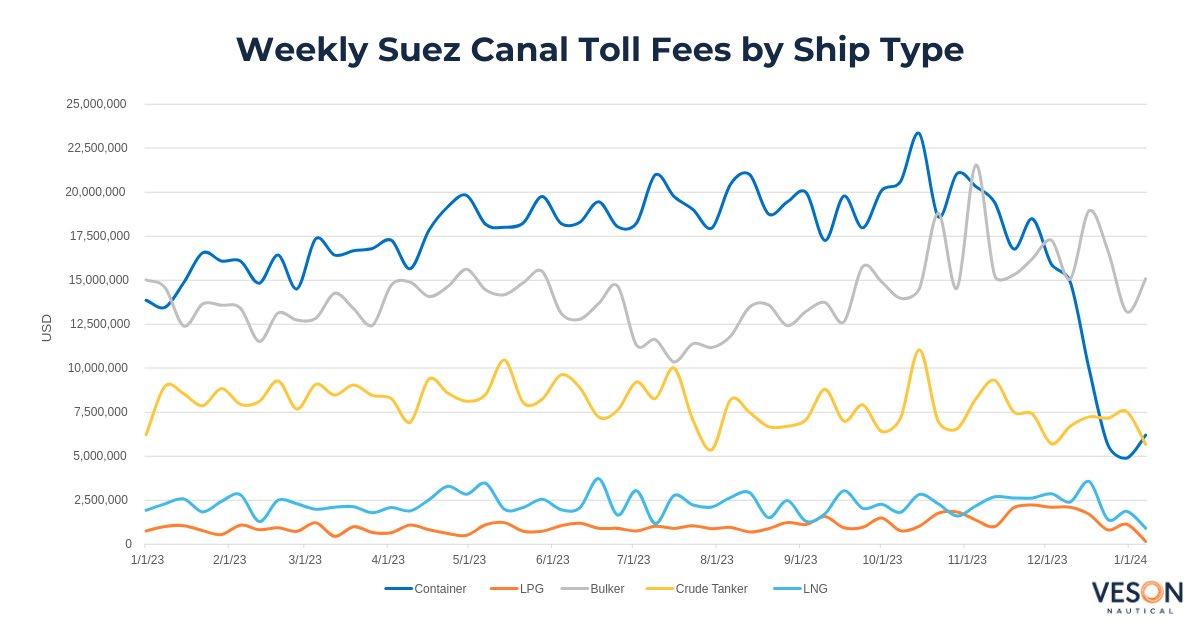
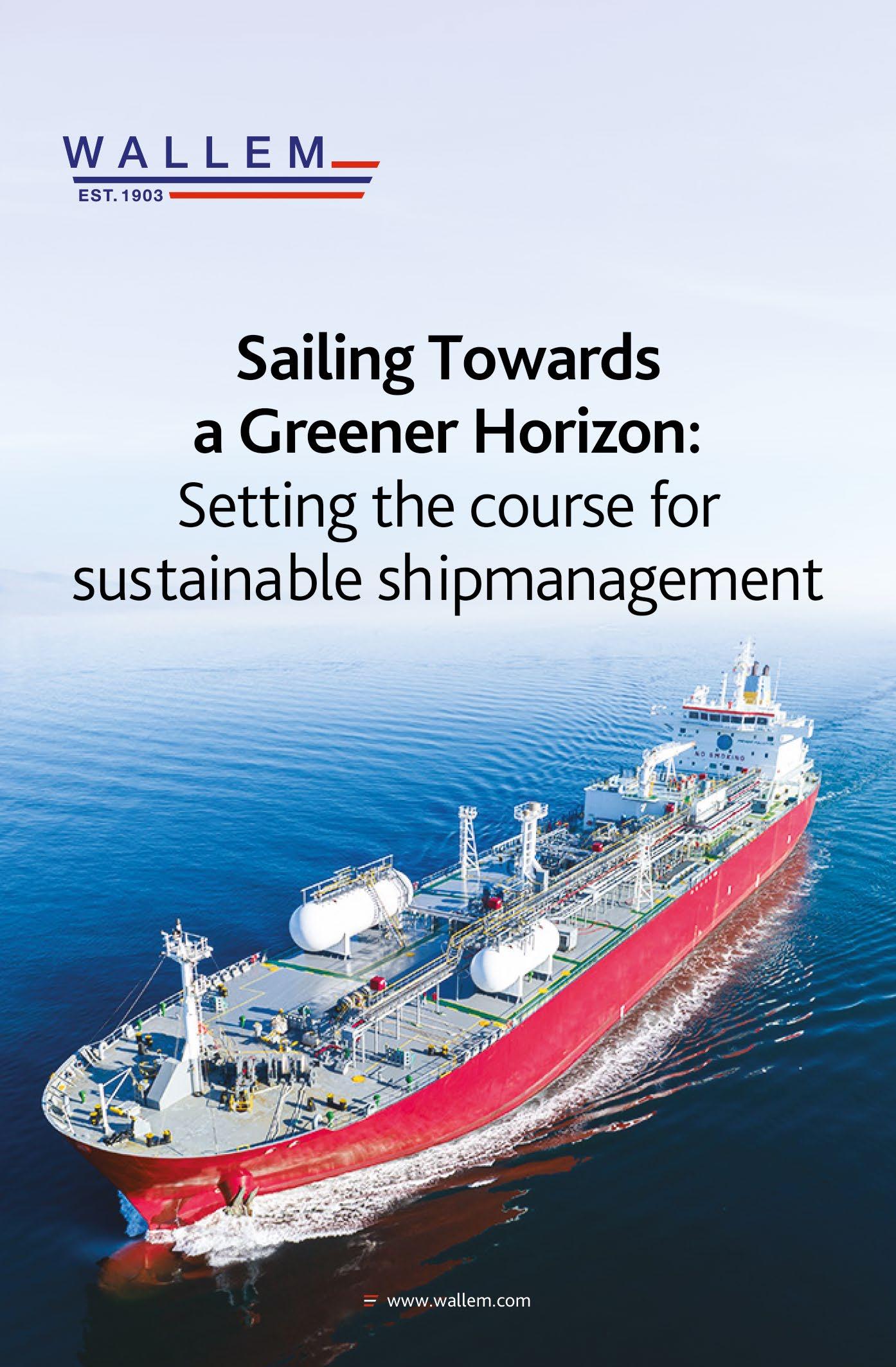
10 Ship Management International Issue 107 January/February 2024
Notebook
Notebook 11 107 January/February 2024 Ship Management International
Likelihood of legal disputes stemming from Red Sea crisis

“For now, the jury is still out on whether we will see an increase in legal disputes stemming from the crisis,” wrote Nick Austin, transportation lawyer at global law firm Reed Smith [in late January].
“We are mostly seeing shipowners and charterers working together to find solutions and avoid disputes in what everyone accepts is a challenging situation. We have seen this with some oil majors publicly choosing not to order tankers through the Red Sea to avoid putting shipowners in a difficult position, both legally and in terms of the risk of an attack.
“In some cases, more legal stances are being taken. Charter terms are being scrutinised to determine if a vessel can take a different route without creating a legal liability for the shipowner. This needs to be looked at on a vessel-by-vessel basis, but cooperation is key to avoiding disputes and we are also seeing plenty of that.
“It may be some time before legal disputes materialise given that many vessels which have detoured around the Cape of Good Hope are yet to reach their destination. And if the situation improves, we may start to see disagreements about whether it is safe enough to pass through the Red Sea without owners being able to refuse. However, it’s still early days in terms of formal disputes being referred to maritime arbitration or Court action.
“Although the rising price of insurance means the cost differential between transiting the Red Sea and sailing around the Cape of Good Hope is narrowing, delays to cargo arriving at its destination can present legal problems for owners and charterers under cargo documents.”
“We are currently fielding a large number of queries from our shipping clients seeking clarification on the legal position under charter arrangements. The primary area of concern revolves

around “war risks” clauses. These vary from contract to contract, and can have markedly different implications depending on the wording. Charterers generally seek counsel on whether they can require a ship to transit the Red Sea despite the risk, and shipowners want to know if they can refuse without legal liability.
“While there can be legal consequences of changing a vessel’s route, the prevailing focus for many owners and charterers is directed towards getting cargo to its destination as quickly and costeffectively as possible.
“This is a difficult time for all involved – owners and charterers are aware of the complex balance between the legal considerations and the practicalities of ensuring swift and efficient cargo transport. Thus far, the industry is working to collaboratively seek solutions amidst universally acknowledged challenging circumstances.” l

Notebook 12 Ship Management International Issue 107 January/February 2024
Plot of all major maritime security incidents from Nov 14 to mid-February – source AMBREY ANALYTICS
Crew recruitment becoming harder, Danica crew manager survey reveals
Recruitment of seafarers is getting more challenging according to a survey of crew managers conducted by Danica Crewing Specialists. Nearly half of those responding reported they are finding it more difficult to recruit crew of the calibre they need for their ships, while more than 70% of crew managers said their job has become more difficult within the past two years.
Meanwhile the survey indicates crew salary costs are rising, which confirms the findings of Danica’s recent Seafarers’ Survey which revealed that pay is up across all ranks. Some 74% of the shipping companies who responded to Danica’s Crew Managers’ Survey said they had increased wages for senior officers over the past year, with more than 60% reporting increased wages for junior officers and senior ratings, while almost 60% had increased wages for ratings. Only 6% of respondents had not adjusted wages over 2023.
Crew managers reported that wages for senior officers are up between 10 to 30%, with junior officer roles attracting salary increases of between 6-15%. Among ratings, salaries for senior ranks have risen 11 to 15% while for junior ratings the increases are between 6-10%.
Looking at retention, just over a third of survey respondents felt their seafarers have become more willing to change employer, while just under a third said they believed they were less willing to move, and 1/3rd reported the situation as the same. More than 80% of crew managers saw salary as the main reason for seafarers switching jobs, chiming with the almost 80% of crew members who said the same in Danica’s 2023 Seafarer Survey.
The crewing survey also revealed that more than a third of shipping companies don’t have a written strategy in place for recruiting and retaining seafarers. Demonstrating the need for a diversified crewing strategy, more than half of the companies responding said they plan to take on more nationalities over 2024.
Henrik Jensen, Danica Crewing Specialists CEO, said: “We thought it would be interesting to see how crew

managers evaluate the manning situation and to compare the findings with those of our annual Seafarers’ Survey. The results are interesting and demonstrate how shortages of competent sea staff, particularly in certain ranks, are impacting crewing strategies for shipping firms. It also seems the majority of ship owners and managers are recognising that salary levels need to increase in order to recruit and retain top talent.”
Danica’s survey was conducted among a large group of crew managers and other personnel involved in crewing. It was conducted as a useful comparison to the company’s annual Seafarers’ Survey which received feedback from more than 6,000 crew members. Responses to the Crew Managers’ Survey were received equally from ship owning and ship management companies. The majority of respondents worked in a company where all the functions related to the management of the fleet were conducted inhouse. While most respondents were employed within the crewing department, the survey also attracted responses from more than 6% of CEOs and Managing Directors. Geographically the respondents came from a wide spread of countries but particularly from Greece, Cyprus, Denmark, and Singapore. Most respondents worked in companies with a crew pool of 200-500 seafarers and a fleet of 10 to 25 vessels. All key seafarer nationalities were represented in the crew pools managed by the respondents. l
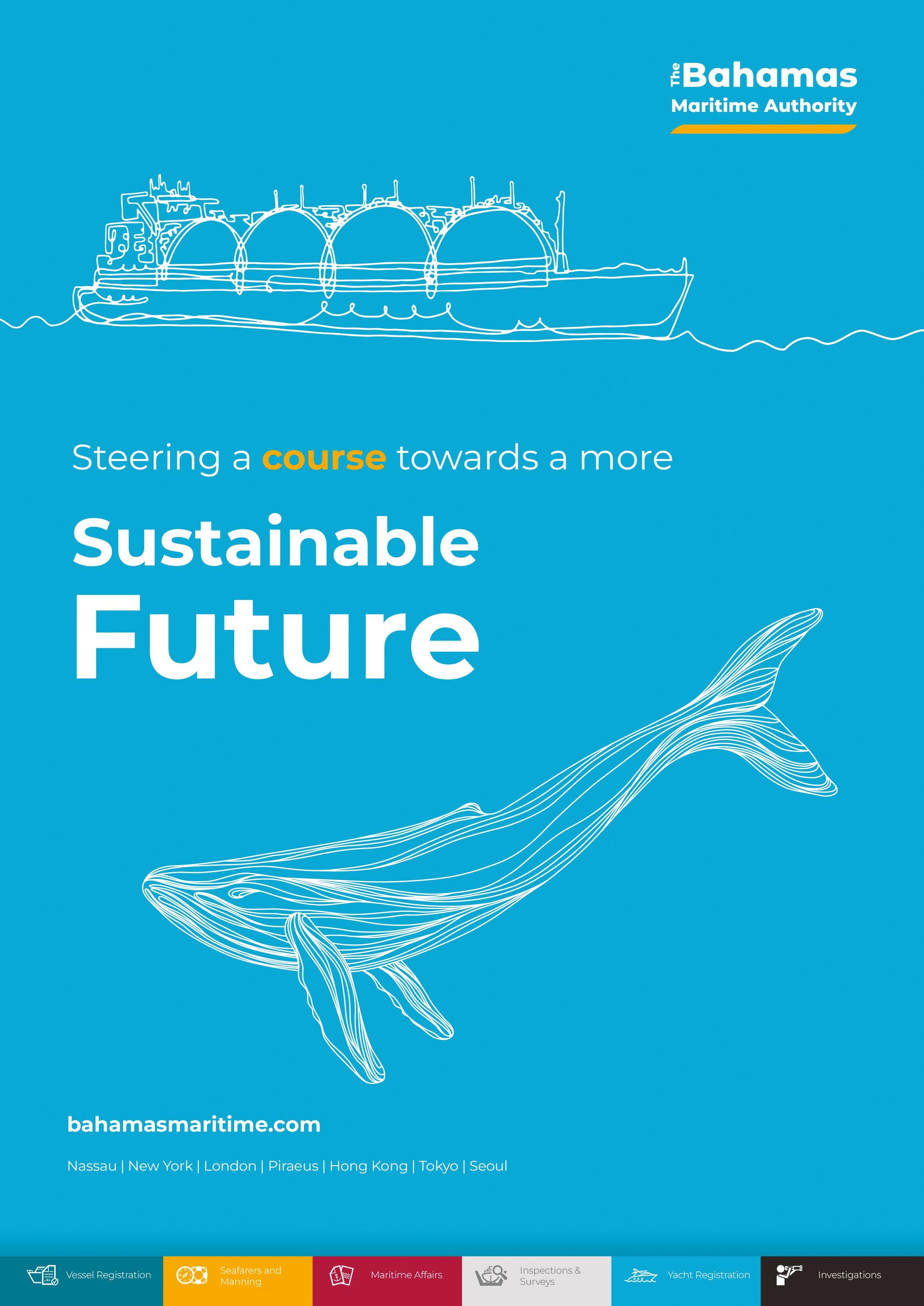
14 Ship Management International Issue 107 January/February 2024 Notebook
Artificial Intelligence as Human Resource
AI can be applied to recruitment and training to overcome shipping’s worsening seafarer shortage, says Yogesh Pasrija, Acting Global Head of Crewing at Wallem Group
For Wallem Group, decent seafarer pay and working conditions are a prerequisite for attracting next generation talent to the maritime sector. It also means that other matters within its control - such as ‘nurturing the talent pipeline’, investing in seafarer wellbeing, competence and career development, and maintaining positive working experiences –become business imperatives rather than aspirations.
Converting these agreed aims into tangible actions demands an understanding that ‘Generation Z’ seeks meaningful, purpose-driven employment, and has different values than its predecessors on work-life balance, opportunities for growth and diversity. Today’s seafarer, for example, discriminates between employers based on connectivity, and will also prefer to work for organisations whose values it shares.
Over many years, Wallem has developed a mature approach to training, based on investing in local centres, collaborating with technology providers, crafting courses at the microlearning level, offering simulation-based and onthe-job support, mentorship and coaching. In doing so, it has not only upheld the highest ESG standards on occupational health and safety but gone on to develop flexible work hours and telecommuting, anti-
discrimination and anti-harassment policies, proactive training to overcome unconscious bias, and enforced supplier diversity. It has also insisted on engagement between senior managers and front-line staff, to encourage the open and collaborative culture on which enhancing ship safety relies and cultivate employee participation in decision making.
What is more, against a backdrop of reporting which sometimes portrays AI and machine learning as short cuts to replacing seafarers, Wallem believes that – used responsibly – these tools can enhance safety management, improve crew health and welfare, and identify, nurture and build maritime talent.
While shipping automation could reduce human error and increase safety, Wallem firmly believes that shipping’s ‘Future is Human’. AI and automation are likely to assist seafarers, but not replace them. Nevertheless, AI’s ability to analyse large datasets of resumes, social media profiles, and other information – for example – may be invaluable for identifying and reaching out to individuals with the skills, experience, and potential to be successful in shipping careers.
Again, AI and ML can be used to personalise the onboarding process for new hires by providing them with personalized training,
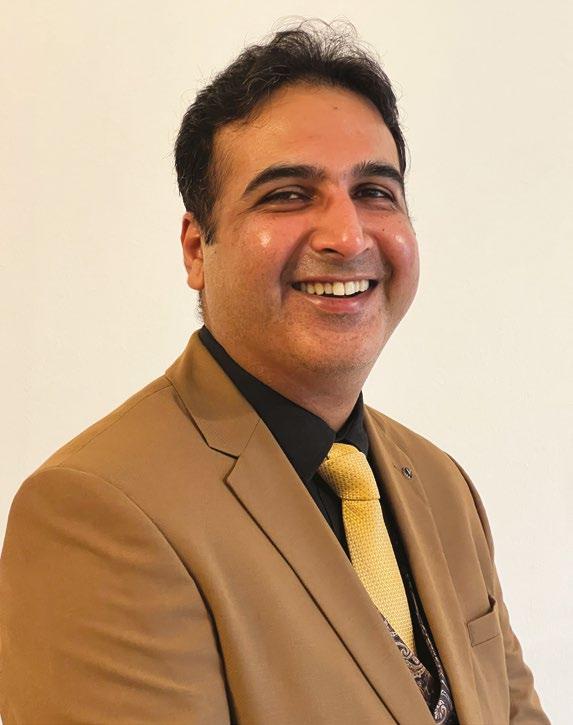
career development and mentorship programs that work at the pace of the individual, also continuously analysing their needs.
At the ‘meta’ level, meanwhile, AI and ML can interpret datasets on current and future work requirements to predict skill gaps in the maritime workforce, rather than simply identifying existing ones. Training and development programs can cover emerging maritime skills issues.
From the maritime employers’ perspective, AI could also be used to analyse anonymised data on employee satisfaction, engagement and motivation, so that employers can respond with initiatives to encourage the more positive and supportive work environment.
The HR professional could even benchmark the effectiveness of his or her own HR initiatives.
There is, of course, an irony in identifying maritime HR professional as a possible key beneficiary of AI.
For Wallem, however, tools which deliver agility in responding to the changing profile of the seafaring workforce and promise to identify candidates best equipped to stay the course can only be beneficial for shipping as a whole. l
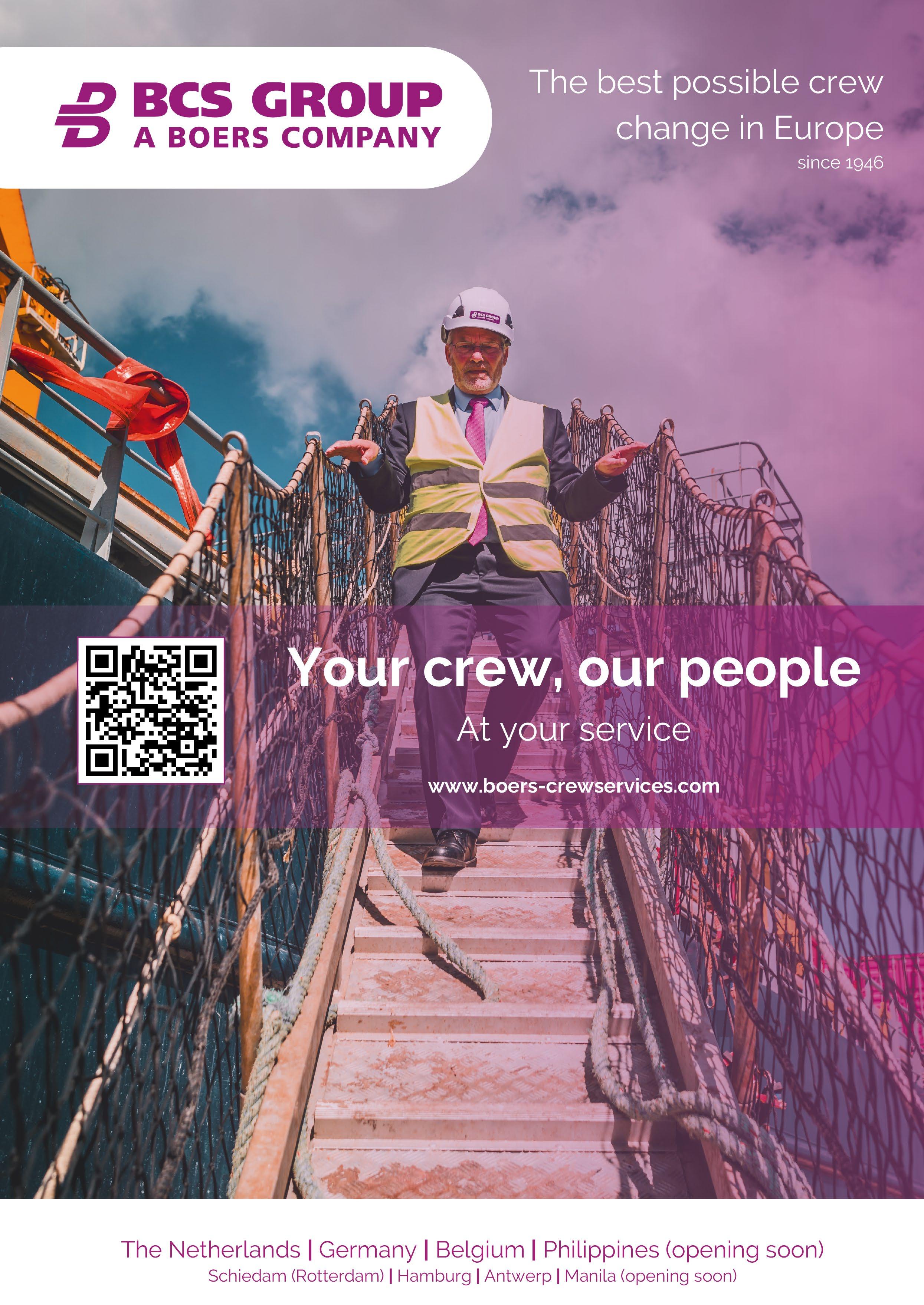
16 Ship Management International Issue 107 January/February 2024 Notebook

InterManager elects new Vice President
InterManager members pledged their commitment to raising standards during the global shipmanagement association’s Annual General Meeting held at the IMO headquarters in London, during which Sebastian von Hardenberg, Chief Financial Officer (CFO) of Bernhard Schulte Shipmanagement (BSM), was unanimously elected to serve as Vice President.
Member companies are currently undergoing the initial self-assessment phase in relation to InterManager’s newly introduced General Principles of Conduct and Action which focus on three key areas: Care and Respect for People; Continuous Development and Optimisation; and Effective Safety Culture.
Leading shipmanagement firms are aiming to complete their self-assessments by April. Periodic and random independent and confidential audit will then follow in the future. They will also guide fellow members on the process which the association has stressed is straightforward and in line with ESG values.
InterManager President Mark O’Neil, CEO of the Columbia Group, commented: “The General Principles
are aspirational and not a pass/ fail situation. They demonstrate a commitment to improvement.

InterManager’s intention is to lead the way on improving standards throughout our sector as we respond to the changing shipping landscape. We expect that shipping landscape to discern between those managers who abide by the General Principles and those who (for whatever reason) do not.”
The AGM was preceded by a dynamic debate between ship owners and managers to consider how to future-proof quality shipmanagement (see later article). It was pointed out that confronting the challenges posed by decarbonisation goals, especially for small ship owners, was “not an easy task” and this could open the door for greater take-up of third party shipmanagement, currently standing at around 20% of the global fleet.
Sebastian von Hardenberg agreed, commented that ship managers “have a crucial role to play. The complexities that we see in shipping are typically good for ship managers.” l

Notebook
EU ETS - bare confusion
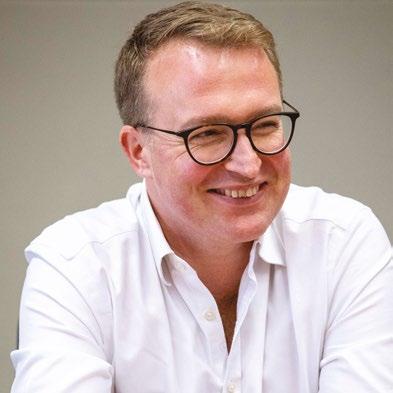 By Robert Hodge, General Manager at ITIC
By Robert Hodge, General Manager at ITIC

In the last edition of SMI, ITIC advised that managers should only become the responsible entity under the system if they were entirely comfortable with the liabilities and risks arising from the European Union Emissions Trading System (EU ETS). This is not just because the liabilities are high for non-compliance – such as fines and penalties – but because the legal position is still uncertain at the time of writing.
The contracted/responsible entity is responsible for reporting emissions and surrendering EU Allowances to the Authorising Authority. The responsible entity under the EU ETS is considered to be the shipping company, which is defined as “the shipowner or any other organisation or person, such as the manager or the bareboat charterer, that has assumed the responsibility for the operation of the ship from the shipowner…”.
The EU Commission’s advice differs from what has been drafted in the law. The Commission has clearly stated that in the context of EU ETS, the responsible entity can be either the registered owner or the company that has taken on the responsibility for International Safety Management (ISM) compliance. The registered owner can transfer the responsibility for compliance by a written mandate, which must be provided to the Authorising Authority. Without such a mandate, the registered owner will, by default, be the responsible entity.
It is highly recommended that you read the “FAQ –Maritime transport in EU Emissions Trading System” page
on the EU Commission website. Here, they clearly state they do not allow a bareboat charterer to become the responsible entity if they are not also the ISM Company. In one example, an ITIC ship manager member advised that an oil major who was the bareboat charterer (not the registered owner) demanded that their ISM manager arrange to transfer the Monitoring, Reporting and Verification (MRV) reporting and the responsible entity function to them. This is understandable as a large bareboat charterer may want to keep the compliance of the EU ETS in-house for their whole fleet. According to the EU Commission, this is simply not possible, and if they tried to mandate the bareboat charterer, it may not be legal, and it will simply snap back to the registered owner.
However, some Authorising Authorities are rumoured to be taking a different position. Some may accept the bareboat charterer as the responsible entity even if they have transferred ISM compliance to a third-party manager. Consequently, if you, as a manager, are asked by a bareboat charterer whether they can become the responsible entity, you suggest they speak directly to the Authorising Authority to find out if it is possible.
ITIC recommends that ship managers should not give direct advice to an owner or a bareboat charterer on how to comply with the EU ETS; it is complex, and the legal position remains uncertain. Owners and charterers should liaise directly with their own lawyers and EU ETS experts. l
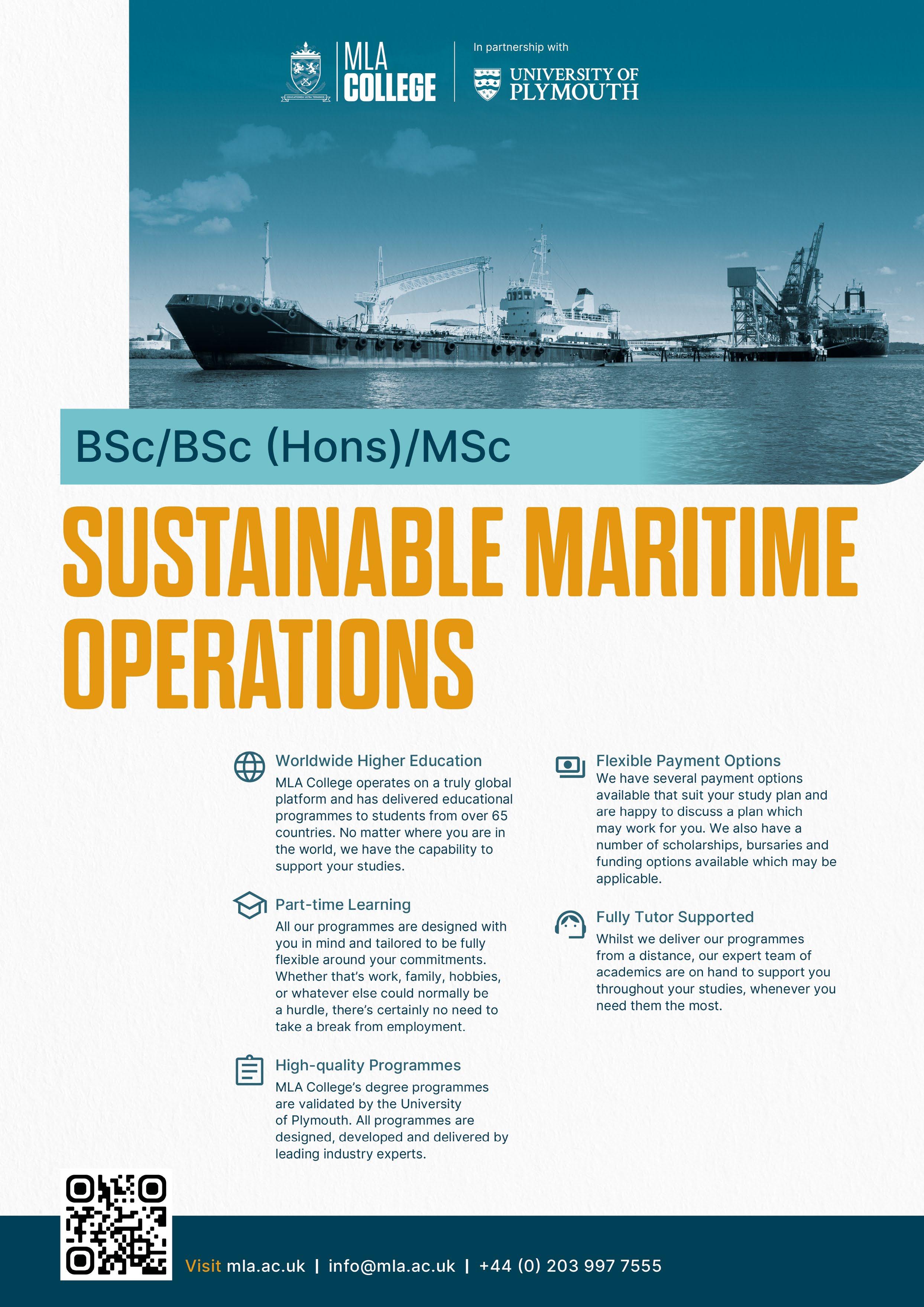
20 Ship Management International Issue 107 January/February 2024 Notebook
InterManager Outlook
Attacks on merchant ships must end now
Seafarer safety, decarbonisation, and raising standards are high on InterManager’s action list as Secretary General Capt. Kuba Szymanski explains
As we write this column our first priority is the safety and well-being of seafarers, particularly in light of the dangers being faced in the Red Sea area. Seafarers conducting their everyday work in order to keep world trade flowing should never be pawns in geopolitical conflicts. The threats and attacks on merchant ships must end now.
We are aware through our member companies, who between them employ more than 250,000 crew, that some seafarers are suffering from heightened anxiety, and we will do all we can to alleviate that. As our President Mark O’Neil points out, the key to this is communication. We must ensure that we prioritise seafarer safety over operational demands and ensure our crew members feel safe, supporting those who are anxious through our own support systems or those of specialist providers. Look after them properly and our amazing seafarers will be incredibly resilient to the pressures and risks around them.
Another focus for InterManager at this time is our General Principles of Conduct and Action which were discussed at length during our AGM in January, held at the London offices of the IMO.
We are privileged to have begun to receive industry endorsements of our ground-breaking General Principles from leading maritime companies who share our belief that the Principles will make a significant impact on raising standards across the shipmanagement sector. As our President commented, we believe fervently in raising the standard of ship management and operation in-house and out-house. Transparent, sustainable, safe, optimised, shipmanagement operated by motivated, well-trained, fairly compensated, healthy and happy crew is not an unreasonable expectation.
We are pleased that a number of member companies are already in the process of completing their first selfassessments, as set out by the General Principles. During our AGM there were many questions about how this confidential process is achieved and I know those companies further along the path will help those following them by explaining the procedures and offering guidance where needed. This is an exciting time for InterManager and we will keep SMI readers updated on our progress.


This year the shipping industry has welcomed Arsenio Dominguez as Secretary-General of the IMO and InterManager was among NGOs who met with him recently. This is a crucial time for shipping as our global industry begins its fast-paced journey towards meeting ambitious decarbonisation goals. InterManager will attend the IMO Marine Environment and Protection Committee (MEPC81) meeting in March where advanced discussions will take place of ‘mid-term measures’ to support emissions reduction in the medium term. The meeting will consider an interim report of the impact assessment that these measures will have on countries across the globe.
Decarbonisation is at the forefront of InterManager’s current work. We continue our effective discussions with the EU to ensure its Emissions Trading System (EU ETS) can be implemented at a practical level to achieve its objectives. As our ship owners prepare for EU ETS registration, starting in March, we have brought to the EU’s attention the urgent need to clarify the role of the “bareboat charterer”.
We are also engaging in communication on the FuelEU scheme, coming into effect on 1st January 2025 with first actionable ‘to-dos’ by 31 August 2024. We have sought confirmation that the responsible party for FuelEU compliance will be the ship owner by default, unless delegated to bareboat charterer or ship manager through a written declaration – in essence the same party registering for MRV and EU ETS. We would be delighted to hear from members or potential members on any of these issues. Get in touch via email: kuba. szymanski@intermanager.org l

22 Ship Management International Issue 107 January/February 2024

First Person Arsenio Dominguez, Secretary-General, IMO
By Felicity Landon
One month into his new role, Arsenio Dominguez, new SecretaryGeneral of the International Maritime Organization, told journalists at a press briefing that a priority was focusing on the image of the organisation.
“We normally tend to be on the news when something wrong happens, an incident or accident. We tend to be compared with other industries, but there is not enough highlighting all the good things that happen,” he said. The IMO is busy working with 175 Member States looking into all of their concerns, he pointed out.
“We shouldn’t just be out there when there is an incident or accident.”
Noting that shipping was more in the news during Covid-19, he pulled out a favourite quote: “No seafarers, no shipping, no shopping”.
At the age of 53, Dominguez is the youngest ever SecretaryGeneral of the IMO – a fact that when mentioned by a journalist appeared to take him by surprise. Asked whether the Red Sea/Suez Canal crisis, Black Sea conflict and Panama Canal drought added up to an unprecedented situation for shipping, he said: “I have been in the job for a month but have been part of this amazing organisation and sector for over 25 years. We have had challenges in the past.
“But it is unprecedented. However, this industry is resilient and continues to demonstrate how it is ready to serve the world and demonstrate that it can reach agreements and bring parties together – and for me, it is a privilege to lead this team.”
Setting out the IMO’s plans and focus areas for the next four years, Dominguez discussed safety, decarbonisation and the environment, supporting Small Island Developing States (SIDS) and Least Developed Countries (LDCs), improving public awareness and image, and enhancing relations with people and stakeholders.
Unsurprisingly, the Houthi attacks on shipping in the Red Sea

25 107 January/February 2024 Ship Management International
dominated the presentation and the Q&A session, and here Dominguez repeatedly brought the conversation back to the perspective of seafarers caught up in the crisis.
Condemning the attacks on international shipping, he said: “The seafarers are innocent victims being affected by this situation. They are doing their daily job in order for all the goods to be transported around the world for the benefit of the whole population – and they should not be targeted.”
He emphasised the need for freedom of navigation and called for the deescalation of tensions; and he pointed out that the focus of news coverage is almost always on trade and the economy. “My first and main message is the seafarers. We need to think about them and what they are going through.”
The IMO has seen an increase in the utilisation of guidance in the Djibouti Code of Conduct, issued when combating high levels of piracy ten years ago; the guidelines are being reassessed because of new threats such as the use of drones, he said.
This prompted a question about piracy increasing once again off Somalia. Dominguez slightly dodged this, saying: “Piracy always has been and continues to be on the agenda of the organisation. The latest information on the global level is that piracy continues to be down when compared with previous years.”
The IMO continues to monitor piracy and whether there is any escalation, he said, while considering whether the current guidance needs updating.
Meanwhile, the IMO is ‘part of the solution’ in the Red Sea. “We continue to engage with the UN Security Council in providing any support. We have the possibility to bring parties together.”
The IMO can provide practical solutions such as exchanging information to analyse risks, assessing additional security, and speaking to the Member States in the region, which are mostly affected in relation to trade. For example,
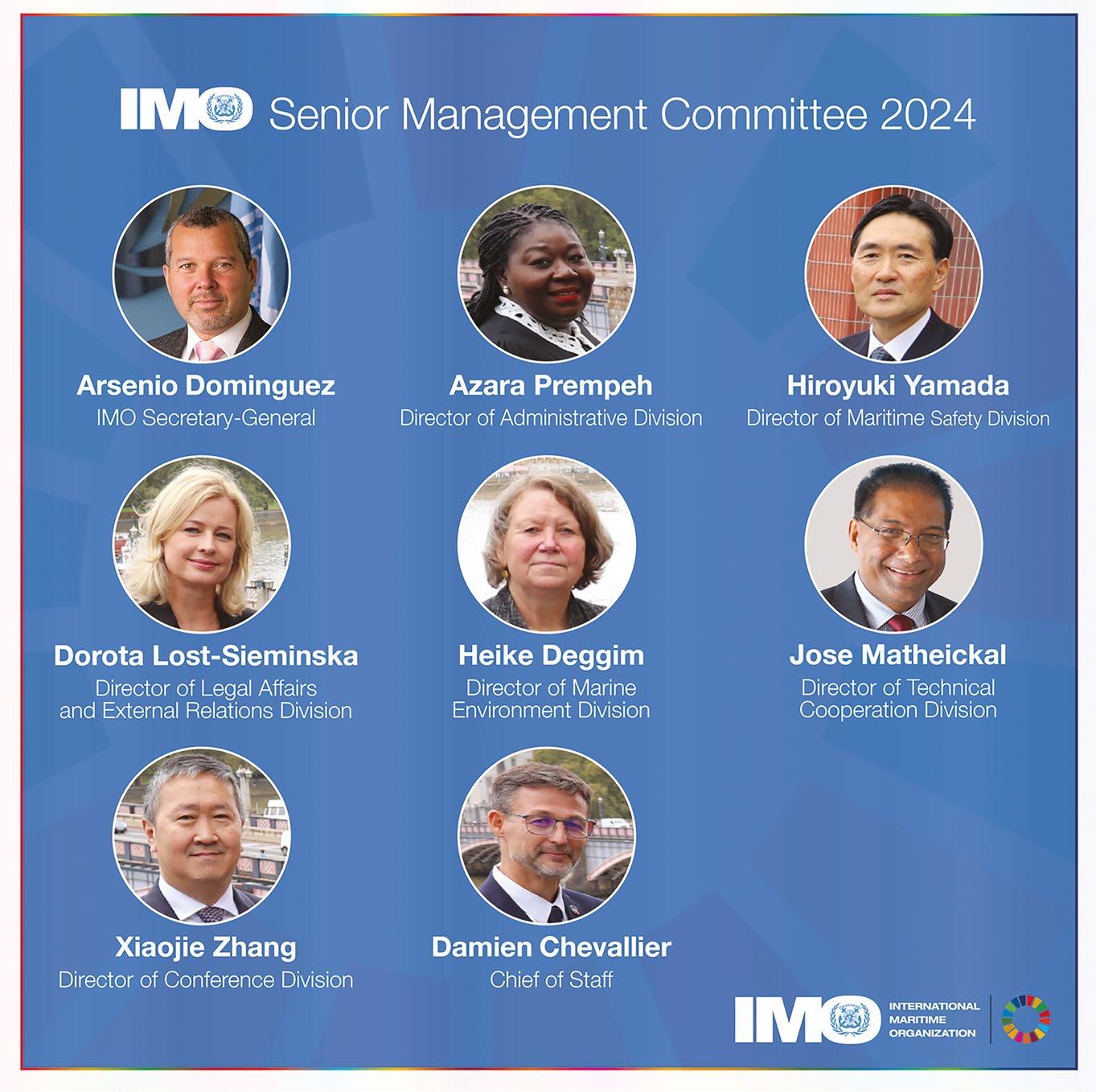
Egypt is suffering the economic impact of the loss of Suez Canal volumes, he said.
Dominguez also addressed the expanding ‘shadow fleet’ of vessels operating around the globe – outside IMO regulations, evading safety conventions and operating without proper insurance cover, while breaking international sanctions. He said Member States have the opportunity to help tackle this issue during Port State Control inspections of vessel, when they have to verify compliance with IMO instruments.
Discussing the GHG Strategy, Dominguez said more needs to be made of the hard work the IMO is doing when it comes to the environment. “Our industry is responsible for 3% of global emissions – less than other sectors, but we have taken it very seriously.”
As well as setting the new GHG goals, the IMO is actively involved in future fuel planning, he said. This includes inviting participants from the energy sector to technical cooperation discussions, and even reminding them that shipping will be needed to transport the cargoes that will be an essential part of the energy transition.
“We had a good outcome from COP28 to transition away from fossil fuels. That also
paves the way for countries to start changing their national strategies for new fuels.”
The IMO will continue to be ‘fuel agnostic’, he said, “but now we have a path to decarbonisation, this forces the industry to create fuel strategies”.
The IMO is also addressing safety standards and the qualifications needed by seafarers in order to handle new fuels, he added, and it is working with other international bodies such as the ILO, ITF and ICS to analyse training and safety regulations and study how to attract seafarers into shipping. “The current situation doesn’t paint the best picture,” he admitted, “and we have an uphill battle to attract seafarers, so we have to enhance the credentials of the industry.”
Shipping is resilient and has been for many years, he said. “We saw it through the financial crisis and the Covid pandemic and we see it now. It is how we face these challenges. It is also important that we continue to regulate shipping for safety and security.”
As for himself: “I am my own person, but I know what has happened [at the IMO] in the past and will continue all the good work my predecessors have put in place, while also looking for improvements in the organisation.” l
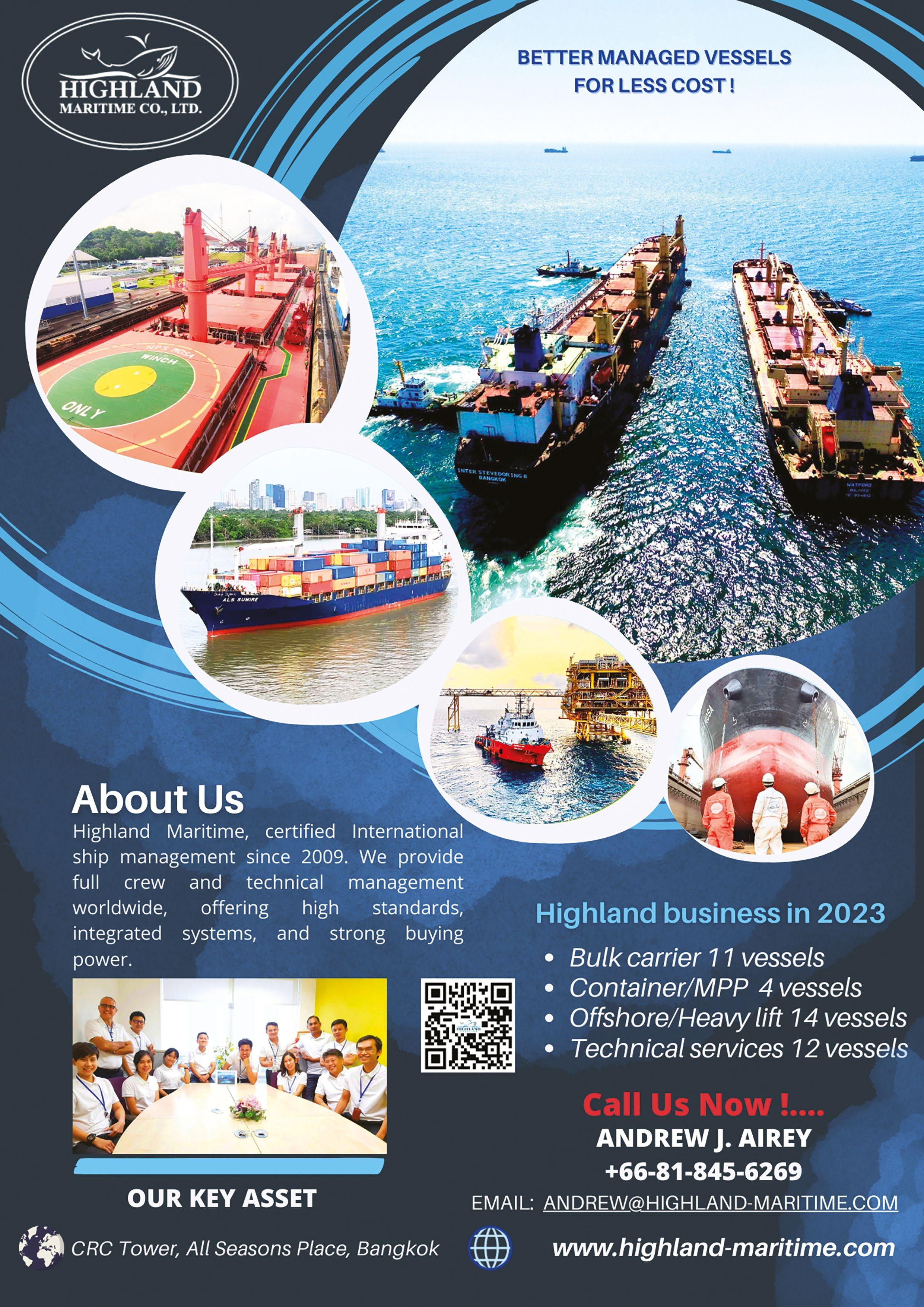
26 Ship Management International Issue 107 January/February 2024 First Person
How I Work
SMI talks to industry leaders and asks What motivates them and how they deal with

Catherine Mulvihill
CEO, IFAN
The International Foundation for Aids to Navigation (IFAN) is a registered UK-based not for profit company that has an operating division in the Middle East Gulf – MENAS (Middle East Navigation Aids Service).
Catherine Mulvihill is the new Chief Executive Officer, having taken up the role in late 2023 after a long a varied career in Maritime.
The aim of IFAN’s work is to promote safety at sea and protect the marine environment. This includes directly and indirectly providing and maintaining navigation aids, safety systems and
the rigours of the shipping industry
information; promoting the use of modern navigation techniques and procedures and other essential maritime skills through seafarer education and training; and supporting and improving all aspects of the marine environment.
“IFAN is the only independent lighthouse authority in the world, providing assistance in the field of maritime safety and protection of the marine environment for the past 100 years,” says Catherine.
Its origins date as far back as 1911 when it was first set up as the authority for aids to navigation in the Middle East Gulf, and parent company IFAN was formed in 2011 to reflect its extended global safety at sea and Aids to Navigation (AtoN) activities.
Catherine lists what she sees as the vital assets that help the charitable organisation fulfil its objectives.
“First of all, the human asset. IFAN employs qualified staff specialised in the maritime industry, including a major shipping, oil & gas managers and others with maritime backgrounds in
international organisations. Moreover, IFAN’s governing Board includes representatives from major shipping, oil & gas companies as well as experienced independents who have sound financial and auditing backgrounds.
“The second asset is a detailed knowledge and long operating experience in the Middle Eastern Gulf, which today is carried by MENAS, a leading innovator in the development, monitoring, fabrication, supply and maintenance of AtoN. IFAN’s operational branch employs top qualified staff, and it contributes to IALA (International Association of Marine Aids to Navigation and Lighthouse Authorities) committees to set international standards in the field of navigation services.
“IFAN also has a long-term experience of funding successful initiatives worldwide – including in the

Pacific region, Asia and Europe - whose objectives are aligned with those of IFAN.
“Finally, IFAN possesses a solid asset represented by its established yet growing network in the maritime industry and, more and more, in international organisations. This allows the Charity to advocate on the importance of navigational services and to take into consideration further funding opportunities.”
Catherine herself has almost 40 years’ experience in the maritime industry, first with a container shipping line then 15 years working in P&I insurance and 20 years working with global insurers handling complex claims in the Ports and Terminals industry. She says she was motivated to join IFAN last August, taking over as CEO in October, “because of its reputation for excellence and the belief that I could bring so much of what I had learnt and experienced in my career to the role. I was also very interested in the opportunity to seek and work with global partners and authorities to help them with projects to provide aids to navigation and help further IFAN’s objectives.”
THE IFAN CEO notes many recent technological advances in the
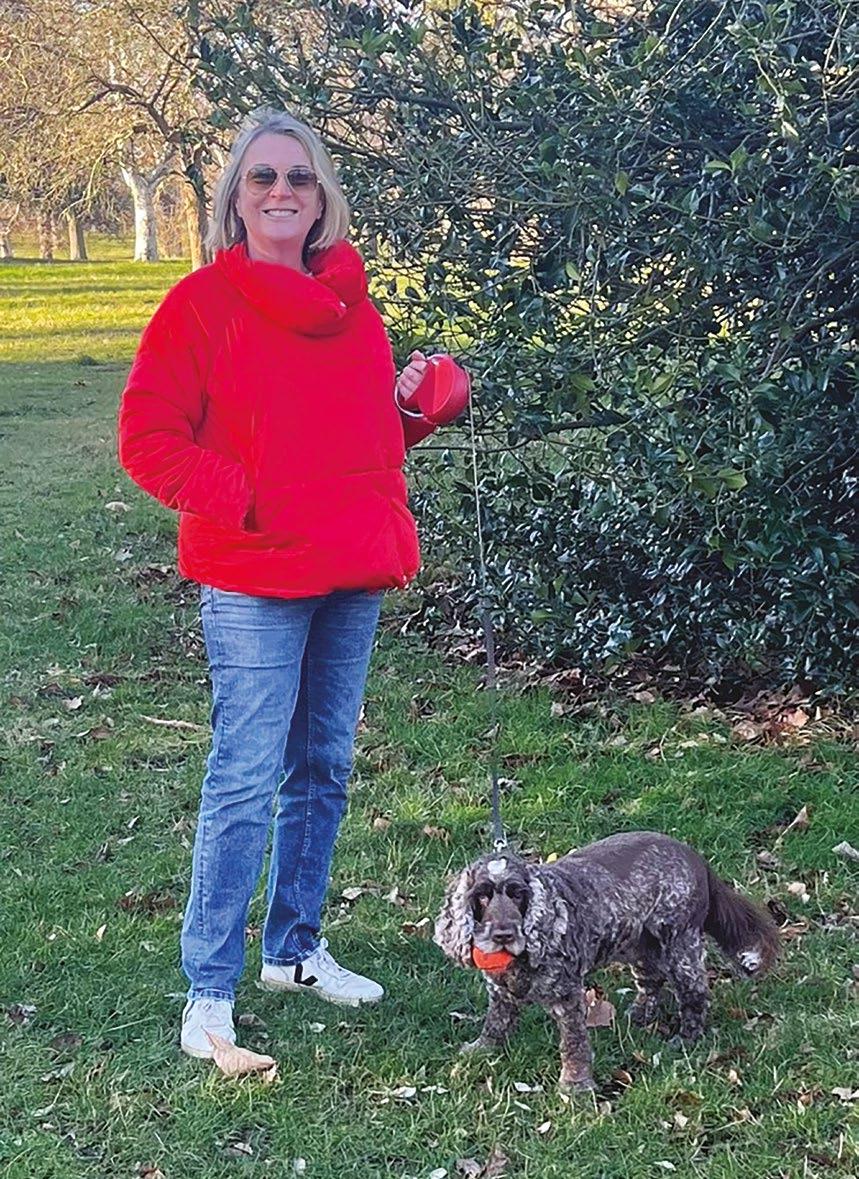
Aids to Navigation sector, including “digitalisation generally, the use of AIS and satellite systems to provide updated information to the mariners (i.e. ECDIS on board vessels and VTS in port control towers) and managing vessel traffic, implementing Risk Assessment to improve traffic in waterways & channels, monitoring the status of AtoNs (buoys, lighthouses).” Plus she identifies e-navigation and autonomous shipping as notable emerging trends.
But it’s important that the human element keeps pace with those technological advances, she feels, saying: “I think that one of the biggest challenges across all of the maritime sector is attracting and retaining talent.”
For this reason IFAN is an active supporter of the IALA World-Wide Academy. IFAN/MENAS also successfully delivered the first Level 3 Aids to Navigation course which was tailored by IFAN/MENAS to familiarise mariners with the main Marine Safety of Navigation services and systems - the first of its kind in the Middle East region -and are planning to deliver L2 Aids to Navigation course for AtoN technicians/Engineers responsible for AtoN maintenance by Q2/Q3 later this year.
MENAS recently had to increase its navigational aid fees (or ‘light dues’) in the Middle East, which was met with some opposition. But Catherine defends the decision, saying: “We have worked very hard keeping the tariff at the same rate since 2006 – indeed, MENAS set its tariff to cover operating costs without making any profit. However, over the past two years the cost of providing MENAS Nav Aids has risen sharply, compounded by the need to replace some major equipment such as DGPS transmitters.
“This, unfortunately, means that without increasing the tariff charge, the income we receive is not enough to sufficiently fund the service, which is vital to ensure the safe navigation of vessels in the Gulf through the provision of Nav Aids.
“Not only does MENAS provide Aids to Navigation, consisting of 54 buoys/ lighthouses, AIS and Racons and sending signals from its 4 DPGS transmitters, it is also the Acting Sub-Area Coordinator for NAVAREA IX, coordinating the NAVTEX service for navigational and weather warning for seafarers and also issuing Notices to Mariners, providing vital updates on navigation changes or notification of works or events. Though MENAS undertakes contract work for third parties, as a way of helping to reduce nav dues to shipowners, all services provided by MENAS are paid for by these dues.”
However, “in the main, the increase has been accepted by the ship operators,” she affirms, “as they understand and appreciate the vital work that MENAS is doing to keep them safe.”
When not attending to her professional duties Catherine says she is “a big walker, which perhaps is inevitable when you own a Cocker Spaniel! I attend the theatre regularly and you can normally find me with my nose buried in a murder mystery - I’m a big fan of the golden age of detective stories.”
Her other “great joy” is as a Liveryman and Court assistant of the Worshipful Company of Shipwrights – one of the livery companies based in the City of London to which numerous senior shipping industry folk belong. There she chairs the Education and Charity committee as well as The King’s Silver Medal Competition where final year apprentices from shipyards, boatyards and the marine supply chain across the United Kingdom take part in the week long Phipps Leadership and Development Programme on Kielder Water in Northumberland. She has recently been elected to the position of 5th Warden.
The 800-year-old livery company’s founding aim of safeguarding the quality of shipbuilding would seem a perfect fit with IFAN/MENAS’ mission of promoting safe navigation - especially in area so vital to global trade as the Middle East, as recent events have shown. l
29 107 January/February 2024 Ship Management International 28 Ship Management International Issue 107 January/February 2024 How I Work
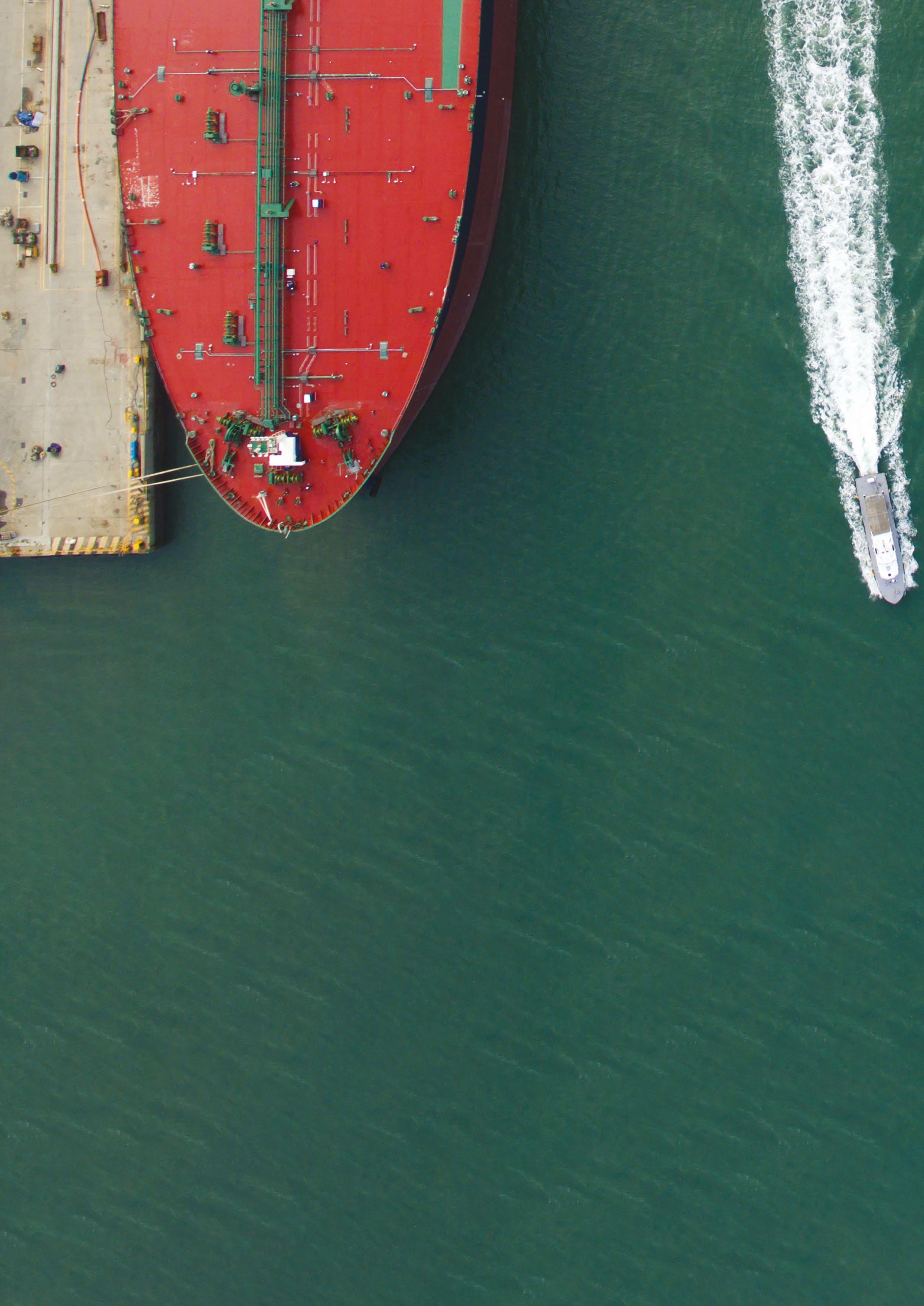
Tale of two mergers:
Dispatches Lowering emissions versus raising fleet size
The last year saw a pair of mega-mergers mooted, to create the world’s largest tanker and dry bulk owners respectively. The former - between Euronav and Frontline –eventually fell through, while the latter – between Star Bulk and Eagle Bulk – still is set to go ahead, subject to the necessary approvals. New York-based Barry Parker takes up the story…
In 2023, shipping investors saw a pair of notable bulk transactions, both involving some of the largest players in their respective sectors which, if successfully completed, would have created new industry-leading players. On the tanker side, following a lengthy and caustic public battle that had included an abortive ‘firm’ agreement to merge, the two party eventually decided to go their separate ways in late November. The parting deal saw Euronav (NYSE: EURN) agree to sell 24 VLCCs to Frontline (NYSE: FRO), in return for which the latter would cede its shareholding in Euronav. The companies thereby remained distinct, seemingly on very different paths.
In the drybulk segment, the talk at festive end-year parties on Wall Street was of the transaction whereby Star Bulk (NYSE: SBLK), with its diverse fleet, would be acquiring Handymax specialist Eagle Bulk (NYSE: EGLE) in a shares-for-shares exchange. Most observers were caught by surprise although later some pointed to telltale clues beforehand where Private Equity investors had been bought out, thereby paving the way for the deal.
The tanker transaction had included a provisional April 2022 merger agreement that later fell apart. The deal was announced just as the tanker market was re-aligning - and setting up for an unprecedented surge - following the start of the Ukraine war.
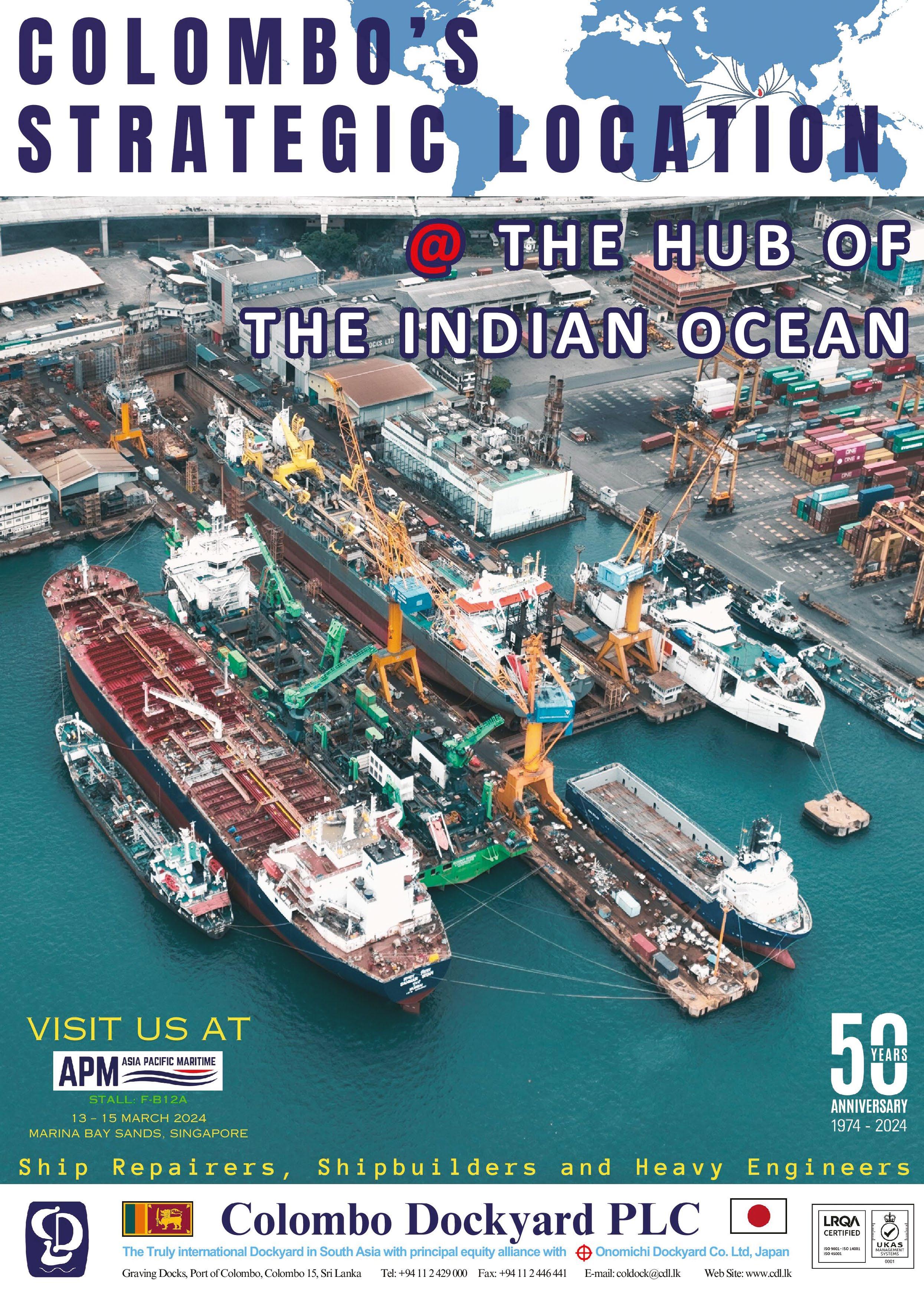
30 Ship Management International Issue 107 January/February 2024
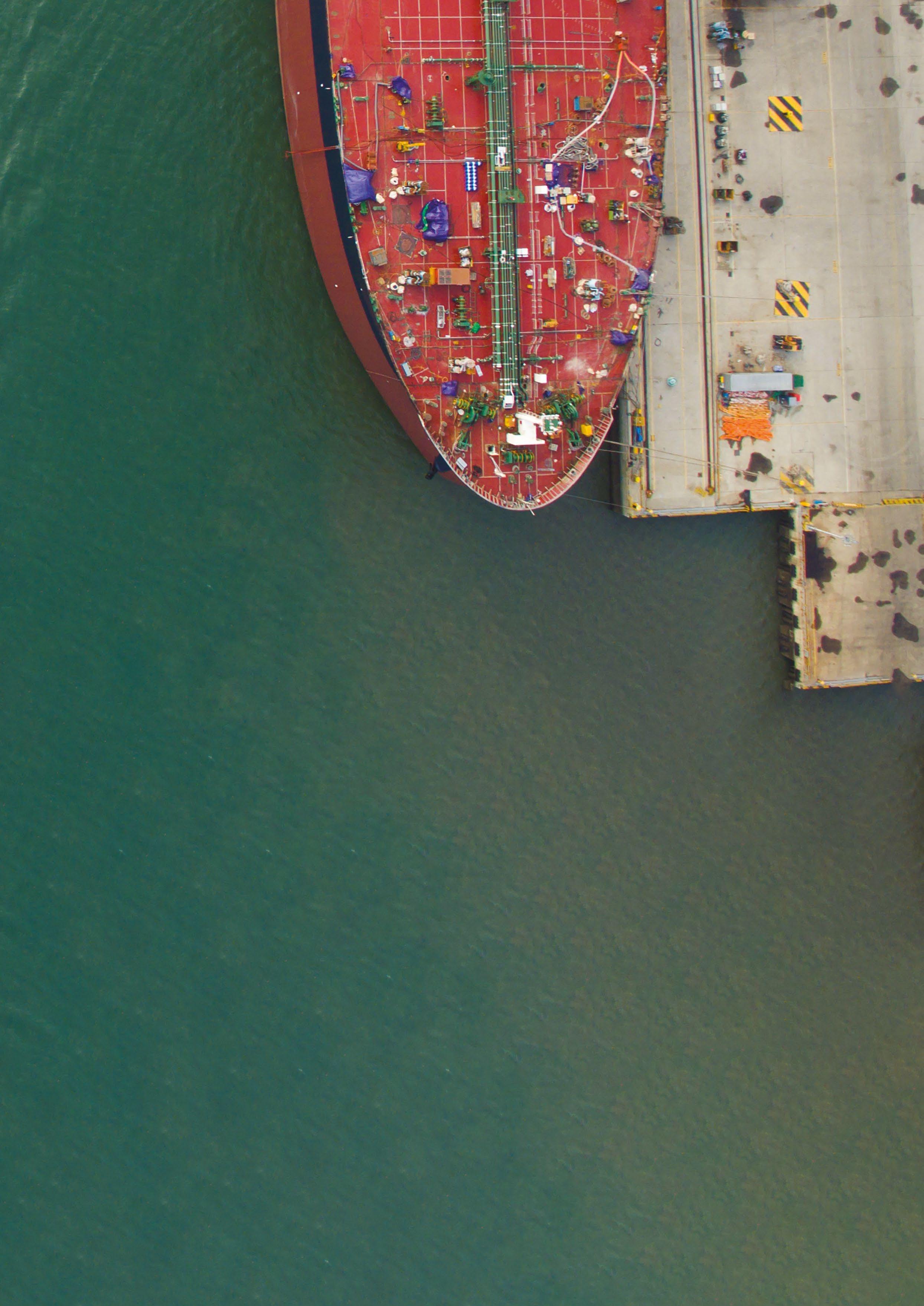
Euronav’s
‘grey to green’
pathway
‘Size Matters’
In a report to investors at the time the tanker merger was first proposed, titled ‘Size Matters’, Evercore ISI analyst Jon Chappell wrote: “The potential combination would add the ~$2.5 billion of EURN shares to the ~$1.8 billion from FRO to create a ~$4.3 billion supersized tanker behemoth in an industry where most company market capitalizations are lower than $1 billion. The proposed merger would provide customary opportunities to realise cost synergies and greater scale of combined fleet tonnage.”
Furthermore, “for tanker investors and for the general investor base globally,” he added, “the potential combination would create a truly investible tanker company with a meaningful and liquid market cap, which would also effectively become a bellwether for not just tanker Equities but Maritime Transportation as a whole due to its enhanced scale.”
However, analyst Chappell cautioned in the same report that tanker (and drybulk) ownership would still remain widely dispersed, noting that shipping is “an industry that will remain fragmented as this merger will not offer material consolidation given the litany of smaller private and public competitors.” (For perspective, some of the household shipping names best known to institutional investors involve much larger capitalisations: the ‘market cap’ for Maersk and HapagLloyd each being around US $29 billion and Cosco some $21 billion as of late 2023).
But the $4 billion+ Norwegian/ Belgian tanker colossus was not meant to be, with Frontline terminating the merger agreement in January 2023 after the Saverys family, through its privately held CMB, had bought up enough Euronav shares to give it effective blocking rights to any merger with John Fredriksencontrolled Frontline.
Differing strategies
Analyst Omar Nokta, at the helm of investment bank Jefferies’ shipping coverage, said it all regarding the two parties’ divergent strategies in a report around that time: “Frontline & CMB have widely different
views of the future, based on public comments: Frontline is focused on large, crude tankers while CMB aims to wind down tanker exposure with a plan to invest in green technology.”
After a few months’ standoff, the parties agreed on a vessel sale - with Frontline acquiring 24 VLCCs (worth $2.35 billion) from Euronav, funding the deal though the sale of its approx. 26% stake in the latter (worth $1.1 billion) at a tidy gain, complemented by debt provided from banks, and insiders.
While it did not create the merged giant originally envisioned, Frontline continued to charm investors with its “high-quality fleet on the water ensuring immediate cash flow generation into the winter season.” Its market cap moved up to north of $4 billion, on its own, two months after the deal was struck.
Euronav, on the other hand, was viewed with caution by analysts and investors over its apparent post-deal strategy of favouring investment in future green projects (notably hydrogen fuelling) over current asset holdings. Famously, family scion Alexander Saverys – later to take over as Euronav CEO in November, 2023 - had asserted several years earlier when touting family-held innovative technology company CMB.TECH that: “We believe that hydrogen is the new oil.” I
In December 2023, Euronav’s ‘new strategy’ was revealed as along with privately held CMB it acquired CMB.TECH for $1.15 billion in cash – roughly the equivalent of a dozen or so modern VLCCs [see also sidebar on p32}.
Dry match
Meanwhile, In December 2023, Athens-based Star Bulk, with a fleet of 124 vessels (including those not yet on the water, circa 13.8m dwt), and Connecticut (USA)based Eagle Bulk (53 vessels, 3.2m dwt), announced that they planned to combine. Star Bulk said it would be using its shares to acquire the outstanding shares of Eagle Bulk.
In contrast to the tanker deal - as much about personalities as vessels - the SBLK-EGLE tie-up was very much a numbers game. Star Bulk’s ex-investment banker
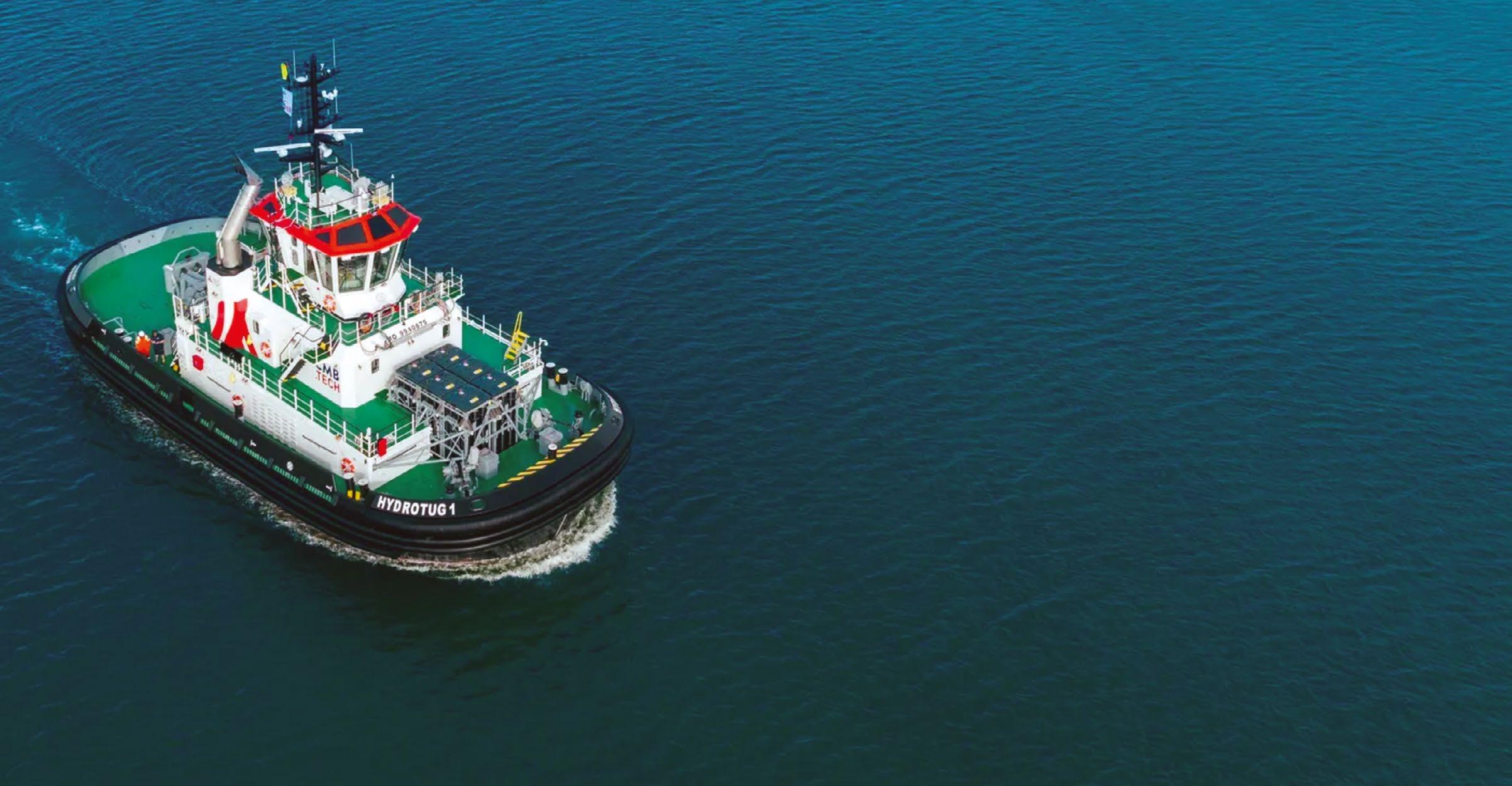
President Hamish Norton (who holds advanced degrees in physics), when queried about SBLK strategies on investor calls, was often quick to point to scientific formulae when asked about vessels’ fuel consumption. Likewise, Eagle Bulk’s Gary Vogel stressed his firm’s formulaic active market management, successfully arbitraging baskets of spot charters, period charters, and Forward Freight Agreements, to out-perform market indices. Normal merger synergies like overhead reductions and operational synergies are also in play here.
After the drybulk deal was announced, analyst Ben Nolan of Stifel wondered out loud if the tie-up portends a new trend, writing: “With the announced take out of Eagle Bulk by Star Bulk, things in the public shipping markets could be about the change. Much of the motivation for Eagle selling is the potential uplift available to shareholders as a function of SBLK shares traditionally trading closer to net asset value (NAV). In this case, at the time of the transaction, EGLE shares were trading at a 39% discount to NAV and the SBLK takeout price brought that to a 22% discount.”
Echoing the thoughts of Mark Friedman, from the investment banking side of Evercore (who spoke about shipping mergers at a November Marine Money conference) Nolan pointed out that: “In the case of many of these companies, they view their businesses as family enterprises and would be unwilling to sell even if it meant an improved valuation for their shareholders. For those companies not encumbered by perceived family legacy, EGLE has drawn a line in the sand and there may not be any more excuses to not consolidate.” l

When announcing its acquisition of alternative fuels innovator CMB.TECH – formerly wholly owned by the Saverys family – in late December 2023, Euronav issued a detailed explanation of how the move fitted into its ‘new strategy’:.
“CMB and Euronav believe that the addition of CMB.TECH to Euronav’s business will enable a flywheel strategy – positioning the group to tap into each step of the energy transition towards low-carbon shipping with a clear vision on value creation for its shareholder,” the company stated. “Euronav’s older tanker tonnage provides excellent opportunities to recycle capital over time into more future-proof, attractive and diversified end-markets and contract types.”
“The largest division of CMB.TECH is the Marine division. It builds, owns, operates and designs a wide range of low and zero-carbon ships powered by dual-fuel diesel-hydrogen and diesel-ammonia and monofuel hydrogen engines: offshore wind support vessels, dry bulk vessels, container vessels, chemical tankers, and others (tugboats and ferries).
“CMB.TECH’s H2 Infra division offers hydrogen and ammonia fuel to its customers, either through its own production or by sourcing it from third party producers. … CMB.TECH’s Industry division [has] advanced technology allowing the conversion of existing diesel engines into dual-fuel and monofuel engines, providing flexibility and cost-effectiveness.”
In mid-January, 2024, the management of Euronav hosted an online Capital Markets Day presentation, detailing developments on the company’s path from pure tanker owner to a to a shipowning entity with a green secret sauce, “creating the reference in sustainable shipping” as new CEO Alexander Saverys (pictured above) put it.
The plan is for the Saverys family to tender for outstanding shares in Euronav, and then fold the company into its already family-contolled CMB.TECH unit (changing the symbol for its trading stock from ‘EURN’ to ‘CMBT’).
The expanded CMB.TECH - to be 53% owned by CMB- aims to offer a “grey to green” pathway for shipping, it was explained, building on the company’s past successes with hydrogen (for smaller vessels) and ammonia (for larger ships). This will involve operating some 101 existing low- or zero-carbon vessels and an additional 53 presently “in the pipeline”, spread across multiple ship types, positioning it “at the forefront of hydrogen and ammonia rollout… and of [establishing] the market for hydrogen and ammonia today for the transportation sector.”
“We have a plan,” said Alexander Saverys. “The strategy is working, and our people are fully behind it. Now it is about execution –operationally and strategically.”
Meanwhile, Frontline has proceeded with its own fleet modernization plan, disposing of its five oldest (14-15-year-old) VLCCs to an undisclosed buyer in Q1 2024. After addition of the 24 Euronav vessels, Frontline will have 84 tankers with an average age of just six years. l
32 Ship Management International Issue 107 January/February 2024
Dispatches 33 107 January/February 2024 Ship Management International
VIKAND launches OneHealth seafarer welfare programme
VIKAND, a global leader in maritime healthcare, has launched a proactive 24/7 healthcare program to help safeguard seafarers and protect the commercial viability of the shipping industry. With the International Chamber of Shipping predicting a global shortfall of 90,000 trained officers by 2026, the industry needs to recognise that to attract new talent and retain the current workforce, it needs to dramatically improve its approach to healthcare for our industry’s seafarers, the company believes.
Launched at the US Embassy in London on February 7th in front of an audience of senior maritime professionals, VIKAND introduced its program, as keeping the current seafarer workforce fit and well is paramount to stem the loss of experienced crew. VIKAND recognises that threats to their health, wellness and safety are often dealt with through reactive and static solutions.
Therefore, VIKAND will offer the maritime industry with tools and insights for taking a more proactive approach to seafarer well-being. The program aims to resolve the industry’s most pressing crew challenge. Mitigating risks to health can lower the shipping industry’s long-term healthcare costs, improve its commercial viability and enhance the sustainability of its global labour force.
The solution, OneHealth by VIKAND, is an innovative program that combines cutting-edge technology with the latest healthcare advancements. OneHealth aims to improve seafarer health and wellness whilst reducing both the risks and costs for operators.
“We are developing proactive healthcare solutions for crews that can reduce mental and physical health issues, improve seafarer morale and achieve higher labour retention,” says Peter Hult, CEO of VIKAND. “It is all

about risk mitigation and looking after the industry’s most valuable assets – its crews. Their health and well-being need to be managed and maintained in the same way an engineer has to regularly maintain a vessel’s machinery to avoid costly breakdowns.
“The same notion applies to crews, where a structured healthcare approach will have a positive impact on a fleet’s bottom line. A quarter of all maritime insurance claims are related to crew illnesses and injuries, and per year 20 percent of ships have a medial diversion of some sort. These incidents cost the industry hundreds of millions of dollars in direct and indirect costs.
“OneHealth by VIKAND promises to optimise crew wellness with anytime, anywhere healthcare support, helping to reduce the risks and costs associated with seafarer health issues. Proactive healthcare support can reduce serious onboard medical conditions by up to 75% along with all the associated costs like emergency medical evacuations.”
VIKAND is a leading expert in global medical services and risk mitigation solutions for the maritime industry, operating a global network of 1,500 maritime medical professionals, established across 44 countries, supported by 4 main locations. its caring and committed teams manage


more than 4,100 daily maritime medical encounters, the company’s all-inclusive approach unifying preparedness, prevention, detection, response, and management across a range of healthcare concerns, from communicable diseases to chronic illnesses, mental health concerns and more.
UK P&I Club trial
Separately, VIKAND has partnered with the UK P&I Club for a year-long trial of OneHealth by VIKAND.
The trial, known as the coLab Project, is set to involve up to 100 vessels operated by UK P&I Club members. Each participating ship will enjoy access to the OneHealth platform, including monthly House Doctor Calls, which takes telehealth to a whole new level. These are comprehensive monthly video calls between VIKAND and onboard leadership to review the crew’s state of health and proactively address any issues.
“I’m delighted that the UK P&I Club has joined this important trial, which will demonstrate how a crew asset management approach can help reduce the number of incidents that lead to claims,” said Ronald Spithout, Managing Director of OneHealth by VIKAND. “It also demonstrates a shipowner’s commitment to making seafarers feel valued, at a time when industry analysts predict a coming labour shortfall.”
This trial will also set the tone for ESG excellence in commercial shipping by positioning OneHealth as a valuable tool for mitigating cost and risk. The goal is to show that investing in health and wellbeing can impact a company’s bottom line no differently than investing in a ship’s engine, hull or any other critical piece of infrastructure.
As Stuart Edmonston, Loss Prevention Director for the UK P&I Club, explained: “The coLab Project aims to show that structural, proactive healthcare at sea can reduce the frequency, severity and costs of health-related claims. Data gathered during this trial could also help create bespoke OneHealth packages for UK P&I Club members.
Sophia Grant, Crew Health Programme Director at the UK P&I Club concluded: “Improving the physical and mental health of crew members is not only the right thing to do, as they are the backbone of shipping operations, it clearly makes good commercial sense through reducing costs, improving productivity and increasing retention. Using digital solutions is a proven route for improving access to vital healthcare services in many other sectors and we look forward to reviewing the impact that the One Health trial has on our members’ crews.” l
Human Element: Crew Welfare Crew Welfare 35 107 January/February 2024 Ship Management International 34 Ship Management International Issue 107 January/February 2024
Peter Hult
Ronald Spithout
Tackling Houthi threat using AI technology
Houthi rebel drone attacks on vessels traversing the Red Sea and Suez Canal route, accounting for 10% of global trade, have exposed the shortcomings of current ship alert systems.
The unpredictability and increased frequency of these attacks have created a challenging security environment for ships passing the area via the Bab el Mandeb strait, posing a substantial risk to seafarers and maritime trade by endangering the safety of the crew and cargo.
Initially focused on Israel-related ships in solidarity with Hamas, the Houthi attacks have now escalated into a broader threat targeting any vessel in the region, with a US-led multinational naval task force, named Operation Prosperity Guardian, mobilised to counter the threat. In the first two months after attacks started on 19 November last year, as many as 27 vessels - mainly container ships and gas carriers - making the precarious passage had come under fire with drones and ballistic missiles from Houthi rebels in Yemen, according to figures from US Central Command.
These new threats have an impact on several fronts: delays
 By Dor Raviv, Co-founder and CTO, Orca AI
By Dor Raviv, Co-founder and CTO, Orca AI
to the ship’s schedule and damage to the vessel itself are only part of the problem. The impact on the crew navigating the vessel, who find themselves in the middle of an attack, is of much greater concern. Drones can strike a vessel without warning at any given moment from any direction, which can trigger fear, stress and panic among the crew and allow them little or no time to safeguard themselves. Conversely, being able to monitor incoming drones would allow early warning to provide precious time for crew to find shelter, attempt an evasive maneuver, or report an imminent attack.
Fortunately, there have so far been no seafarer fatalities as a consequence of these attacks, but the crisis is having a significant impact on maritime trade with companies rerouting their vessels on a much longer route around the Cape of Good Hope - negatively affecting fuel costs and emissions.
FLYING UNDER THE RADAR
Traditional detection systems such as ship radar are limited in their ability to protect personnel, cargo and assets effectively.
In incidents faced by shipping companies over recent months, existing ship technology was unable to track the trajectory of
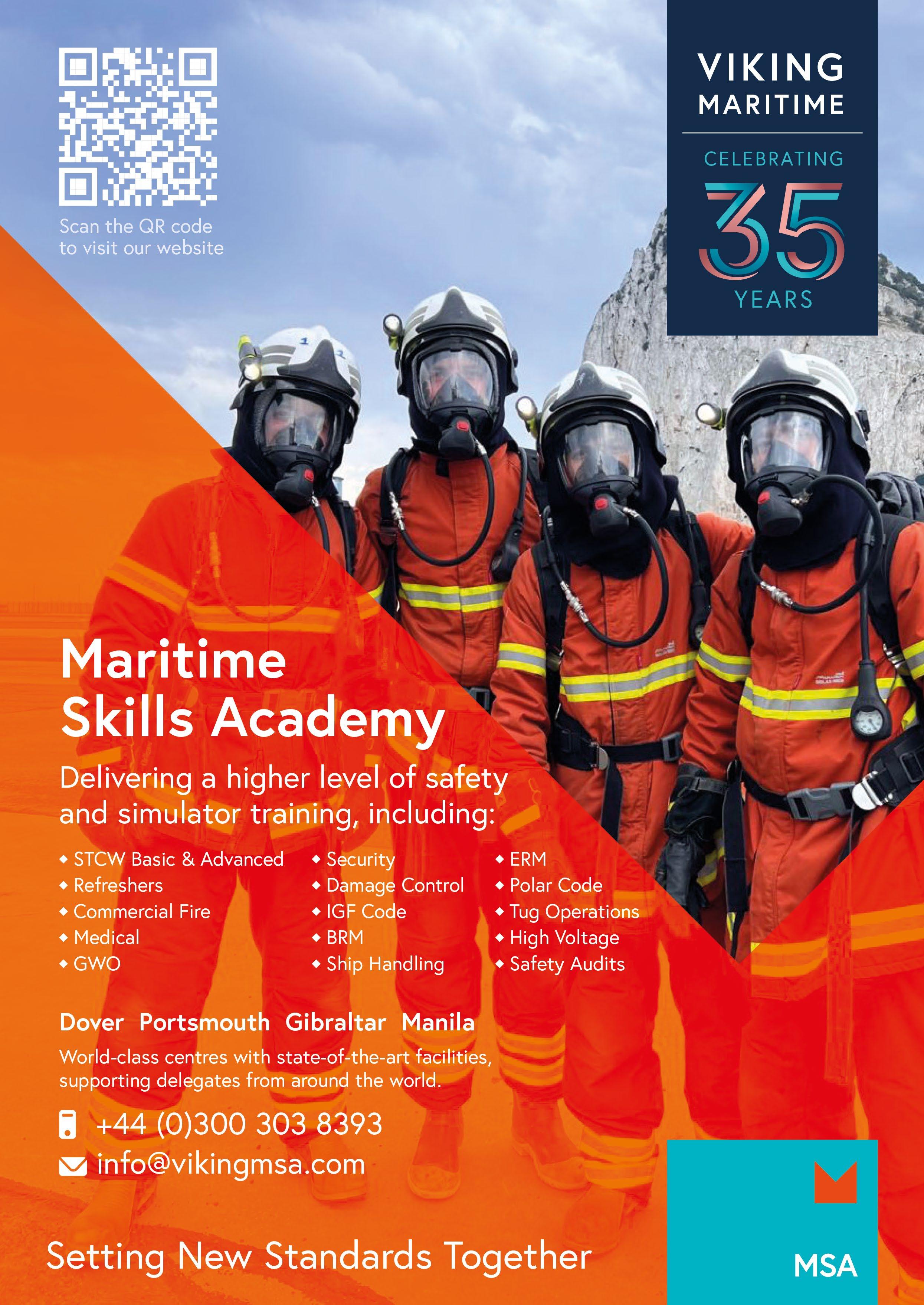
36 Ship Management International Issue 107 January/February 2024
Maritime Security

these small and lightweight drones to give crews sufficient time to react and seek safety.
Unlike missiles, the compact size of Houthi drones, with a wingspan of approximately 4.5 metres and a length of no more than 2.5 metres - similar to a sailboard - poses a significant obstacle for marine radar systems. Considering the height factors, marine radar is not designed to detect such small objects, rendering it ineffective in identifying these drones.
Moreover, the speed of these drones, moving at 200-250 km/h, exceeds the capabilities of marine radar, which typically operates with an average rotation cycle of 2.5 seconds. This limitation makes it challenging to track high-speed targets efficiently. The lightweight construction of the drones using materials like carbon fiber and aluminium further compounds the difficulty, as their low altitudes escape the detection capabilities of marine radar systems, and make them difficult to jam using standard anti-missile technology.
Combined with potential radar clutter, this makes it practically impossible to properly track this kind of target and understand its motion profile based on generated parameters such as distance, CPA and TCPA. Additionally, the inherent inability of radar to classify any target introduces the risk of confusion, making it challenging to differentiate between actual drones and unrelated elements such as sea clutter or clouds.
AI capabilities to counter threat
AI-based target detection can play a crucial role in mitigating drone attacks on ships by enhancing their ability to detect and respond to potential threats. Here’s how AI-based target detection can help address this security challenge:
• Early detection:
o AI-powered systems can continuously monitor the ship’s surroundings, including the airspace and the surrounding waters, using a combination of sensors such as cameras, radar, and lidar.
o These systems can identify and track incoming drones or potential threats, even in low-light or adverse weather conditions, with a high degree of accuracy and speed.
• Anomaly detection:
o AI algorithms can establish a baseline of normal activity around the ship and identify any anomalies or deviations from this baseline.
o If a drone approaches the ship in an unusual or unexpected manner, the AI system can alert the ship’s crew or security personnel to investigate further.
• Classification and identification:
o AI can classify detected objects as potential threats or non-threats by analyzing their size, speed, flight patterns and other characteristics.
o By using machine learning models, AI can also identify
specific types of drones or unmanned aerial vehicles (UAVs) that pose a threat, helping security personnel assess the level of risk.
• Autonomous response:
o Once a potential threat is detected and confirmed, AI systems can trigger automated responses to neutralize the threat or deter it from approaching the ship.
o Possible responses include activating counter-drone measures, such as jamming communications or deploying physical countermeasures like nets, lasers, or even interceptor drones.
• Integration with existing security systems:
o AI-based target detection can be integrated with existing ship security systems, such as surveillance cameras, access control and alarm systems, to provide a comprehensive security network.
o This integration enables real-time coordination and communication among various security measures and personnel.
• Continuous learning and adaptation:
o AI systems can continuously learn from new data and adapt to evolving threats and tactics used by malicious actors.
o This adaptability ensures that the ship’s defense mechanisms remain effective against emerging drone threats.
The AI-powered SeaPod platform, developed by Orca AI, is currently the only maritime tool available that can address this threat. The reliable technology excels in the early detection of small targets, notably even airborne targets, providing timely alerts to crews for actions such as taking cover or recording for evidence.
A notable feature is the platform’s capability to deliver at least a one-minute specific audio warning to the crew before a potential attack, allowing them to undertake the necessary precautions to ensure safety. The platform also provides live video streaming for onshore monitoring and automatically adjusts itself to a specialized mode in geo-fenced regions like the Red Sea, enhancing its sensitivity dramatically.
To conclude, the new reality also requires us to consider a holistic new security approach and broader adoption of new tools and security measures. It’s important to note that while AI-based target detection can significantly enhance a ship’s security against drone attacks, it should be part of a broader security strategy that includes legal and regulatory compliance, physical security measures, and well-trained security personnel. Additionally, the use of countermeasures to neutralize threats should comply with local laws and international regulations to avoid legal repercussions. l
Maritime Security
39 107 January/February 2024 Ship Management International

Ship
Registries have to adapt to constant change
Award-winning journalist Felicity Landon provides this exclusive update (as of mid-February) for SMI on flags’ response to the Red Sea crisis and other major issues affecting global shipping.
“Shipping: you can go to bed one night thinking about one issue and in the morning it all changes.” This comment from Capt. Dwain Hutchinson, Managing Director and CEO of The Bahamas Maritime Authority (BMA), rather neatly sums up the challenges the industry continues to face.
The global financial crisis; the Covid-19 pandemic; Russia’s invasion of Ukraine with associated dangers in the Black Sea; and now the Houthi attacks in the Red Sea, with all the associated dangers for seafarers and their ships, and fallout in operational and financial terms.
How do ship registers respond to such crises and what can or should they be doing?

The Bahamas has been outspoken about the situation in the Red Sea, especially as the car carrier Galaxy Leader, seized by the Houthis in 2023 and with its crew still held hostage, flies The Bahamas flag.
“Our hearts and prayers are still with the crew of the ship. We have been working at a highest level, but including at the IMO meetings, to urge their release” he says. “Our approach is from two perspectives.
“Firstly the human element, we have to start with the safety, wellbeing and security of the seafarers, the people who are just doing their job and find themselves being attacked and held hostages. We continue to call for their immediate release and also that of the ship. Second, it’s back to the broader principle of safe navigation for ships operating worldwide and in this particularly case, in that region. We are still advocating all in that region to respect

41 107 January/February 2024 Ship Management International
Registries
Capt. Dwain Hutchinson
the rights of innocent passage. The region is critical for sustaining the global economy.
“All countries, and The Bahamas as a Small Island Developing State (SIDS) is no exception, are reliant on shipping and whenever there is a major incident that affects ship voyages in any region (such as the current situation and the case of the Ever Given), it has a major knock-on impact for the global economy, logistics and supply chain.”
This is an international issue, he emphasises; all IMO Member States should endorse the principle of the right of free navigation, respect maritime security, and recognise the value that seafarers play.
As well as the Galaxy Leader, a Bahamasflagged tanker recently came under fire in the Red Sea. “They fired into the superstructure, which not only compromised the safety of the crew on board but because it was a tanker could have caused an environmental disaster.”
Collective action is required, Capt. Hutchinson says, pointing out that the Galaxy Leader is chartered by a Japanese company with a Greek Manager, flagged with The Bahamas, its crew are of five nationalities and its cargo was destined for a number of countries.
“We don’t want to only pay attention to ships of one type/country – there is a potential implication for every ship type and all ships should be safeguarded. We endorse the IMO Secretary General’s message that ships should be able to safely and securely undertake essential voyages, to deliver goods for the global population.”
The Bahamas administration will continue to push to keep the Galaxy Leader and the plight of its crew on the radar, pledges Capt. Hutchinson. “This is also about the next generation of seafarers – how do you attract people to this sector that we love when they see that this is what could happen to them?”
From the BMA’s point of view, every ship owner has to take a strategic business decision in terms of where they operate, while making sure they comply with international conventions, take into consideration regional/local requirements and do appropriate risk analysis. However, the BMA has told owners that AIS can be switched off in the region. “There is publicly accessible information to identify the location of ships. From our perspective, we provided guidance to companies to assist in determining whether to turn off the vessel’s AIS if they have assessed that there is a
security threat to the vessel. That way they can reduce the risk of persons tracking them.”
Ships are still subject to Long-Range Identification and Tracking (LRIT) requirements “but that is something we are reviewing”, he says. “Information from LRIT is only meant to be accessible to governments, so by rights that is not an open circuit – but if there is any evidence that it is being accessed by nongovernment bodies then we have to look at our LRIT guidance taking into consideration the convention requirements.”
Meanwhile, the BMA emphasises that any vessel identifying potential risks should record it and report it. “We have the communication and liaison with all the entities in that region. If we do have a contact that a ship is at risk, we would reach out to various forces in that region to see if they can provide support. Overall, we are continuing to monitor the situation in the Red Sea and we will continue to update our guidelines as the situation progresses.”
Shipping always has to be prepared to react to global incidents and geopolitical risks, Capt. Hutchinson concludes. “The industry always has to take into consideration a number of factors to ensure we can still keep our ships operating and our crew safe. Some incidents may be difficult to predict but we at The BMA would make sure we collaborate with stakeholders including drawing from the feedback and experience of our shipowners to identify the risks, participate in the regulatory process and provide appropriate guidance to our owners so they can make decisions accordingly.”
UK Ship Registry
The shipping sector is ‘famously resilient’ and has shown itself to be flexible and adaptable throughout its history, says the UK’s Department for Transport (DfT). While the UK Ship Registry declines to comment on specifics, a DfT spokesperson says: “The UK government continues to work with the maritime industry both nationally with the UK Ship Register and globally to find the most appropriate way to support it.” The government is in regular dialogue with shipping operators “but obviously cannot speak on specific advice we are giving”, according to the DfT. “Information we provide is used by operators to support their own risk assessments.”

Liberia
Shipowners rely on governments, particularly their flag administration, to provide guidance and recommendations, especially as it relates to geopolitical threats, says Alfonso Castillero, CEO of LISCR (Liberian International Ship & Corporate Registry). “For shipping, the flag is the best available resource to assist with dialogues with other governments in order to assist vessels in distress.”
As of early February, at least eight Liberian-flagged ships had reported incidents while transiting the southern Red Sea and Gulf of Aden, he adds.
LISCR has issued a series of marine security bulletins relating to the situation. “Additionally, the Liberian Shipowners Council (LSC) has been bringing the security advisories/bulletins from the
administration, as well as industry guidance, to the attention of its members as soon as it becomes available. LSC also provides guidance from military agencies in the region to its members.”
Shipping has certainly been resilient and quick to respond to recent challenges such as the pandemic, the move to digitalisation, environmental regulations and decarbonisation as well as geopolitical tensions, but in all cases government support is necessary, Castillero insists.
“With the Covid pandemic, governments needed to assist with declaring seafarers as key workers so that they could cross borders and be allowed off vessels for shore time. For decarbonisation, government investment and prioritisation is needed to ensure fuels are available and sustainable. For canal transits, governments need to take action to ensure they remain safe and operational, both from an environmental perspective (Panama) and a geopolitical situation (Suez). In the case of the EU Emissions Trading System (ETS), governments need to implement and provide shipping with complete information on how to comply.
“Regarding security incidents in the southern Red Sea and Gulf of Aden, voyages are well planned in advance, with proper timing of the transit, proper
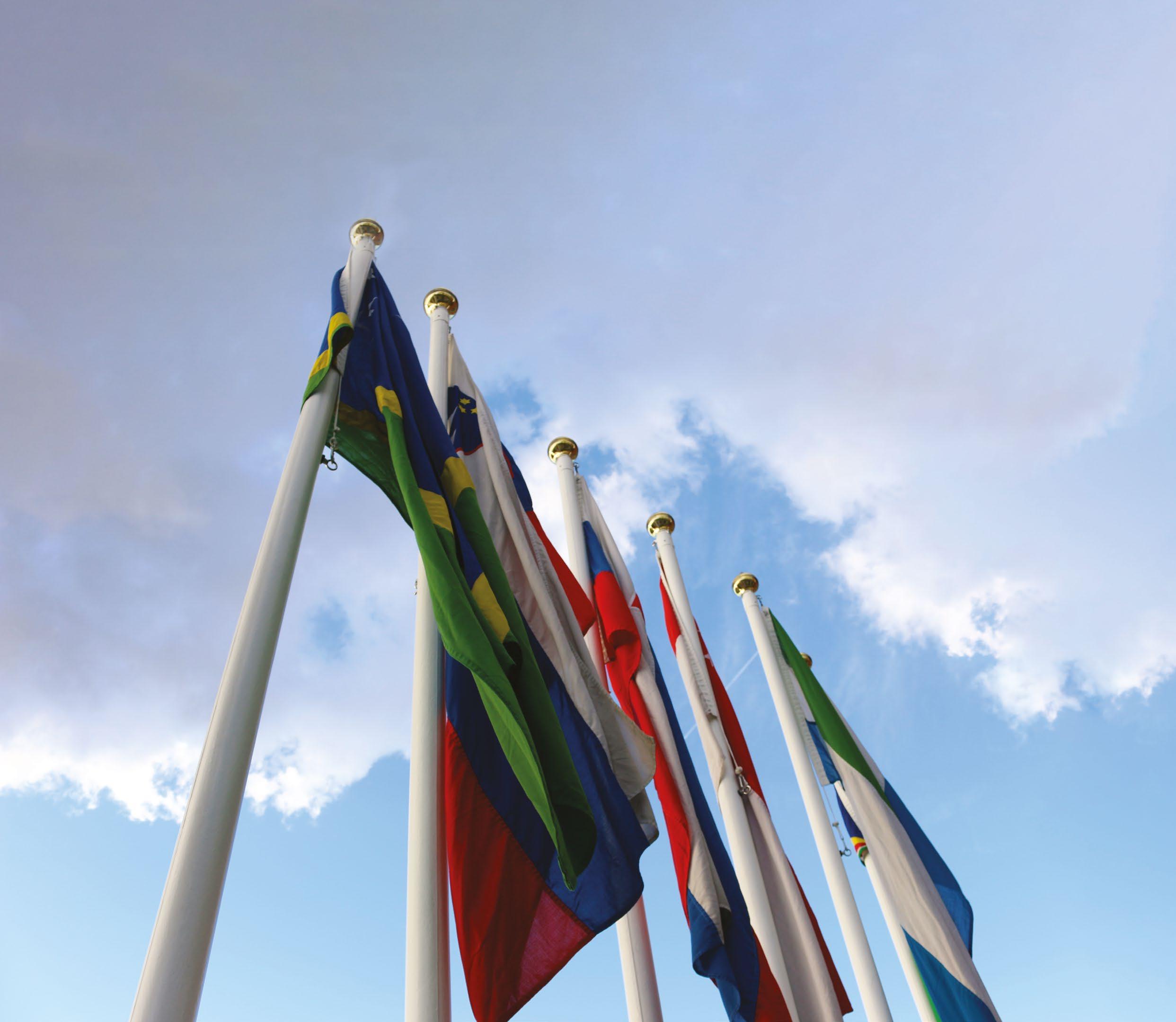
Ship Registries Ship Registries 43 107 January/February 2024 Ship Management International 42 Ship Management International Issue 107 January/February 2024
Alfonso Castillero
notification to coalition forces in the area and proper implementation of best management practices. In all cases, governments need to do their part to ensure safe, secure and environmentally friendly passage while facilitating international trade. Shipowners should not be left to solve these problems for themselves.”
The shipping industry needs more support from the international community, concludes Castillero. “Additional presence of naval assets equipped with anti-ballistic/ drone equipment in the area will deter attacks.” He notes that during the IMO subcommittee on ship design and construction meeting in January, several delegations expressed concerns for the safety of ships and their crew following the Houthi attacks, and commended the Secretary-General’s effort in bringing this to the attention of the UN Security Council.
Marshall Islands
Struck by a Houthi anti-ship missile in January, the Marshall Islands-flagged tanker Marlin Luanda was afterwards on fire for several hours in the Gulf of Aden. Once the fire was extinguished, the vessel, operated on behalf of Trafigura, made its way towards a safe harbour, its crew thankfully all safe.
Bill Gallagher, President of IRI (International Registries, Inc.), the administrator of the Marshall Islands Ship Registry, says: “We are constantly in contact with authorities in the area. We have expanded our security team. Obviously we are also sending out a lot of notifications and guidance to vessels, and there is a lot of monitoring going on.”
“Vessel owners and operators must do what they think fit from their own security perspective, but absolutely we give them the guidance.”
Evan Curt, IRI’s Vice President, Maritime Security, adds: “Our focus is on looking at the threats and what the Houthis are targeting on, and keeping in close communications with the US naval presence in Bahrain and the UK MTO (Marine Trade Operations).”

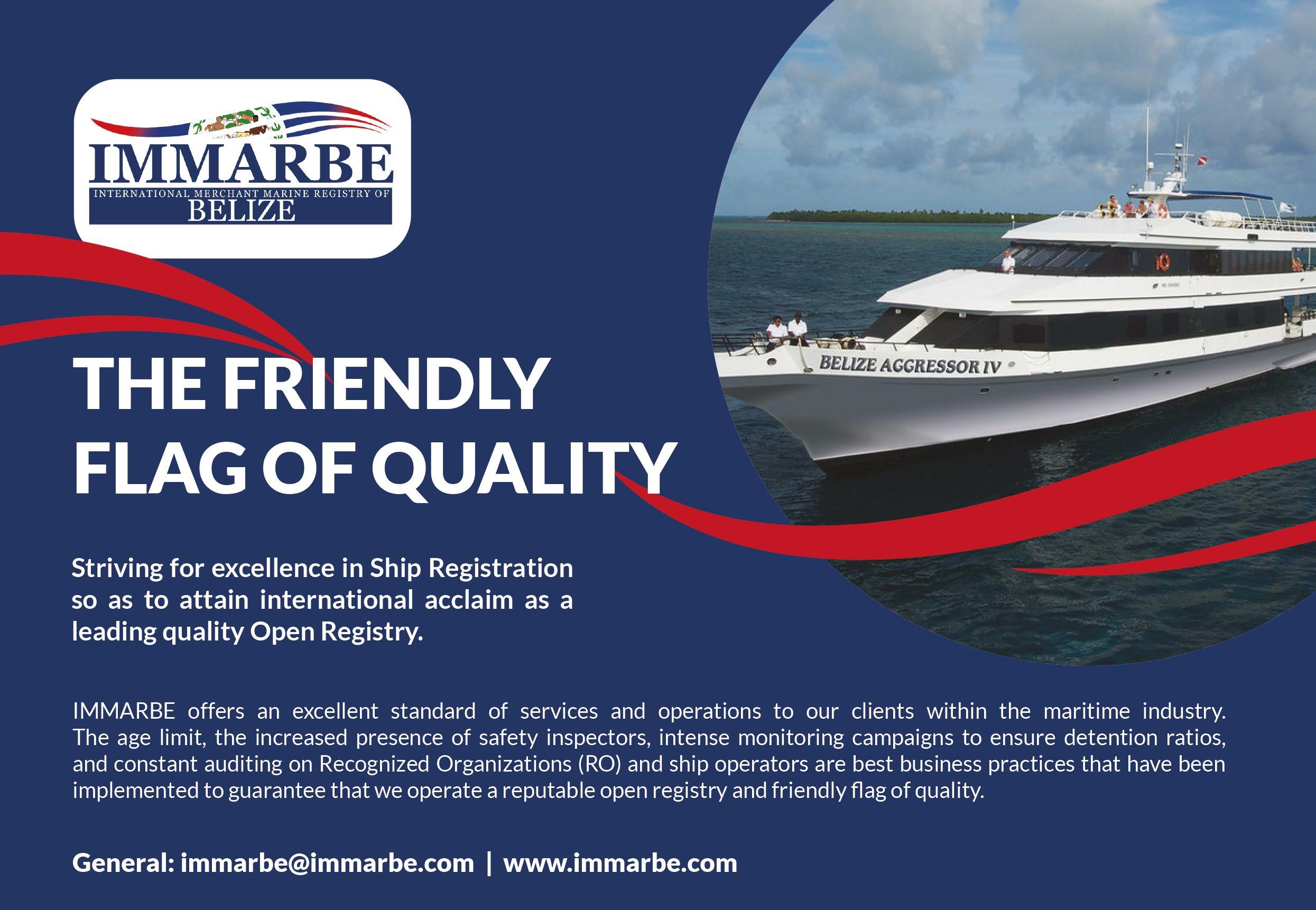

Ship Registries
Bill Gallagher

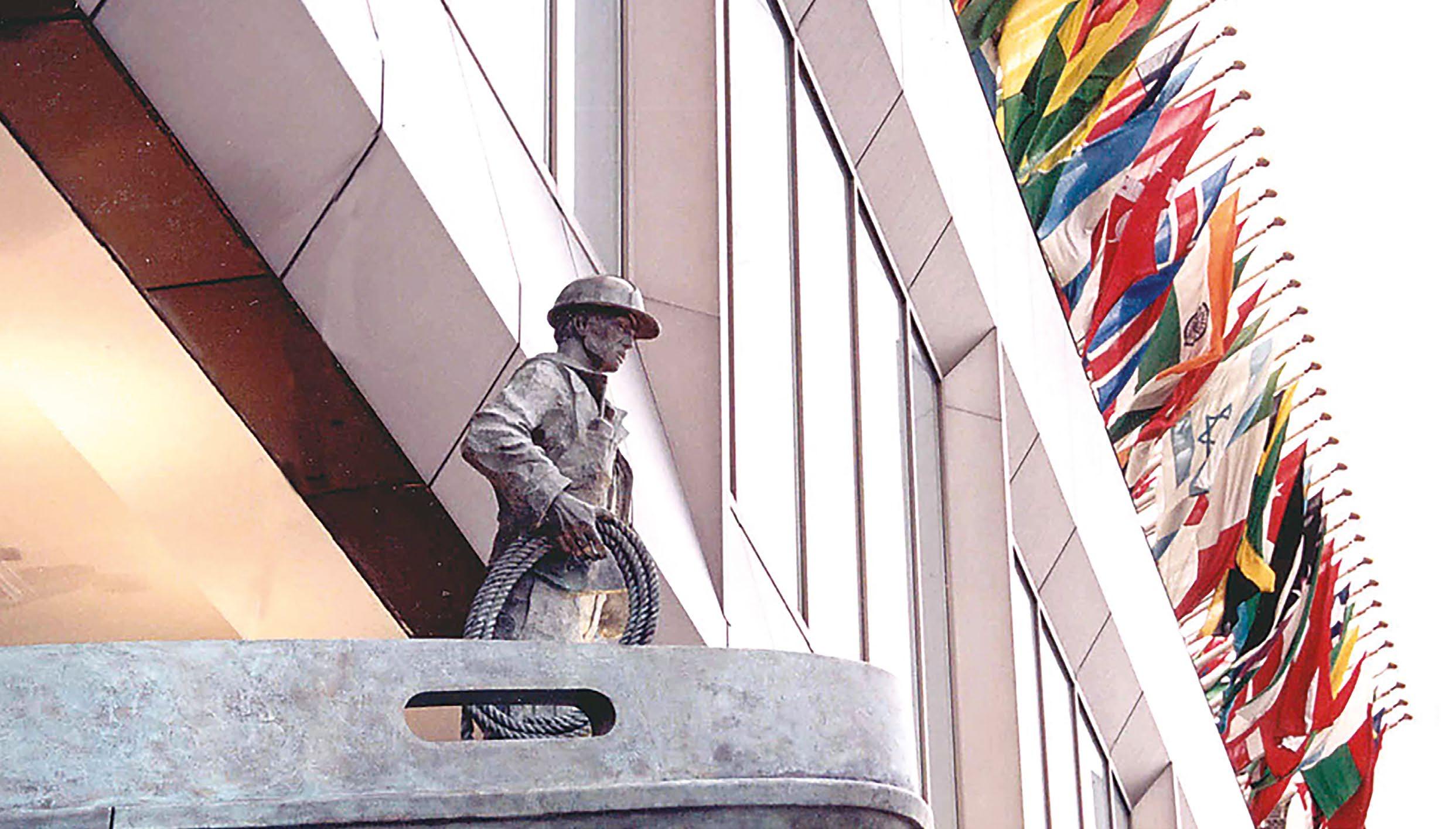
If there is an attack, IRI’s priority is to make sure the crew is OK. “We are immediately in constant contact with the authorities, who are often already monitoring the situation because it’s in a high-risk area,” says Gallagher. “We talk with security officers, the DPA, etc., and help coordinate any communication with naval forces.”
Diverting around the Cape of Good Hope is a commercial issue for shipowners and an issue that impacts on cargo owners, notes IRI. “From the Marshall Islands Registry’s point of view, we are keeping an eye on that,” says Nick Makar, SVP - Maritime Administration and Regulatory Affairs at IRI.
“Part of that decision-making is having to account for additional time at sea as well as additional fuel consumed and things like the EU ETS coming into effect. Also, whatever planning has been done for sulphur emissions requirements has to be refactored in.”
However, he says, the crew is always ‘first and foremost’. “Any additional time has to be factored in and whether there were any plans for repatriation or getting reliefs on board at points on the original route, and whether the diversion affects those plans, has to be taken into account.”
Jamaica
No Jamaica-flagged vessels have been affected by the Red Sea crisis, with none trading in the area at the time of writing, says Rear Admiral Peter Brady, Director General of the Maritime Authority of Jamaica (MAJ).
He too emphasises: “Shipping must remain resilient in the face of all the potential negative impacts caused from recent and future global developments, including the current security risks in the southern Red Sea. Global trade depends on uninterrupted shipping, especially as the world comes out of the negative consequences of the Covid-19 pandemic.”
Asked if shipping needs more support, he replies: “The IMO substantially supports the industry. Recent examples include its participation in the Black Sea Grain Initiative and in the introduction of maritime security initiatives in the past, along with numerous other undertakings to support the flow of trade and the many instances of development to recognise and bolster seafarer welfare and wellbeing.
“A major role for navies is the protection of shipping and more cooperative joint naval task forces can be arranged for the protection of vital sea lanes which are currently, and potentially, under security threat.”
He warns: “Threats to shipping will not only have the effect of driving up the price of goods and services and constricting maritime business expansion but, if prolonged, may see a reduction in the introduction of new tonnage, small operations and leisure activities, thus constricting the market for ship registries.”
Meanwhile, he adds, geopolitically neutral flags will become more attractive in this environment. “The Jamaica Ship Registry sees the current environment as providing a possible opportunity to enhance its product offering and relationships with existing and potential customers. Our optimism is shared by most flags as we hope for a termination of hostilities in the Red Sea region and a return to normal trade.”
Palau
Palau International Ship Registry (PISR) says that so far, the Red Sea situation has not impacted its operations and clients have not requested route changes away from the Suez Canal.
“We keep open communications with our shipowners by issuing frequent security advisories to them. These aim to keep clients well informed with the latest updates and best practices for ensuring safe transit and trade in the region.”
The marine industry is at a critical crossroads, according to Panos Kirnidis, CEO of PISR. “We believe a commitment to transformative strategies is imperative to navigate the challenges ahead and PISR has successfully implemented a culture of innovation to thrive in these highly volatile times.
“At PISR, we strive to be a trusted partner for shipowners, especially amidst turbulent times. We are in the process of being certified for ISO/IEC 27001:2013, the international standard for information security, to demonstrate our unwavering commitment to safeguarding client data.”
The waves of challenge rise and fall and shipping has to be resilient and adaptive to respond to the situation, says PISR. “Once a challenge has been resolved and the industry gets back to some form of normality, another event happens and the sector needs a quick response. PISR helps our shipowners by communicating any implications from a flag perspective as quickly as possible that might need their attention during the situation.”
The global pandemic demonstrated the importance of digitalisation and new technologies within the shipping industry, while the increasing number of stricter environmental issues in shipping contributes to increased
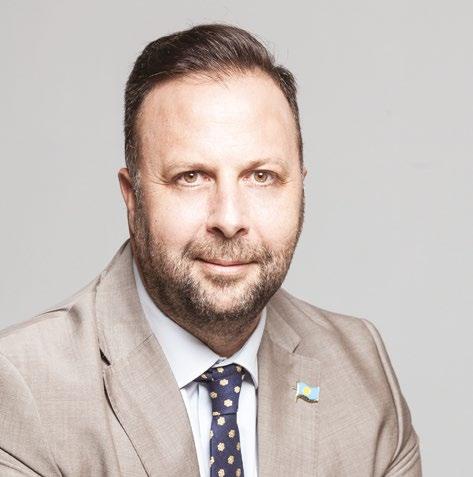
Belize-flagged Rubymar forced to evacuate crew
On 18 February, the Belize-flagged, UKregistered bulk carrier Rubymar suffered what was described as the Houthi rebels’ most damaging missile attack to date whilst carrying a cargo of fertiliser northbound through the Gulf of Aden en route from the UAE to Bulgaria. The vessel was reported to have caught fire, started taking on water and the crew had to be evacuated.
countries together with the USA condemning the actions taken by Houthi Rebels against commercial shipping,” she continued.

“In early 2024, Belize issued a Maritime Advisory warning our shipowners of the situation and have been monitoring our ships in the area.
Peter Brady

The International Merchant Marine Registry of Belize (IMMARBE) Senior Deputy Registrar, Annette Garel (pictured right), told SMI the following day that the Registry had been in contact with the owner of the vessel and was “very relieved to learn that all crew members are safe in Djibouti. They are in the process of launching salvaging efforts after containing the explosive fire onboard the ship.
“On the issue of the escalation and tension in the Red Sea since last year, Belize was part of a coalition of
“The owners of the Rubymar were advised to provide us with updates twice a day when it was observed traversing the Arabian Sea and heading toward the Gulf of Aden in the proximity of Southeast of Port Raysut as they were in a highrisk area.” l
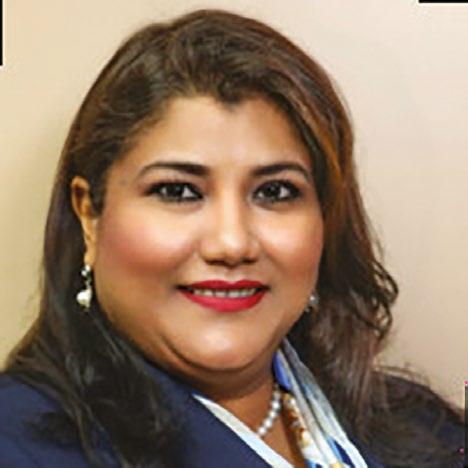
46 Ship Management International Issue 107 January/February 2024 Ship Registries Ship Registries
Panos Kirnidis
Nick Makar
47 107 January/February 2024 Ship Management International
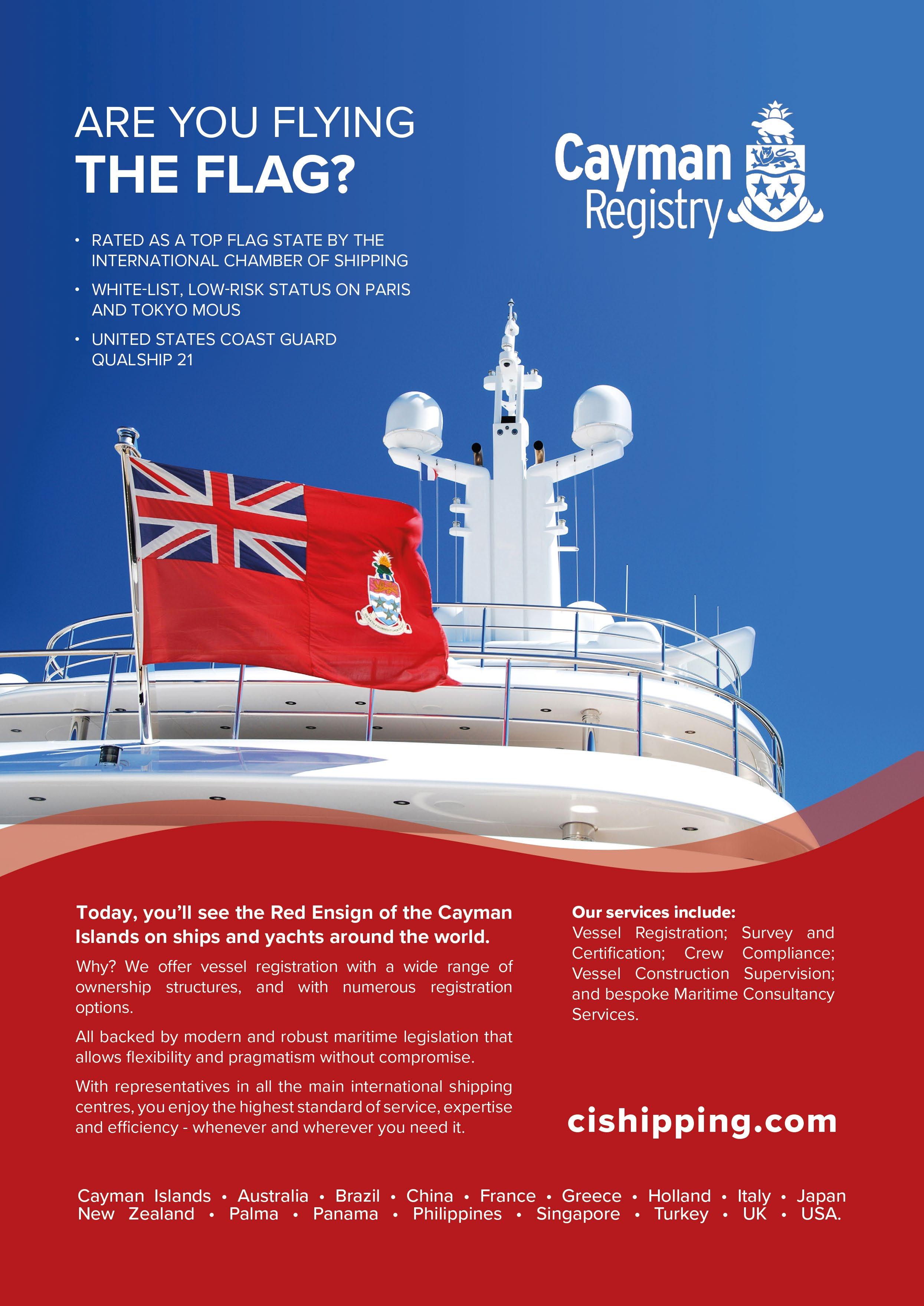
complexity, adds PISR. The registry supports IMO initiatives such as the CII and EEXI: “However, we advocate for a more comprehensive and adaptable system considering ships’ diverse characteristics and operating conditions.”
Gibraltar
To date, no Gibraltar-flagged ships have been affected by the Red Sea crisis, says Dylan Cocklan, Maritime Administrator at the Gibraltar Maritime Administration (GMA – see also Gibraltar report).
“As a member of the Red Ensign Group, we prioritise the safety and security of our clients – shipowners as well as the crews,” he says. “The GMA is in constant contact with shipping operators. We actively provide them with the latest security updates from the UK DfT, ensuring they stay informed about potential risks. Based on this security information, the operators can then proceed to make operational decisions using our information as well as their own risk assessments. Beyond our role as a flag state administration, our access to and support from the UK government further enhance our ability to assist our customers effectively during challenging situations. This collaborative approach allows us to offer comprehensive support to our clients.”
Shipping’s resilience has been evident in its response to diverse challenges, from the Covid-19 pandemic to environmental regulations and recent transit disruptions, continues Cocklan. “The industry’s ability to adapt is commendable, and it can remain resilient by fostering innovation, embracing digitalisation, and collaborating on sustainable practices.”
However, he says, while the shipping industry has showcased resilience, additional support is ‘beneficial’. “Governments, international bodies, and industry stakeholders can contribute through clear and consistent regulations, fostering innovation and facilitating the transition to sustainability. These challenges impact ship registers by necessitating agility and efficiency. Registers must align with evolving environmental and safety regulations and standards, embrace digitalisation for transparency, and adapt to changing regulatory landscapes to remain effective in serving the industry.”

Isle of Man
On the innovation front, fellow Red Ensign flag the Isle of Man has just welcomed the world’s most powerful sailing cargo ship into its fleet. Berge Bulk’s Berge Olympus has been retrofitted with four WindWings and a shaft generator system to supply electric power to the vessel, both retrofits designed to reduce fuel consumption and emissions.
The Isle of Man Ship Registry (IOMSR) described its participation in the project as ‘a testament of shared vision with Berge Bulk as one to lead the industry in a zero-carbon future through safe, efficient and sustainable shipping’. Its Singapore representative, Capt. Raja Ray, says: “I inspected the vessel last year before its retrofit and returning on board, the transformation and the technology behind it that saw was truly amazing.” The Berge Olympus will sail between Brazil and China, a trade route offering favourable wind conditions (see also Isle of Man report).
The Isle of Man Ship Registry’s Capt Raja Ray right with Gurpreet Sandhu of Berge Bulk onboard the Berge Olympus

Panama
Meanwhile, the Panamanian Ship Registry says it remains the world’s largest flag with 8,540 ships and 251.1m grt in its fleet at the start of this year. This represents 16% of the world fleet, it states, having grown by 83 vessels and 7.2m grt in 2023. During last year, the registry cancelled 161 vessels totalling 1.28m grt and with an average age of 17 years. Nearly 80 of these ships were related to issues of unreported and unregulated fishing.
‘Registry vision’, projects and expectations, figures reported as a result of the State Port inspection plan, maritime accidents, RO audit plans and improvement actionswere among the issues addressed at Panama Maritime Authority’s annual meeting with the managers of 32 Recognised Organisations working with the administration. It enumerates “decarbonisation, the economic downturn, the decrease of new constructions, aging of the world fleet, the instability situations of the economic blocks and great powers and the situation in the Red Sea and others” as the main challenges facing it and other Registries.
49 107 January/February 2024 Ship Management International Ship Registries
Dylan Cocklan
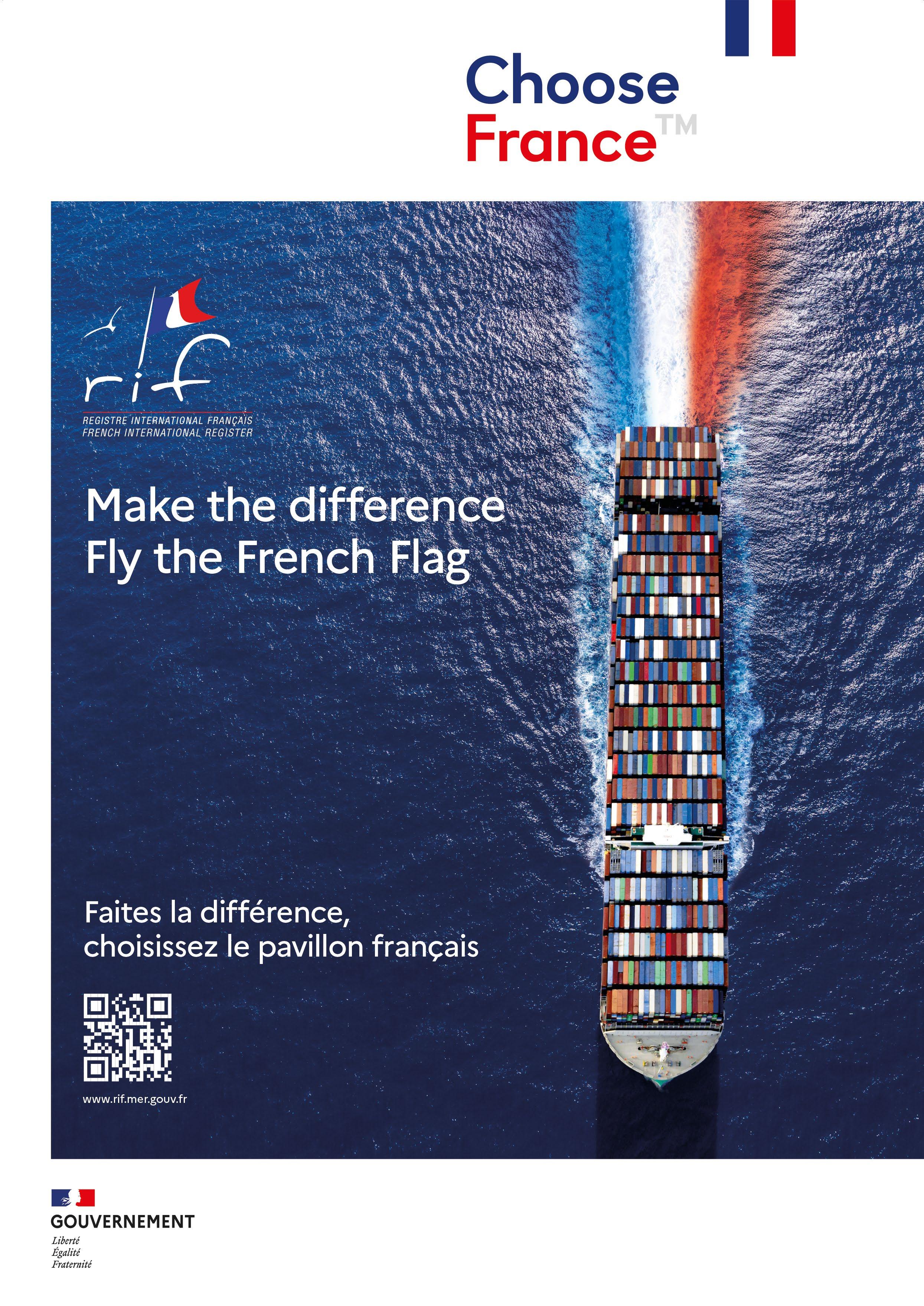
Regarding the Red Sea crisis, the PMA has issued a latest circular strongly recommending all Panama Flag Registry vessels to take all security measures and avoid transiting the Red Sea if possible, or otherwise implement security level 3 or equivalent port security measures in the surrounding areas and maintain communication at all times with UKMTO and the Central Command of the USA Naval Forces.
It provides a detailed list of specific shipboard recommendations that can be found here: https:// panamashipregistry.com/wp-content/uploads/2024/02/ MMN-03-2024-RED-SEA-20-02-2024.pdf .
The Authority further stipulates that “All vessels hoisting the Panama flag before, during and after transiting the Red Sea, Gulf of Aden and Persian and their approaches must keep the automatic identification system (AIS) and LRIT on except in those cases in which the captain consider that the safety of the vessel could be compromised or when a safety incident is imminent. In accordance with the provisions of the International Convention for the Safety of Life at Sea (SOLAS), VHF Channel 16 must also be monitored and communication maintained at all times with the naval
forces in the area and with the PMA, and report any incident or suspicious activity as soon as possible.
“In case the Captains/Ship Security Officers (SSOs) and the companies decide and consider the shutdown of the aforementioned equipment, they must notify and report the status of the ship and its crew every 4 hours via email to nardila@amp.gob.pa and isps@amp.gob.pa .“
In light of the above, the Administration urges all shipowners, operators, Company Security Officers (CSOs) and SSOs to verify that the LRIT System and AIS are functioning correctly at all times, in order to continuously send vessel positions. l

Ship Registries

Regional Focus Gibraltar: Planning with certainty in mind
If there is one thing that is certain about the post-Brexit political future of Gibraltar, it is the total uncertainty of it all.
With Spain pushing for a deal that they insist must include the joint control by London and Madrid of the disputed territory’s local airport, London is determined to refer to it as ‘use’ of the airport, not control. And there lies the conundrum.
Indeed, when questioned by SMI, the Rock’s new Minister for Maritime Affairs Gemma Arias-Vasquez, said the Government was operating to two scenarios: one for a negotiated treaty that benefited Gibraltar, and one for a non-negotiated outcome.
“This isn’t the first time we have been in this scenario, we are fairly used to dealing with adversity. We are very malleable and will always find the best way out of a situation. Whether we get
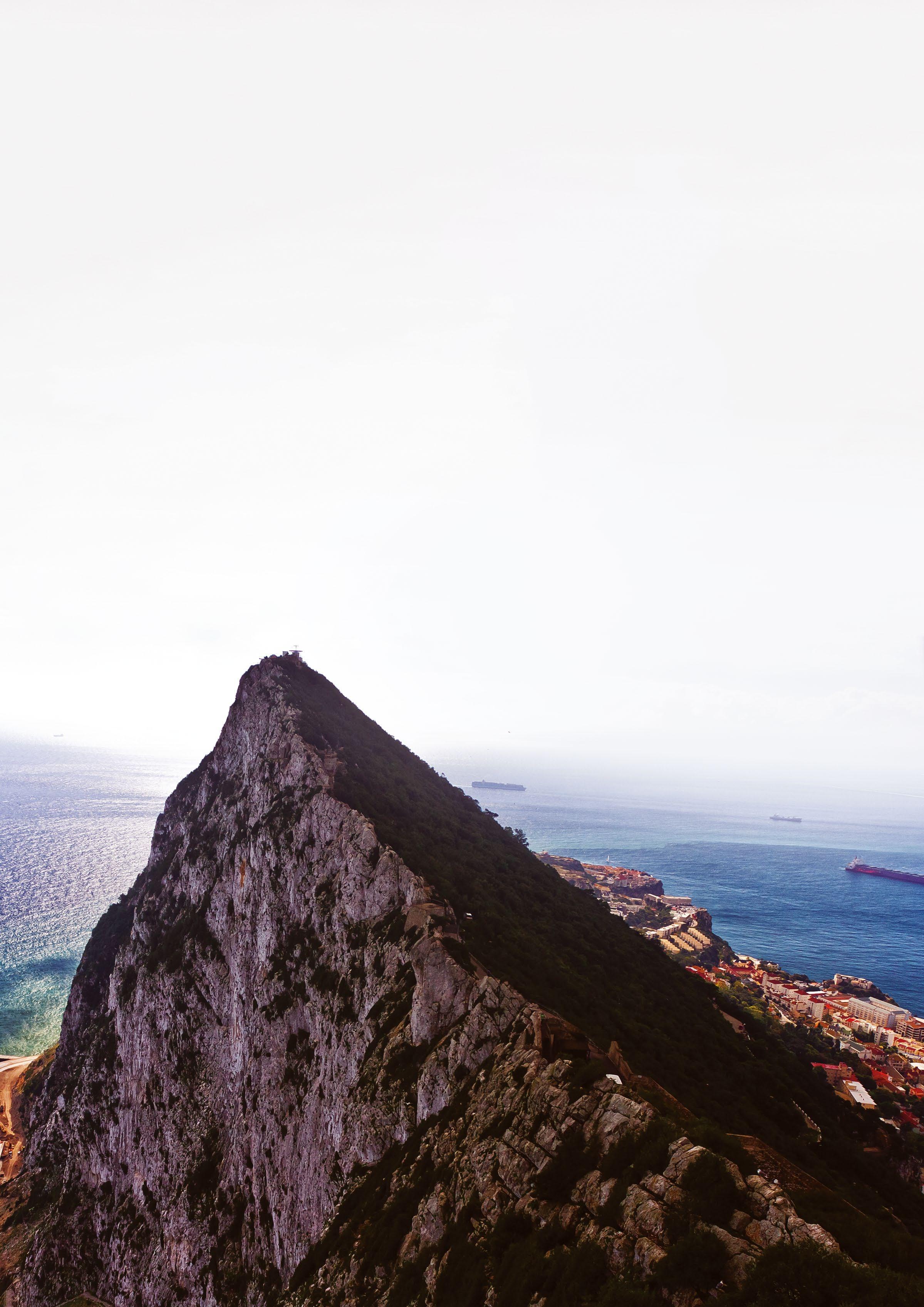
a deal or not, Gibraltar will forge its way ahead,” she said.
And according to the Minister, the best scenario is clearly one where there is flexibility and transparency. “But even when you have freedom of movement, there will always be problems,” she said.
Currently approximately 15,000 Spanish citizens cross the border every day to work in Gibraltar, and they queue up, sometimes for hours, to return home in the evening. It is not uncommon for restaurant or shop staff to plan the time
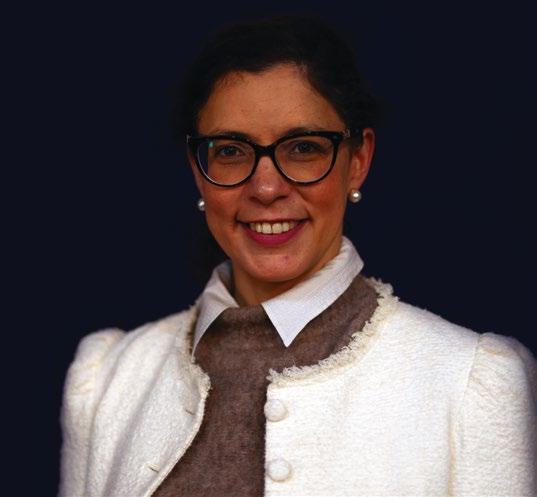
53 107 January/February 2024 Ship Management International
Minister Gemma Arias Vasquez
they leave in the evening by browsing the border app which shows the extent of the queues.
“The desire is always to have freedom of movement at the border and to have prosperity in the area and a government that we can work with in our neighbouring jurisdiction,” she added.
And what of Gibraltar and the opportunities for growth?
The Minister’s response was somewhat surprising: “I think we have a great product to offer which hasn’t been marketed enough over the years. Geopolitically, we’re perfectly placed where we already offer a lot of maritime services, so we’ve got the shipping agents, we’ve got the port agents, we’ve got the flag, and the bunkering and ship repair, but it’s about tying up all the ends and marketing it as a product. That is what we haven’t been particularly good at doing as a jurisdiction, so it’s about picking it up and showcasing to the world exactly what it is that we have here. As well as the benefits of having your vessel registered in Gibraltar and having a company that’s registered in Gibraltar.”
There are rumblings that Gibraltar could position itself as a strong contender to accommodate the world’s ship managers, something that is not outside of the gaze of the Minister.
Indeed Raymond Triay, Partner at the Gibraltar law firm Triay, said: “We’ve had a couple of enquiries from ship management companies in Hong Kong to possibly come here but one of the main issues that bothered them as the uncertainty of the border, because the uncertainty over the border would affect their ability to hop on a plane. At least Malaga, which is only an hour away from here, is very well connected,” he said.
Coming from a legal background, the Minister is aware of the importance of financial services, and the Government, together with the flag, the port and representatives from the maritime services sector, have visited London and Greece to sell Gibraltar’s strengths to these important markets. “We visited these jurisdictions to tell our story, to outline what we have to offer and explain why it is different and better than other jurisdictions. It is all about doing this exercise consistently.”

So, what is Gibraltar’s unique selling point? The Minister again: “Well the flag benefits from the fact that we are a commonwealth common law jurisdiction, where our registration, our mortgage system and our legal system is based out of the UK, which is good. It is also an easy place to arrest a ship because there are established procedures here.
“You can register a company here in Gibraltar where the taxation rate is 12.5%, and considering that Gibraltar is a main bunkering area, there are also great port operator services here and great training programmes now available through the University for the maritime industry, it all starts to come together to establish a great product,” she said.
When you have growth on your mind, you have to look at areas where you can invest in, and the Government is looking at new areas such as super yachts. But what about Brexit and its impact on services such as the flag?
“The press has been full of treaty talk for the last number of years, and we’re constantly being told it’s around the corner, but the reality is we have no idea,” said Guy Stagnetto, partner at the law firm, TSN Barristers & Solicitors.
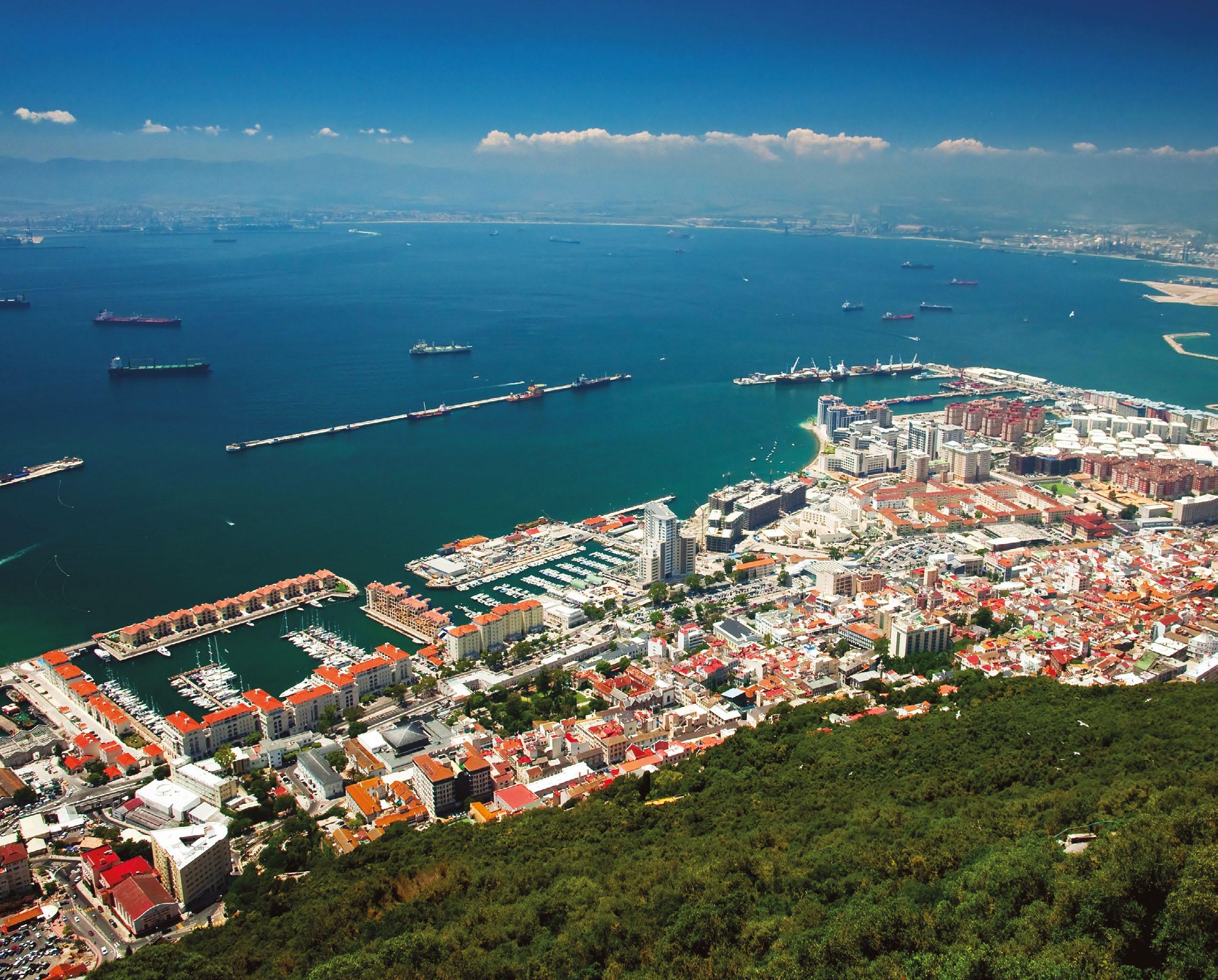
It’s one of those issues where the Government is playing its cards very close to its chest. If it gets sanctioned by government and it gets done, it will be because it’s a good deal for Gibraltar in the round. But that is a key issue for us. The uncertainty that has been hanging around since Brexit, is something that we would like to put an end to. We’d just like to do a deal and move on,” he said.
But what is the likely scope of the deal?
Guy Stagnetto again: “There are a number of different issues, but they probably include immigration, passport control, customs and related issues such as VAT and entry and exit for military personnel. But we’ll have to see what the deal looks like when it comes. But those are the various areas that have been spoken about for a number of years, and we don’t really know where the sticking points lie. I suspect that the joint use of the airport is very much at the top of the list of outstanding issues.
I think the government has got a very difficult task. It’s got to
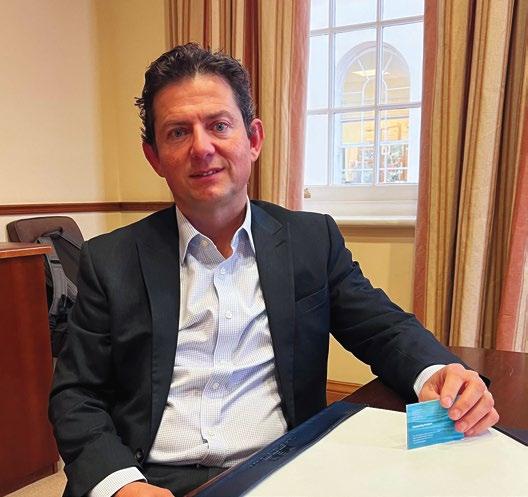
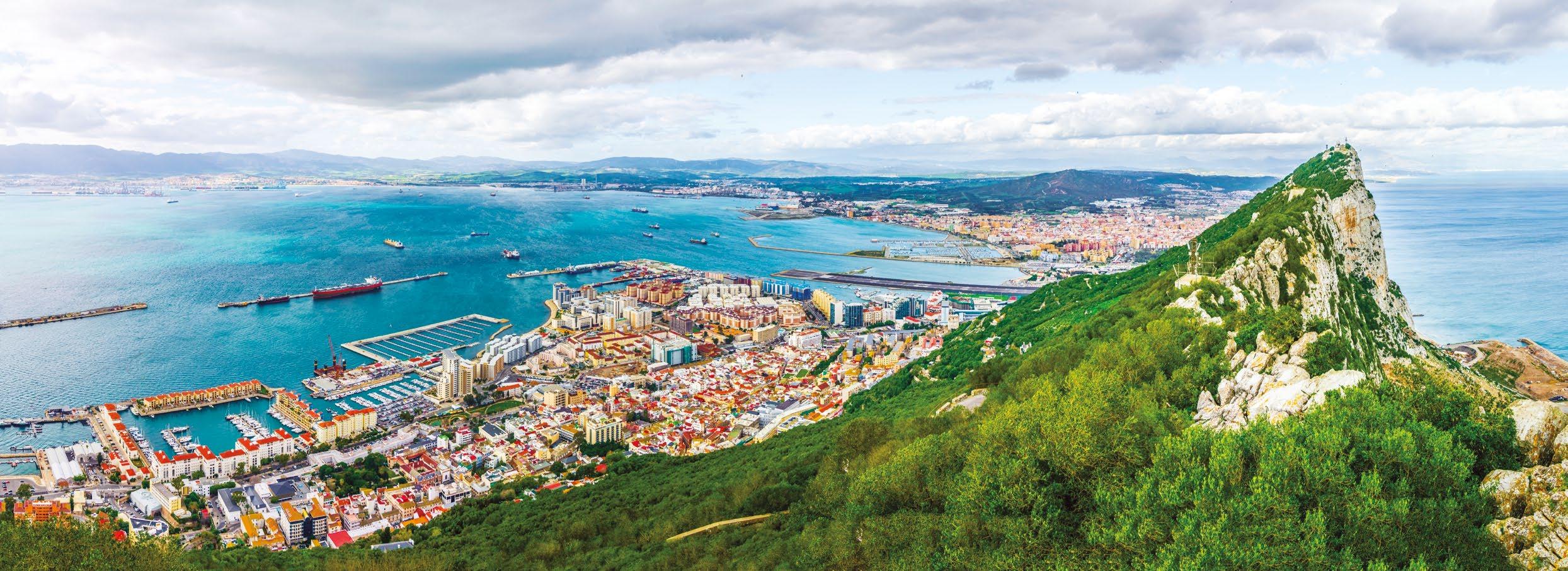
do a deal that works for Gibraltar going forward in terms of its economy and its people and so on and it’s got to avoid ceding anything to Spain in terms of its claim to sovereignty and so on, so tough.”
As Danny Gabay, Managing Director of Gibraltar-based freight forwarding specialist Redwood International, told SMI, when the government started negotiating Brexit, it sent the Gibraltar Port Authority Committee a list of pointers and concerns that the shipping industry had, “but we never received a reply”.
Mr Gabay added: “We have a new Minister now and we have given her exactly the same questions and pointers that we raised at the time. The supplying of spare parts from Gibraltar is one of our strong points because geographically we are well placed to supply vessels transiting the area. “But if the border in La Línea disappears, and we are not included in the movements of spares in the Shengen area, then we might not be able to receive any ship spares in Gibraltar because they cannot transit through Europe with Gibraltar as the final destination. That would ruin the industry completely. There are so many things that we don’t have answers to,” he said.
According to Redwood, the Government told it not to worry and that these things were being looked after, and that the port would be safeguarded. “But the more we look at things, for example, if this deal goes ahead, in theory, the port of Gibraltar would have to stop carrying out any commercial activities because the moment that any goods leave the port, they would physically be entering Europe. Because as far as we’re concerned now, the airport and the port would be two points of entry into Europe.
“Because of the volume of goods we have coming in and out of Gibraltar, the resources we have to control any entry point into Europe are very limited. Europe would not allow us with the infrastructure we have, and it wouldn’t be justified for us to invest in the kind of infrastructure we would need to be able to carry out that function within Europe. So, basically, the only alternative is you cannot do any commercial activity through the port, which means you cannot bring any containers from anywhere outside Europe,” he said.
“It’s easy to do business in Gibraltar, because it’s a small place, and we control – we have a good relationship with customs, so things move very fluently. But then we have these external factors, which we don’t know how they are going to affect our businesses. So, it’s not just a question of painting it doom and gloom, but obviously we have to be honest and say, look, at the moment, we cannot give any guarantees to anybody who is looking to do business in Gibraltar, that things might not change in the near future.”
The lack of available space is also of concern to many businesses in Gibraltar, with Dyfan Goldwin, Operations Manager at the Global Group of Companies, saying this particular concern had been passed onto the new Minister. But how can the situation be remedied? “I will leave that to the experts. We can pose some ideas but again, it’s the marina on the east side, future development projects. I’m sure that as you’ve seen, Gibraltar looks like a construction paradise. I’m sure that they could rebuild within the marinas but everything leads to the fact that there’s no space.”
According to Dylan Cocklan, Gibraltar Maritime Administrator, Brexit has been a challenge but it has also created opportunities. “The Gibraltar Maritime Administration can now also work outside the traditional ‘comfort zone’ of the EU and seek new markets.
“One key opportunity lies in our commitment to maintaining high-quality standards and ensuring compliance with international regulations. However, with our continued operation come challenges, and we are actively addressing issues such as competition from other registries and evolving international regulations.
“Our focus on providing efficient services, fostering positive and lasting relationships with our clients, and staying adaptable, positions us well to navigate these challenges and help us grow the Gibraltar register in line with our vision,” he said.
The vision is clear, it is to uphold and enhance “the reputation of our Flag by promoting a large and diverse fleet without compromising quality. Our mission is equally ambitious, to contribute towards the continued development of Gibraltar as an international maritime centre of excellence.
55 107 January/February 2024 Ship Management International 54 Ship Management International Issue 107 January/February 2024 Gibraltar Report Gibraltar Report
James and Raymond Guy Stagnetto
We provide a vessel its nationality. We therefore perceive our role as a facilitator of international trade and commerce by maintaining a registry dedicated to the highest standards.”
Where is interest in the flag coming from?
Dylan Cocklan again: “The Gibraltar Maritime Administration has always seen a diverse range of interest in vessel registration from various parts of the world. Our reputation for a robust legal framework, efficient registration processes, and a commitment to safety and quality standards has attracted ship owners globally.
“Gibraltar has a wide ownership eligibility criteria. This means individuals and companies from across the globe can qualify to register vessels in Gibraltar. Owners have the option to register their vessels under a variety of different ownership structures.
“We have no nationality restriction on seafarers. This means that seafarers serving on Gibraltar registered vessels can be of any nationality provided they hold a Certificate of Competency issued by one of the many countries recognised by us. This provides companies with flexibility in choosing whom they can employ aboard their vessels.”
To meet the demands from the market, the Gibraltar Maritime Administration is implementing several strategic initiatives. It is enhancing its digital infrastructure to streamline the registration processes, making them more efficient and user-friendly.
“Our registration procedures are simple and easy to follow. Our experienced registry staff, working closely with local registered agents, ensure ship owners experience an efficient and smooth registration process whilst also remaining personally accessible and approachable throughout.
“We offer IMO FAL compliant electronic certificates across the board, including registration and statutory certificates for both ships and seafarers,” he said.
The flag has also developed cloud-based systems which
enables it to interact with its clients on survey related matters online. “This has added greater efficiency to our service, eliminated paperwork and enhanced our interaction with clients,” Mr Cocklan said.
“We provide fast response time to technical, registration and seafarer related queries. – we normally action these queries within the same day. Our simple application processes allow us to provide a quick turnaround service for ship and seafarer documentation. We can issue the relevant certificates within 24 hours, provided all documentation is received.
“Additionally, we continue to invest in staff training and development to ensure a highly skilled and knowledgeable team capable of addressing the evolving needs of the maritime industry. Collaboration with international organisations and industry stakeholders is a key focus, as it allows us to stay informed about industry trends and align our services with global standards.
“Continuous feedback mechanisms and regular reviews of our procedures enable us to adapt swiftly to market demands, ensuring that we remain a preferred choice for shipowners seeking a reliable and responsive flag state.
“In addition to our very competitive fees, we offer a simple annual tonnage tax system; multiple vessel registration discounts and reward owners who adopt “Green” technologies and systems.
“Importantly, Gibraltar enjoys consistency in the governmental commitment to the shipping sector, and in particular, the role the registry plays in Gibraltar as an “international maritime centre of excellence,” he concluded. l

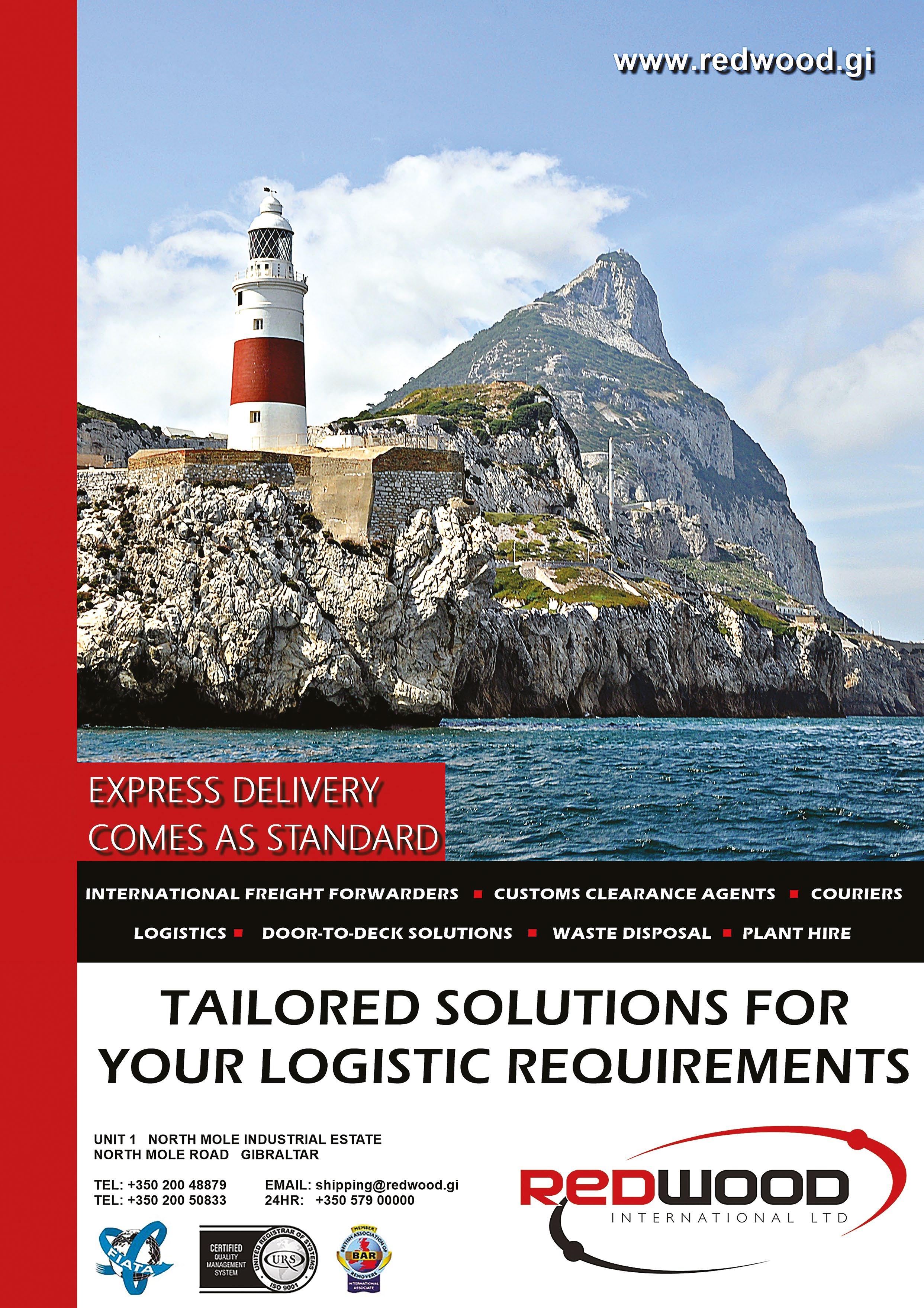
56 Ship Management International Issue 107 January/February 2024
Gibraltar Report

University of Gibraltar working to meet the needs of industry
Flexibility and agility are not only the watchwords of the flag and the port in Gibraltar, but they are also strong guiding principles for the University which has complemented its maritime academic programmes with high-quality technical courses for industry.
The School of Maritime runs a BSc (Hons) Maritime Science with Cadetship programme (Nautical or Engineering), which combines academic qualifications with practical training through MCAapproved, guaranteed placements. The University of Gibraltar recently became an MCA approved centre for this academic programme and is also responsible for placement management and technical training, seen as much needed services for the local maritime industry to ensure it is future-proofing its development and sustainability in the sector.
The University has developed strategic partnerships with the Government of Gibraltar, the Gibraltar Port Authority and the Gibraltar Maritime Administration. In addition, the University works in partnership with the Viking Maritime Group (VMG) to provide a well-established portfolio of world-class Maritime education and training, further supporting Gibraltar’s status as a Maritime Centre of Excellence.
“VMG are industry leaders in Crew Management, Maritime Training and Cadet Management and together we have successfully synchronised our approach to the development and
delivery of high quality industry-relevant Maritime technical training.” the University said.
The University is also working with all bunker suppliers and several ferry operators in the region and their respective ship management and crew management representatives together with numerous local agents, Gibdock and diving services companies.
And what about demand for the courses? Well according to Aaron Lopez, Head of the Maritime Academy, the BSc (Hons) Maritime Science with Cadetship programme (Nautical or Engineering), is now into its 3rd year and it has gained significant traction. “We have doubled our intake every year as word spreads about our innovative approach to the programme structure (3 year degree that includes OOW + guaranteed placements with quality operators). Cadets are being recruited from around the world such as the US, UK, Morocco and elsewhere.
“Operators themselves are showing increasing interest in offering placements and subsequent employment due to the calibre of our cadets. In terms of technical courses, we provide MCAapproved maritime STCW training, tailored beyond compliance training, and bespoke training for the fast-evolving maritime industry and to the 10,000 ship calls together with 20,000 crew changes per year in Gibraltar. The 2024-course calendar is well underway, having over 40 operational beyond compliance firefighting courses booked by major
Cruise Companies calling in Gibraltar and STCW training courses running every month of the year,” he said.
Demand is primarily coming from the cruise sector as they come alongside Gib Port and the close location of the University Maritime Academy allows for easy pick up of crew for training and return back on-board before the vessel departs.
Having our courses consistently up and running allows vessel operators and managers to maximise productive time during their call in Gibraltar, he stressed. l


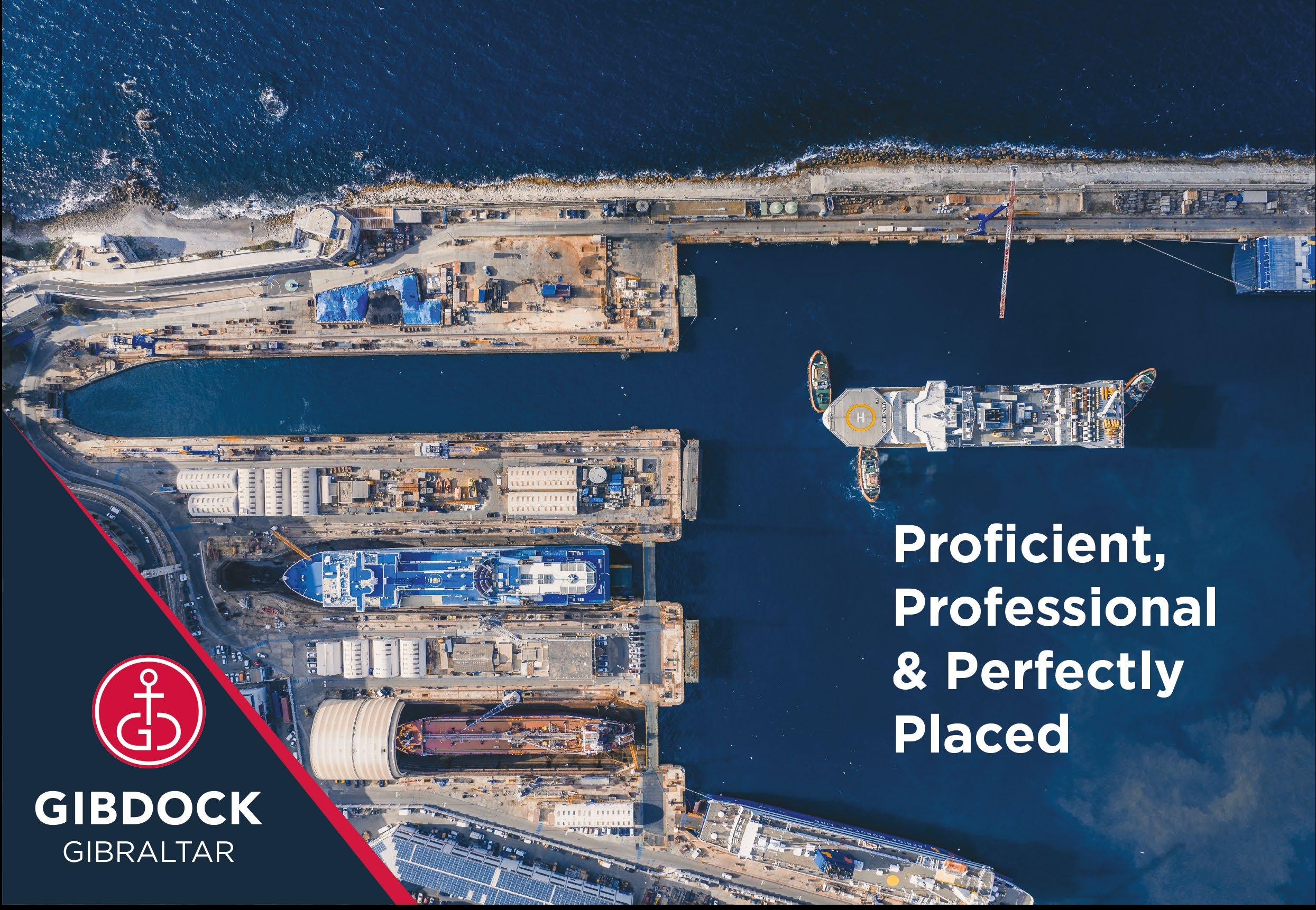
58 Ship Management International Issue 107 January/February 2024
Gibraltar Report
Aaron Lopez
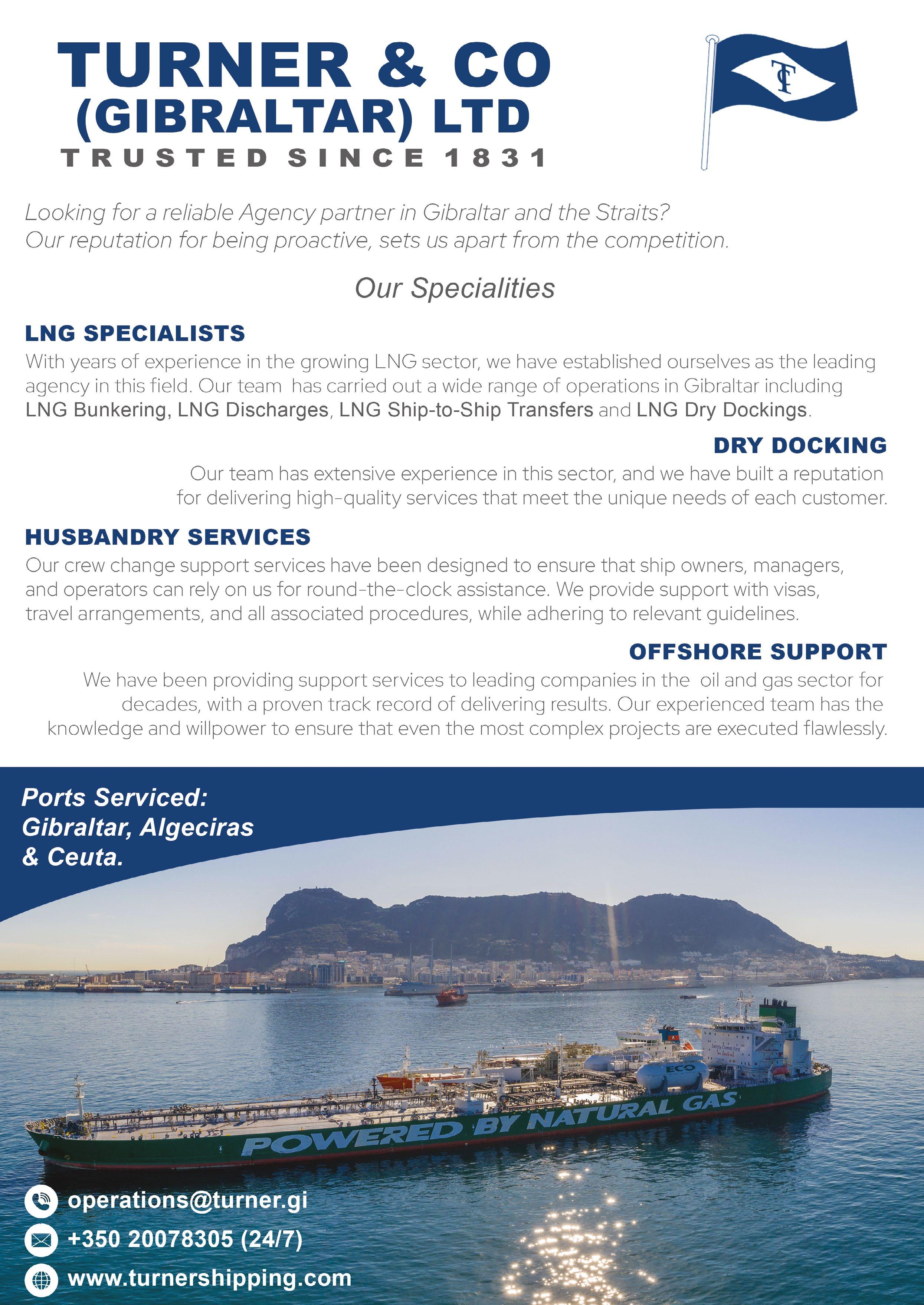
Geopolitics – a silver lining or a negative backlash?

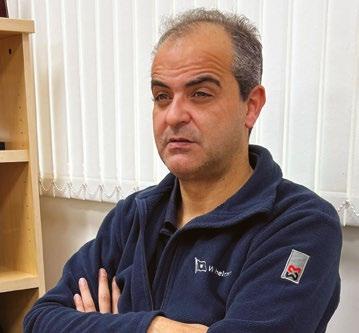
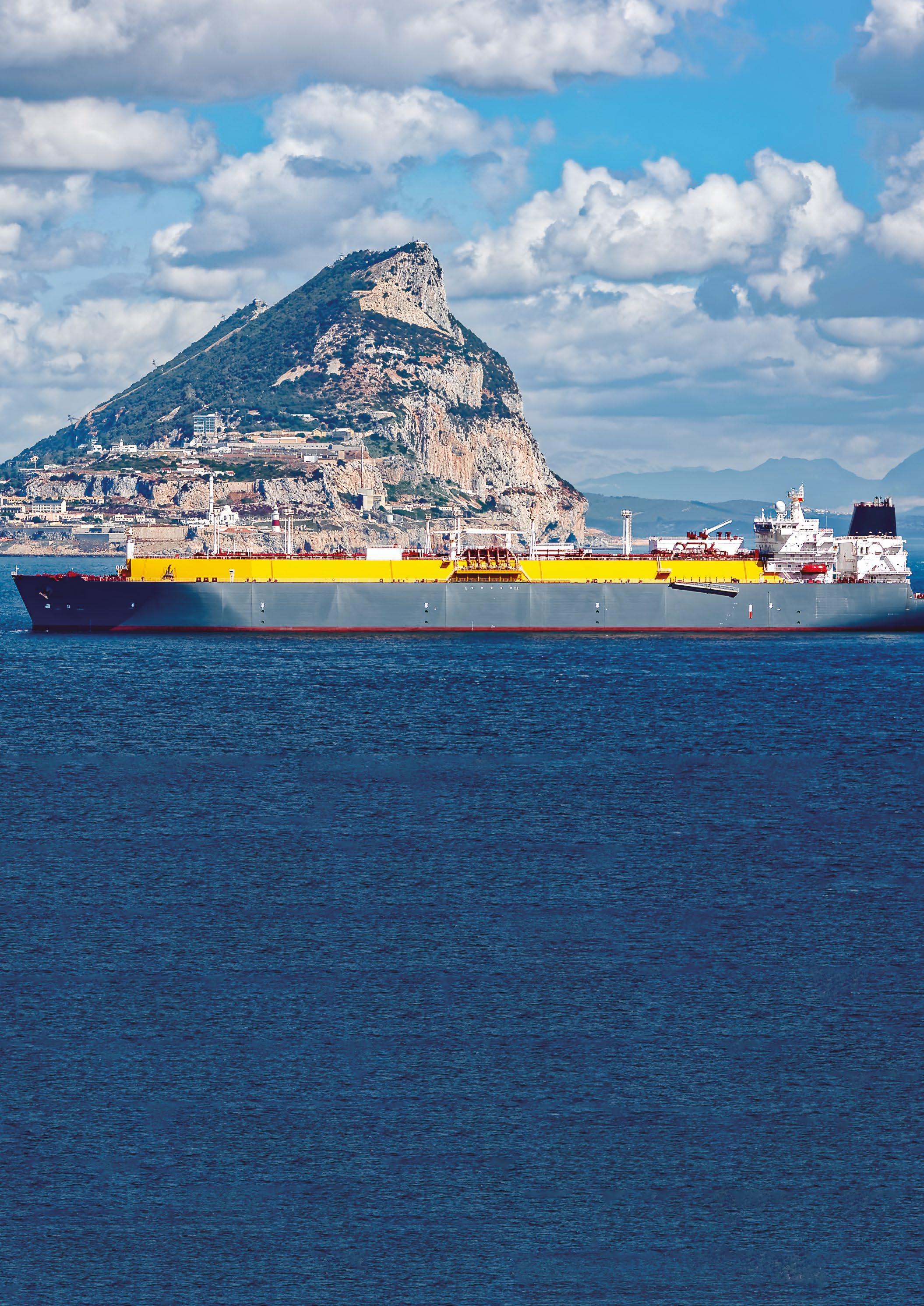
The much publicised attacks on shipping in the Red Sea have galvanised attention on the strategic position that Gibraltar holds between the Atlantic Ocean and the Mediterranean Sea, with some suggesting that it could mean more ships stop at this important bunkering centre or indeed some suggesting Gibraltar could be avoided entirely as South America bound ships refuel in Las Palmas in The Canaries.
With over 100,000 ships transiting the Strait of Gibraltar every year, and Gibraltar claiming around 7,000 port calls during that time, the opportunities are there. Something that was underlined by Ian Penfold, Director of MH Bland, port agency.
“The Canary Islands are taking a big chunk of the market, but we are still seeing a lot of vessels, especially container ships and car carriers, taking bunkers here.
“My office in Las Palmas has seen business increase by 20% to 30% this past couple of weeks, because all that extra traffic that are coming through. Even our launch service providers in Las Palmas have come back saying, we’re limited with the launch services that we have, bear with us, because we’ve got so much coming our way right now, that we can’t handle all the traffic that we have.”
As Mr Penfold stressed, at the end of the day, the ship will go wherever it needs to go and it will take on fuel wherever it needs to take on fuel. If the ship wasn’t destined to come into the Med and go down to the Cape of Good Hope, it will not stop, it will just carry on. They will come through and detour to
Gibraltar to take bunkers here, if they see that the Canary Islands are congested.
MH Bland is one of the well-established companies in Gibraltar, employing nearly 300 people across its sites on the Rock and in Spain Morocco and the Canaries. It is also responsible for operating the cable car in Gibraltar, that takes tourists up the Rock to see the Barbary Apes.
“We have a lot of clients, repeat clients, some that we have worked with for 50-60 years. We have had clients that have gone, and come back, because they tried something, thought it was going to be better, and they’ve come back saying, not everything is about price. But business is cutthroat right now, and I don’t see how some of the local companies are making money with the volume of business they handle,” he said.
Nicholai Bado, from Wilhelmsen Ships Service (Gibraltar), added to the discussion by saying that vessels were starting to arrive in Gibraltar after taking the longer voyage around the Cape of Good Hope. “The containerships are faster, at 20 knots, then you have the tankers and the bulk carriers which do 10 knots, coming into play now.”
Super yachts were the thing of the moment during the COVID pandemic as the rich and famous bought them in their droves to go to sea to escape the ravages of lockdown, but as Yvonne Chu, Partner in Hassans International Law Firm in Gibraltar, suggested, they are starting to be discarded and sold off- the toy that is no longer used – so to speak, because of the impact of the geopolitical situation.
Gibraltar Report
Ian Penfold Nicholai Bado
“Because of the sanctions against Russia and the fact that some of these yachts are owned by Russian individuals or entities, they are caught by the sanction’s regime,” she said.
“So, even in a litigation context, you do get banks, for example, that have mortgages over these super yachts, who then take possession of the super yachts, bring them here to Gibraltar, where there’s a good jurisdiction to get a court sale. But then, of course, you have the issue of what happens because unlike some of these rusty old tankers, where there isn’t enough equity in the vessel after a mortgage and other debts have been paid, these super yachts are worth a lot of money and there is a substantial residue left. Of course, the issue there is what happens in light of the sanctions once you pay all creditors?”
As Yvonne Chu stressed, the problem is what happens with the money left over and there was at least one case where there was a dispute as to whether it belonged to a sanctioned person at the time that the vessel was arrested or whether he had, as is claimed, divested himself of the interest in that. That’s the sort of issue that the court has to grapple with. “Of course, the authorities also have to be very careful that the money doesn’t actually leave the Admiralty Court unless it’s absolutely certain that there’s not going to be any breach of sanctions,” she said.
As Lewis Baglietto KC, Team Leader and Partner at Hassans, added, Gibraltar has worked hard to try to encourage super yachts to come to Gibraltar. “But Gibraltar is a very small place and it needs to plug the gap and have a bit more of a playground for the ultra-high net worth to come and entertain themselves a little bit more. So, it is a little bit about the facilities that we have here. There are construction development projects that are being worked on in Gibraltar, including the Eastside Project, which will have a super yacht marina. The intention is to try and plug that gap.” The Eastside Project aims to revitalise the eastern area of Gibraltar by creating a contemporary and captivating development. This endeavour envisions the establishment of residential complexes, dining establishments, a marina, and various facilities, including a spacious park. Similar to London buses, geopolitical issues come in threes
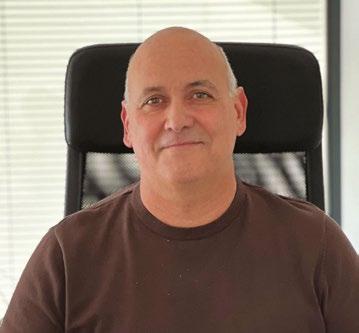
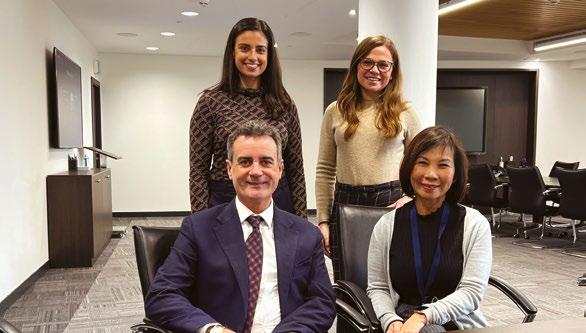
and apart from the Red Sea issue as well as the Brexit issue, Gibraltar also has to deal with the issue of Russian sanctions, something that Ernest Morillo from Gibraltar agents Alfaship said has taken a toll on vessel calls.
“As you know, Gibraltar is taking a very hard line in terms of vessels coming or going to Russia. We are unable to service them, whether they are in ballast or loaded. We have talked about it with the Port of Gibraltar and it’s something that came from the top. We’ve tried to see whether we could get something to say that they are satisfied that the vessel is working on the conditions of the European rules. But we tend to try and get this information from the clients, but the clients are not really bothered. They don’t want us to stop in Gibraltar, we’ll stop elsewhere. What’s happening is they are stopping right across the bay in Algeciras, because in Algeciras, they will check the cargo, but unfortunately, Gibraltar hasn’t got the intelligence or the manpower to do that. So, that’s something that is affecting us directly and we’ve noticed quite a considerable drop in the port calls because of that,” he said.
“At the moment, we are in the middle of discussions with the Port authority, because we want to make better use of the eastern side. The eastern anchorage most of the time is empty or with the local barges just dropping anchors there and we are trying to see what other services can be done outside which is not going to be any problem for local authorities or regulators. One of the things that comes to mind is the ship citation certification. Not many ports in the world provide this service, especially not at anchorage. They can do it alongside but not at anchorage. Gibraltar can do it at anchorage. The only thing is that we are limited to 48 hours’ notice, so that the agency can confirm whether they can attend and because it’s a government company, they’ve got rules and protocols, so

they don’t go out at sea overnight and if the weather is not that good, they wouldn’t even risk going out,” he added.
“The problem with sanctions is that you can take the technical detail down to its most literal meaning and you end up with absurd results and you’ve got to be very careful that you don’t go down that rabbit hole,” said Raymond Triay, Partner at the established Gibraltar law firm Triay.
“So, what you’ve got to make sure is that you keep in mind the whole point of the sanctions. The whole point of the sanctions is to avoid giving any able assistance to the Russian War effort and what you don’t want to do is embroil yourself in scenarios whereby you’re prohibiting an activity that has no effect whatsoever, but there is a nexus of some sort that some person might think,” he said.
There is an element of the need for a bit more clarity, he added, because at least we’re more used to in Gibraltar at least, going through the process of licensing and applying the sanctions regime. “But let me put it this way, when I did my first license application under the sanctions regime, it was for this Russian super yacht. We didn’t even have forms. I think that says it all, in terms of this is very new.
Triay is a full-service law firm divided into a number of distinct practice areas namely Corporate and Commercial, Dispute Resolution, Employment, Family and Divorce, Financial Services, Private Client, Property and Shipping and Admiralty. l
Mental heath issues among seafarers continue to be a worry, according to Dr Joanna Shelley, Occupational Health and Managing Director at College Clinic, with cases reported in Gibraltar including acute psychosis.
“We are lucky that we have a psychiatrist on hand because these are not easy cases to manage,” she said. “It is scary for the experts and it is scary for the ship’s crew as well. But I have never failed to be amazed by the versatility and resilience of today’s crew. I think they’re very well trained and they handle situations, both from acute psychiatric conditions to fairly nasty trauma and deaths on board, incredibly well considering,” she said. College Clinic provides emergency and routine medical attention to seafarers transiting through the Port of Gibraltar. It has a team of doctors who are experienced and trained in shipping medical case management, including attendance on board for emergency extraction of critically ill or injured patients from the vessel to local medical facilities. Its doctors will also attend on board for minor conditions because we know that time is of the essence.
Dr Shelley again: “There are some people that should not be at sea but have somehow slipped through the net and managed to get a medical certificate and get on board. But by and large, I find the population is getting older, but I think they’re healthier older people. Over the last year, we’ve had a lot of ships with medical burns for example, injuries at sea, where they have actually headed straight for Gibraltar and actually in looking back on it, they’ve actually sailed past three or four ports that had major burns units there.” l


63 107 January/February 2024 Ship Management International 62 Ship Management International Issue 107 January/February 2024
Gibraltar Report Gibraltar Report
Ernest Morillo HassansTeam
Gibdock looks to growth
Established Gibraltar shiprepairer Gibdock continues to go from strength-to-strength and sees its recent acquisition by the maritime engineering solutions provider Balaena as a positive move as it looks to a future punctuated by continuation of existing work as well as potential new business linked to the environment.
According to its Managing Director Richard Beards, the additional type of work can include engineering work associated with wind, solar, sewage treatment and the provision of fresh water.
“We’ve been more or less fully booked for two years now, so it’s been a very strong period of growth for us. There were a few reasons for this. One was the fact that Europe came out of Covid restrictions faster than China did, so there were restrictions on superintendent representatives which had a knock on effect of
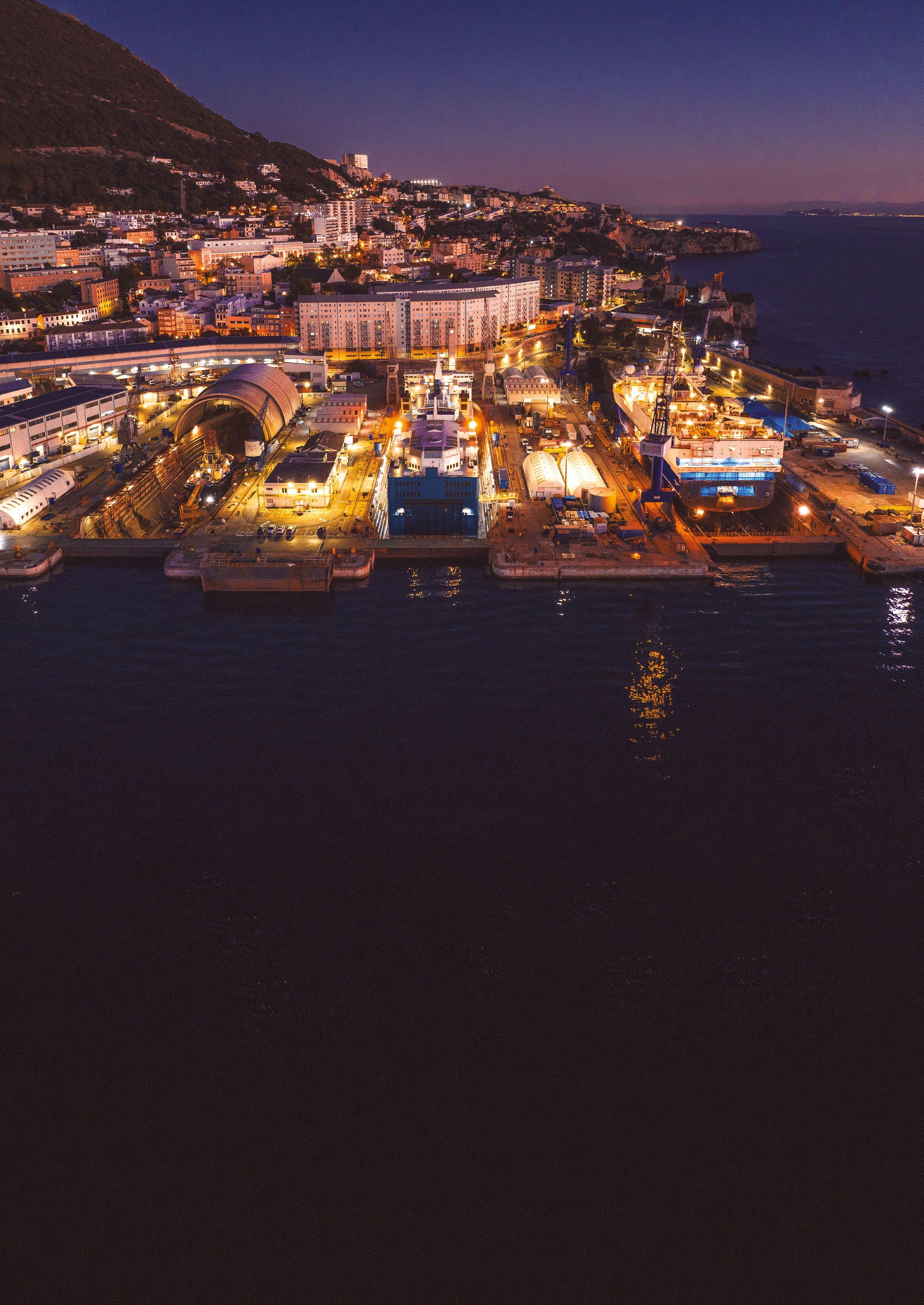
shipyards being busy. And the provision of ballast water treatment rules was another factor: we went through a phase where we were installing a ballast water system on pretty much every vessel we dry docked. We are now in what we call our ‘ferry season’ which will last up to a month after Easter, so continuing the busy period,” he said.
But what is winning the battle for business? “I think,
Gibraltar’s location has always been key to it, and has always helped. Ship repair has always been a feast or famine sort of industry and it’s how you manage both.
Gibraltar’s location helps with that, in that the famine is never as bad as it could be, because of the location.
Also, we always try to do a good job, and deliver a quality product in a safe manner, on time,” he said.
As he stressed, it is very much about keeping hold of repeat business and building the right relationships.


Gibraltar Report 64 Ship Management International Issue 107 January/February 2024
This has started to reap rewards in two new areas of business – military work and super yachts. The drive for alternative fuels will also generate potential business such as LNG retrofits and there is anticipation for the first battery conversion.
The yard, which is a highly visible example of the Rock’s maritime footprint, is working closely with the Government of Gibraltar on its apprenticeship scheme. “We take in approximately 12 apprentices per year and plans are being drawn up for a new training facility. We are looking to increase the numbers moving forward and really invest in, and train, the local youth,” he said.
Attracting the young and talented into engineering is a global problem, he opined, “and the training has got to be there to produce the skill sets that we need. But we are fortunate we are

doing this in conjunction with the Gibraltar Government, so that is always important”, he said.
Gibdock, a leading ship repair yard, recently announced the appointment of John Barnard as Commercial Director. With over 15 years of experience in the Ship Repair and Ship Building industries, his wealth of knowledge and leadership will play a pivotal role in advancing Gibdock’s capabilities.
According to Gibdock, Mr Barnard has garnered extensive experience as a ship manager, successfully overseeing projects such as military refits, passenger ferry conversions and lengthening initiatives, in-service support contracts, and offshore mobilisations and de-mobilisations. Notably, he has served as Project Director for prestigious projects, including three new build ferries and the Type 45 Power Improvement Project.


In his previous role as Technical Director at Cammell Laird, he was responsible for leading the technical, bids, estimating, and planning teams. His expertise and leadership were integral to the success of projects with high-profile customers, including the Queen Elizabeth Class Aircraft Carrier builds, the Type 45 Power Improvement Project, and the Royal Fleet Auxiliary Cluster contracts.
“We are thrilled to welcome John Barnard to Gibdock at this exciting juncture in our journey,” remarked Simon Gillett, Owner and CEO. “His exceptional track record in managing and leading diverse maritime engineering projects aligns perfectly with our vision for the future. We look forward to leveraging his expertise as we continue to strengthen Gibdock’s position as a leading engineering and ship repair facility.” l

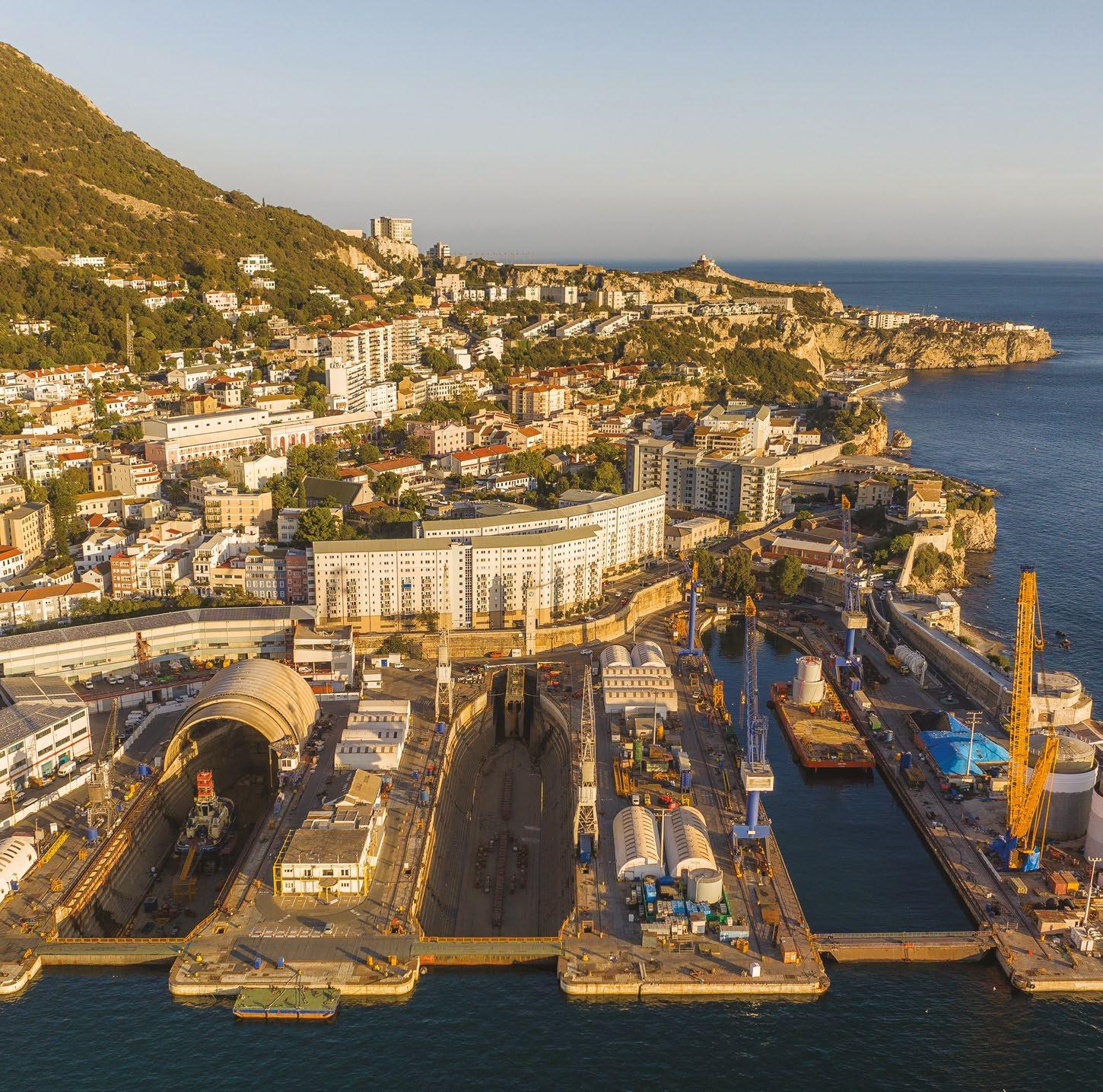
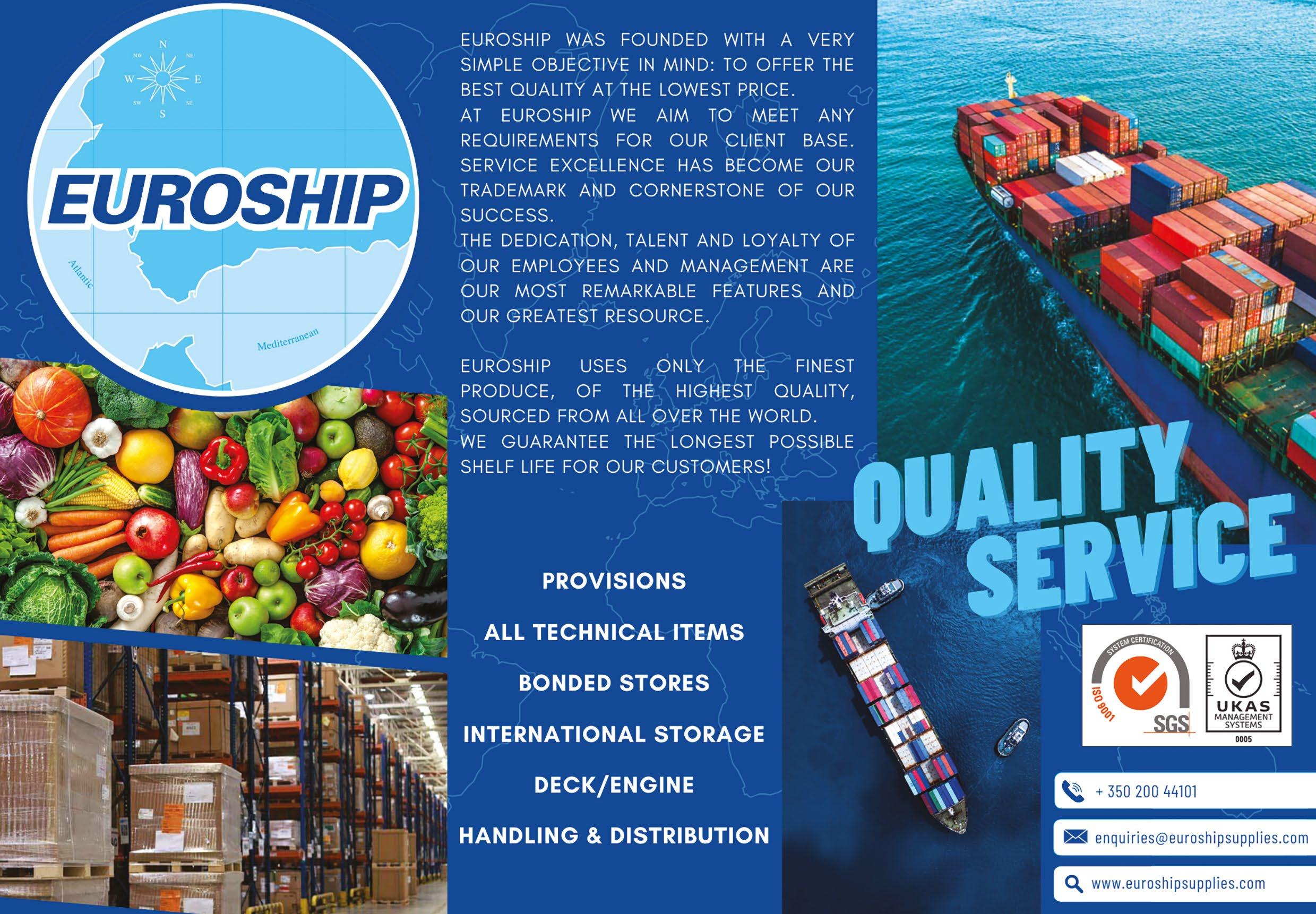
Gibraltar Report Gibraltar Report
Richard Beards
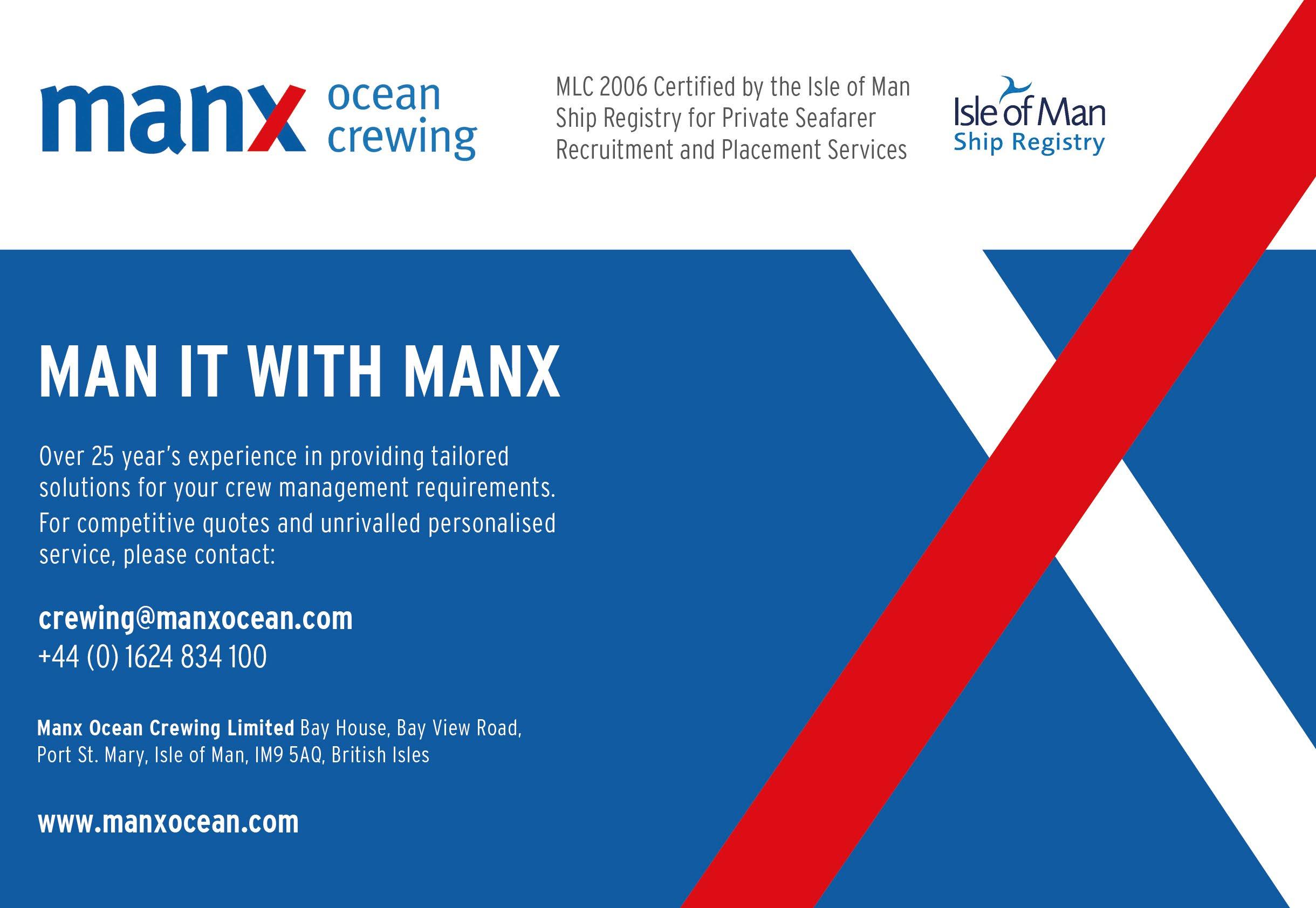
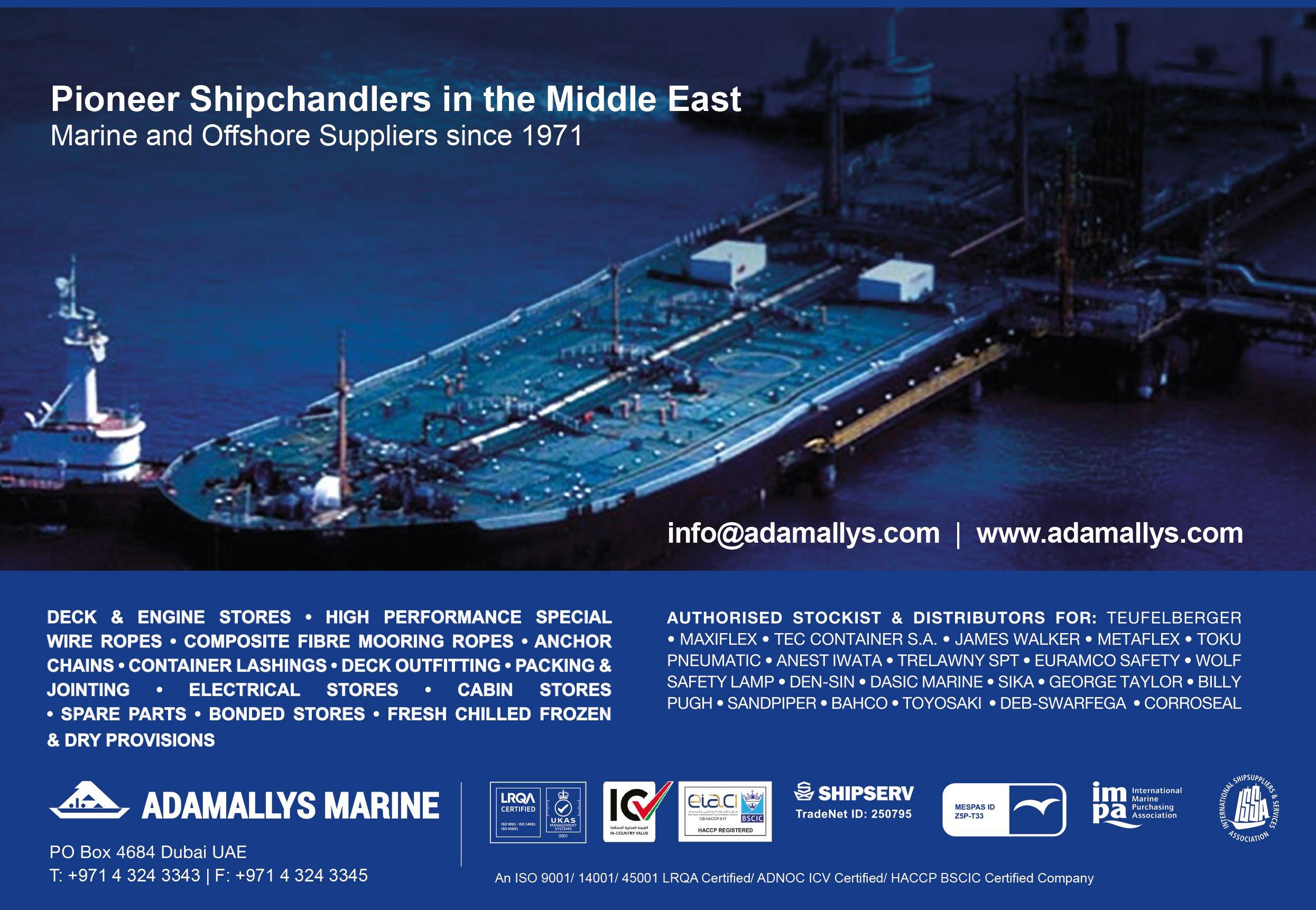
Maritime cluster on a digital footing
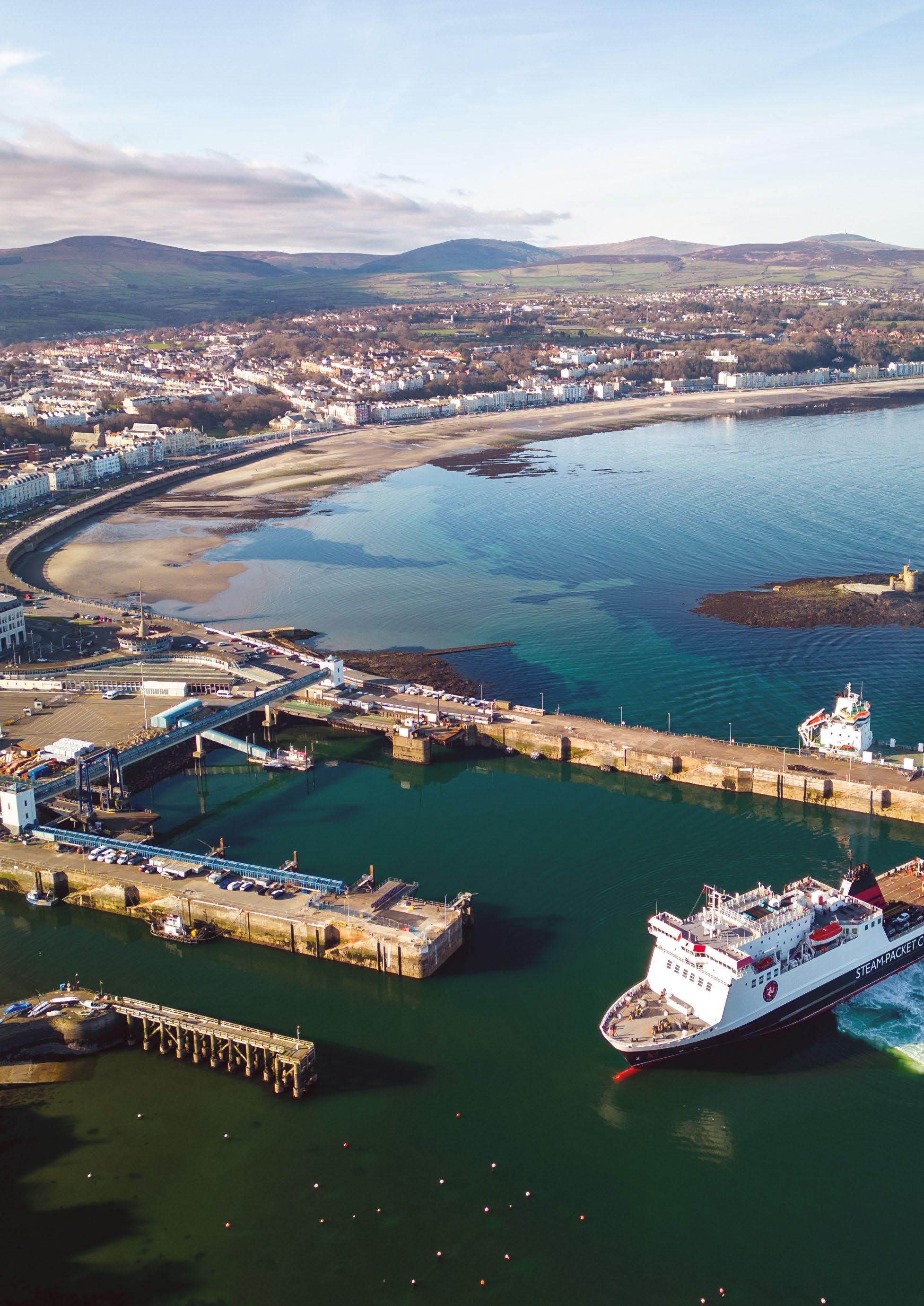
The Isle of Man’s maritime fortunes may have seen something of a decline since the island first rose to prominence as a ship and crew management hub, but now it’s on the way back up and ready to be a digital pioneer, according to Capt. Lee Clarke, General Manager of cluster body Isle of Man Maritime (IoMM).
“The Isle of Man used to be ‘the place to be’ in the 1980s,” he relates, “which is the reason why the Isle of Man Shipping Association was first formed.” The body has since changed name to the IoMM, and in the past three years since he took over as GM has continued to “adapt and evolve”. It recently expanded its membership criteria to include the superyacht sector and maritime-related service providers, and in the past year alone has welcome 10 new members, taking its total to more than 50.
“We now have a much wider variety of members,” he says, “and the Isle of man Government is very proactive in supporting us, through its Department of Enterprise and the Isle of Man Ship Registry. We work in tandem with the Registry, promoting the Isle of Man as a place to come to for shipping companies. We have a maritime eco-system and support network, hold regular meetings and are quick to try and sort any emerging problems or issues affecting Members.”
Today, the island faces a bright future as “the digital age comes barrelling down the road,” Clarke continues, “and we feel the Isle of Man is very well placed to meet it.” The island has already been positioned by the government as an ‘e-gaming Centre of Excellence’, with several of the big names in the sector with presences on the island, for which the Government invested heavily in the necessary infrastructure – high-speed internet via a fibre-optic cable network, Data Centres and Digital Hubs provided by the Government with a high degree of redundancy.
69 107 January/February 2024 Ship Management International Isle of Man Report Editorial credit: Daniel Sztork / Shutterstock.com
“Ship and crew managers are more and more embracing this digital revolution,” says Clarke, “and we feel the Maritime sector will be able to make use of these facilities when it comes to automation, digital crew apps and so forth. Companies will be able to be positioned within these digital hubs and drive their ships from there, [benefiting] off-the-back of the e-gaming industry.”
Clarke himself is a Manx national who after his time at sea used to work for Bibby Ship Management (later taken over by V.Group) as a Cadet Manager, meaning recruitment and training has become another priority for IoMM during his tenure. The former promotion campaign for ‘Careers at Sea’ has subtly been altered to ‘Careers in Maritime’, opening the doors to young people on the island who might want to pursue careers in services or accountancy, as well of course to those wishing to become cadets or ratings.
A highly successful maritime careers fair called Maritime Expo was started on the island three years ago, attracting some 160 young people through its doors last time out in July 2023. A number of these attendees have since joined IoMM member companies through an apprenticeship scheme that the IoMM runs, says Clarke, and there are currently six Manx full-time cadets, also thanks to the Expo.
The island, as a British Crown dependency lying outside the UK (and EU), is not covered by UK Tonnage Tax provisions and therefore has its own Manx Cadets Programme, he adds. This is a big improvement over the time when Clarke himself wanted to become a cadet but was forced to temporarily relocate to the mainland in order to qualify for the UK scheme.
Another project that Clarke has introduced at IoMM is a Tallship Initiative whereby some 12 young Manx
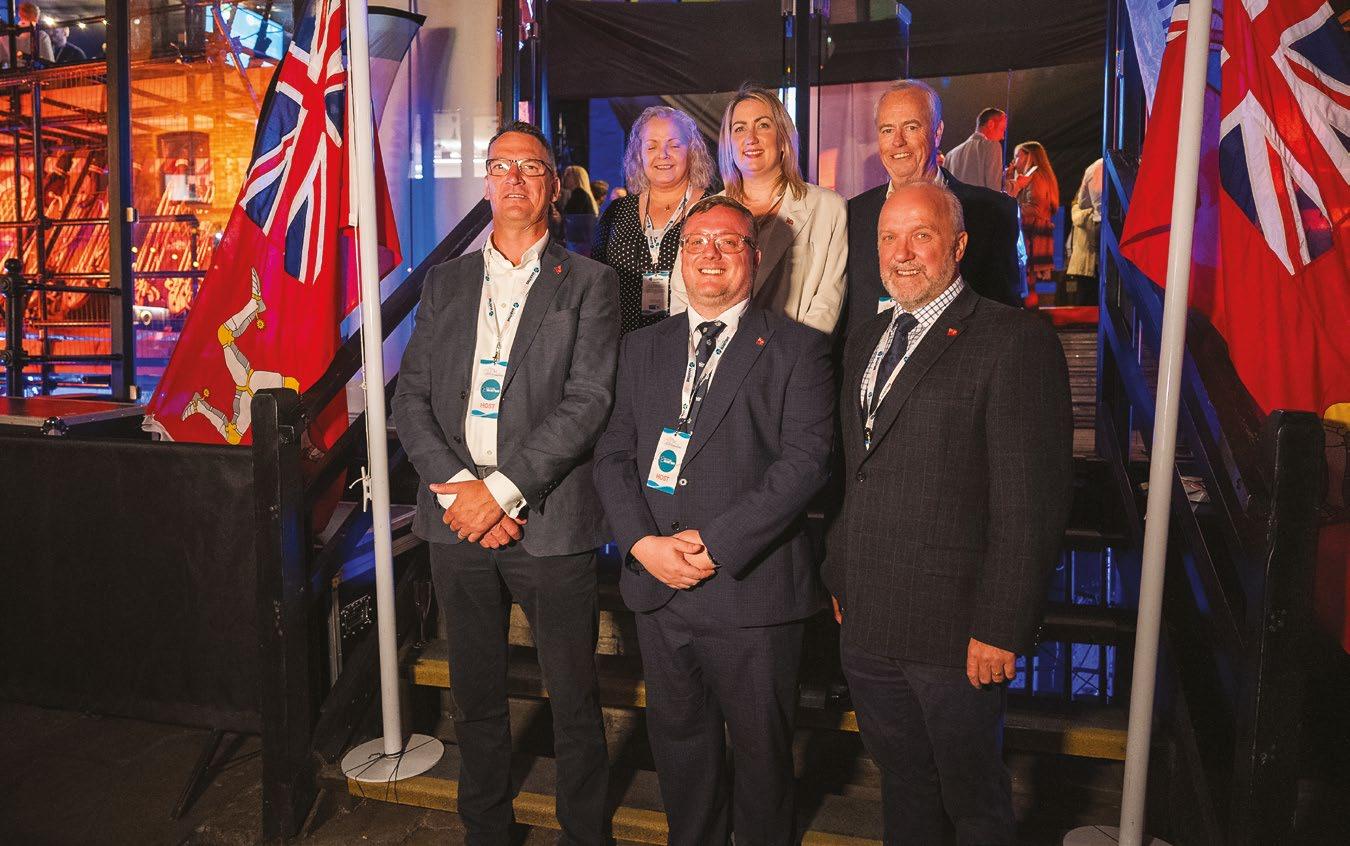
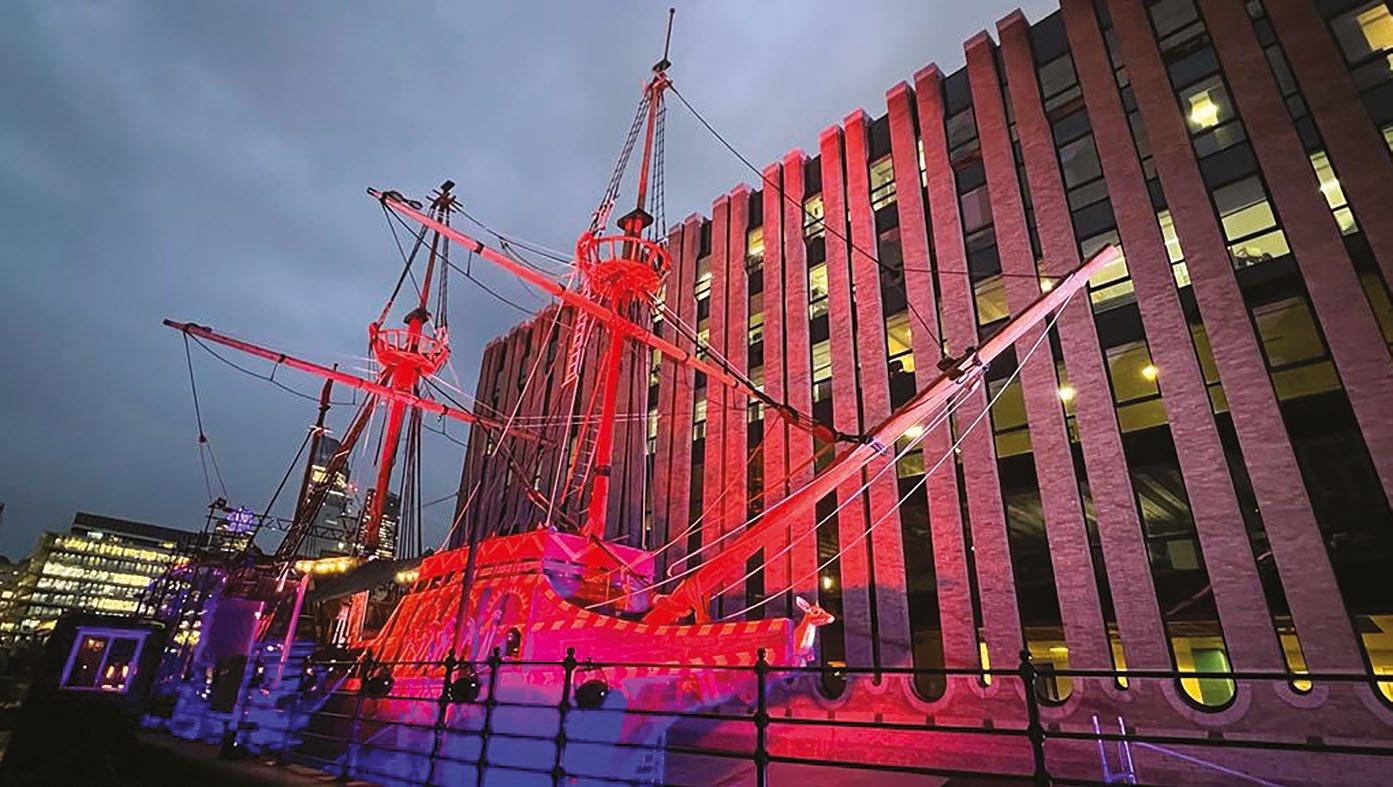
volunteers a year are given the chance to experience a week of life at sea aboard a historic sailing vessel. Sometime this yields surprising results - he recounts how one young student wishing to become a marine biologist needed a lot of convincing by her father to take part… but then was totally won over after witnessing first-hand the phenomenon of ‘bioluminescence’ at sea and never wanted to leave the ship!
‘So we’re driving skills into Maritime through our Expo and Tallship Initiative,” Clarke resumes, “having changed the conversation from Careers at Sea to Careers in Maritime.” The IoMM also takes part in promoting the island abroad and received some 250 enquiries for its 100-person reception aboard the full-size reconstruction of Sir Francis Drake’s ‘Golden Hinde’ moored at Bankside
of five local fishermen’s lives – in recognition of which Douglas, Isle of Man is to this day the RNLI’s No. 1 Lifeboat Station. The occasion will be commemorated in style this coming July, by an Isle of Man maritime community itself experiencing something of a revival.
Ship Registry
The Isle of Man Ship Registry (IOMSR) is a prime ambassador for the island’s maritime cluster on the global stage and has recently been expanding its international network. Last October it appointed a Middle East Representative, Dubaibased Capt. Rakesh Yadav, formerly with leading regional shipowning companies Bahri and Emarat Maritime, and a month later added a Business Development Manager for Scandinavia and Northern Europe, Alexander Christensen.
Following the aforementioned LISW23 event that it hosted with IoMM last September, the Registry went on to enjoy a highly successful participation at Marintec China in December. The 2023 edition of this biennial Shanghai event hosted 2,000+ exhibiting companies and 80,000+ professional visitors from 100 countries breaking all previous records, with both IOMSR’s Deputy Director Toby Brooks and China representative Jonathan Kingdon in attendance to ‘fly the flag’.
And earlier this year, the Registry welcomed the world’s most powerful wind-assisted cargo ship, the Berge Bulk, to its fleet. “The initiative aligns with the new IMO goals, to reach net-zero GHG emissions from international shipping by or around 2050, goals which IOMSR is also fully committed to,” commented IOMSR Director Cameron Mitchell [see separate Registries report].
Regarding seafarer welfare, IOMSR launched the first ever seafarer welfare app designed by a flag state. ‘Crew Matters’ is claimed to be the most advanced of its kind ever produced for seafarers and is available to seafarers worldwide. In August 2023 it stepped up this commitment to seafarer welfare by becoming a member of the International Seafarers’ Welfare and Assistance Network (ISWAN).
during last year’s London International Shipping Week, he adds, for which feedback was “phenomenal”.
This coming July, the fourth edition of the Maritime Expo will be followed by a revived annual Maritime Conference, where leading figures from the island and further afield will discuss the major topics of the day, including Safety, ESG, Digital and Seafarer Welfare. The event will have a special significance as it coincides with the 40th anniversary of the Isle of Man Ship Registry, as well as with the 200-year anniversary of saving-lives-at-sea charity the Royal National Lifeboat Institute (RNLI).
The RNLI, now based in Poole, England, was first founded in Castletown, Isle of Man, by Sir William Hillary after he witnessed the tragic sinking of a Royal Navy brig off the island involving the loss
IOMSR also visited HengLi Heavy Industries - a ‘new shipyard’ debut at Marintec China 2023 - COSCO Shipping, GSI, CCS, and RINA during the trip, as well as attending the UK government’s Green Maritime Exchange Conference. In addition, IOMSR met up with some Liverpool Propellers’ Club members such as Idwal and Brookes Bell at Xinde Marine’s Ship Management and Technology Forum.
Toby Brooks commented: “All members of IOMSR sincerely look forward to working with China and the global maritime community to advance and work hand in hand on key maritime industry development issues such as seafarer welfare, safety, marine environmental protection, green shipping and decarbonisation.”
Regarding the latter, IOMSR became the first flag state to join the Getting to Zero Coalition, an industry-led alliance working towards decarbonising the international maritime shipping sector. Members include more than 120 organisations from the maritime, energy, infrastructure and finance sectors.
In another industry-leading environmental development, in April 2022 IOMSR had become the first flag state in the world to reduce registration fees for ships deploying green technology. The measure gives ship owners a 15% reduction on their annual registration fee. The reduced fee is available to operators of cargo ships, commercial yachts or passenger ships which are investing in biofuel, alternative fuels, wind, or shore-side energy technology.
IOMSR remains one of the world’s leading registers of ships and superyachts and is ranked 19 in the world by Clarkson’s with around 300 ships and 12.5m GT under its flag. The registry has in the past held top spot on the Paris MoU Port State Control whitelist and is on the whitelist in the Tokyo MoU rankings. The registry is headquartered in Douglas, Isle of Man, a self-governing British Crown dependency and is a Category One member of the Red Ensign group. l

Isle of Man Report Isle of Man Report
70 Ship Management International Issue 107 January/February 2024
IoMM Executive Board members aboard Golden Hinde at LISW23Front ( to r): Cameron Mitchell, Capt. Lee Clarke, Bruce McGregor (Director, PDMS); Back: Cathy Lane (MD, MHG Insurance), Lesley Walker (Head of Marketing, Sentient), Lars Ugland (Chairman, Isle of Man Steam Packet Company)
71 107 January/February 2024 Ship Management International
Toby Brooks (left) and Richard Kingdon at Marintec China
A crew manager’s view from Manx Ocean
Regarding the effect of current geopolitical issues, Manx Ocean Crewing confirm that the Red Sea crises has already impacted business.
“There are a number of factors you have to take into account when employing crew on a vessel potentially going via High Risk Areas (HRA),” advises Joanna Piotrowska, Crewing Operations Director. “The crew may refuse to sail through HRA and therefore crew managers need to obtain their permission prior such engagement (if known).
“In this particular case, we have manned a newbuild dry cargo vessel from China, and had to work with owners to find a solution to send it around Africa to bring it into service to Europe. That is impacting time and crew/ provision/ fuel costs for the owners so it is becoming a complex issue for many companies trading between Far East and Europe.”
The ongoing Russian-Ukrainian war is definitely impacting many crew managers/owners directly or indirectly, she continues, in terms of recruitment, people availability, crew certification and licenses. Delays in renewal of the latter are still commonplace owing to the continuing effect of Covid times, while there is direct impact of the war in Ukraine.
“Ukrainian men of age 18-60 years are not allowed to leave the country,” Ms Piotrowska informs, “which is certainly impacting a lot of businesses as Ukraine was/is one of the few east European countries that has provided a substantial seafarer workforce over past 20 years. The new Ukrainian legislation of a strengthened military is going to make it even more difficult.
“Since the war started, I can proudly say we have provided tremendous support to our Ukrainian crew and their families from our side as well as directly from the owners’ side, whereby we have coordinated seafarers and their families from the
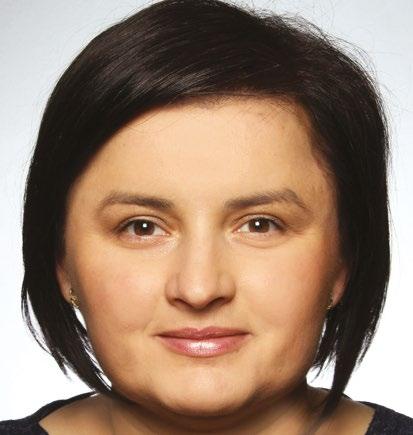
borders of Ukraine safely. We have also provided free of charge accommodation for seafarers, their families and guided them where they could take refuge.”
As regards the advantages of being based on the Isle of Man, “as with everything you observe both pro’s and con’s” the Manx Ocean Crewing Operations Director continues. “Being based in the Isle of Man, the corporate zero tax regime for companies makes it competitive and a good reason why to locate your business here. However, there are also downsides of not being recognised as part of the EU, which contributed to some owners being forced to change to another flag registry in order to comply with EU requirements.”
But the Isle of Man as a shipping hub is “very efficient and versatile, as well as definitely noteworthy on the map,” she adds, providing “a good reason to bring businesses over here.”
On the Novalis Group’s own recent achievements, Joanna Piotrowska says the company is “very proud to be providing crew management for the first vessel (of four) of the Groot 5900XL type delivered by Jiangsu Dajin Shipyard,” and looks forward to doing likewise for the other three this year. l

Technical Management Using digital solutions to enhance vessel maintenance planning and performance
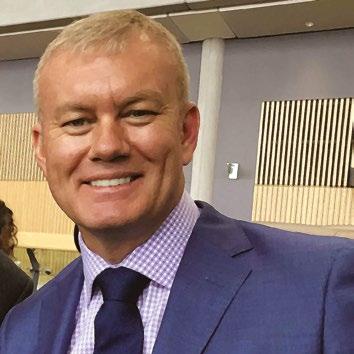 By Troy Mitch, a founder of ContinuSys, provider of an
By Troy Mitch, a founder of ContinuSys, provider of an
Integrated Business Management System (IBMS) digital solution for business continuity
Today one of shipping companies’ top operational priorities is optimising vessel maintenance planning and performance. With many crews operating with minimal manpower and on tight schedules, carrying out routine maintenance tasks can be tedious, time-consuming, and prone to oversight and costly errors.
Traditional practices typically involve using paper-based logs and spreadsheets to keep track of maintenance and voyage planning tasks. Not only is this inherently inefficient – it also leaves headquarters in the dark. Fortunately, cloud-based, mobile-enabled solutions have emerged as a way to manage and mitigate these challenges. Three examples are:
Voyage planning, which is much quicker and easier when you have all the above information in one place, rather than having to wait for documents and data to be handed over in person or sent via email. Integrated cloud-based software solutions enable that seamless accessibility and interoperability by granting shipping companies a single repository for all voyage planning information. At the same time, asset tracking solutions make it easy to execute and monitor those plans once they’re put into motion, while granting headquarters complete visibility into this critical information.
Preventive maintenance. Today, thanks to improved internet accessibility at sea and the greater viability of cloud computing, vessels can now use connected monitoring systems for tracking things like operating temperatures, lubrication
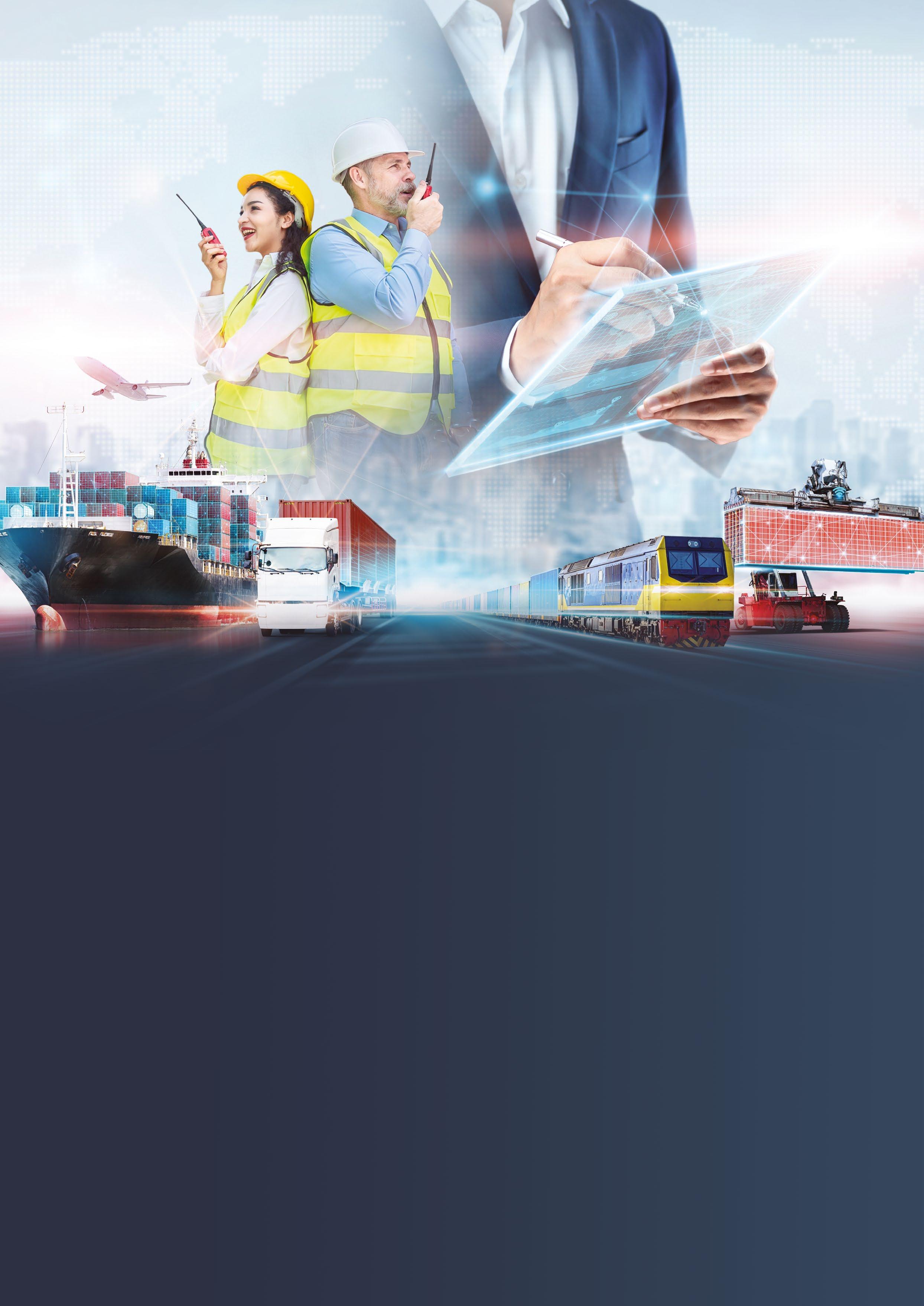
levels, and environmental conditions for ship engines and other machinery. With a continuous, near real-time supply of operational data, modern systems can examine the health of a system to detect trends and inform preventive and predictive maintenance decisions before problems arise. By using cloudenabled solutions to monitor vessels, onboard machinery, and other company-owned equipment, decision-makers back in headquarters can also monitor the day-to-day operations of ships at sea.
Advancing ESG policies. Environmental, social, and governance (ESG) has become a practical and financial necessity in the shipping industry. The key to adopting a robust ESG strategy is having complete visibility into and control over your company’s operations, both at sea and on the land. Easy access to data is what grants that visibility. For example, electronic checklists and report templates tailored to the unique demands of your business and its operational environment help improve visibility and advance accountability, all the while standardising and expediting essential operations like equipment auditing and port inspections.
When you have access to all this data by way of an integrated business management solution, you can take measurable steps to further your ESG initiatives, whether that’s reducing fuel consumption with smarter voyage planning or meeting the lofty demands of global ESG frameworks like the Poseidon Principles for Marine Insurance. l
73 107 January/February 2024 Ship Management International Isle of Man Report 72 Ship Management International Issue 107 January/February 2024
Joanna Piotrowska
Fleet Manager Capt. Christian Behrmann and Deputy Fleet Manager Marco Kayser at delivery of first Groot 5900XL design multipurpose newbuild m.v. Helgoland
Emissions
How should shipping prepare for its EU ETS emissions trading debut in the year ahead?
By Jesper Sørensen, Head of Alternative Fuels & Carbon Markets, KPI OceanConnect
The European Union Emissions Trading System (EU ETS) has now come into effect in the shipping industry and compels shipping operators to either reduce the carbon emissions from their operations or pay for them.
The advent of this regulation – which has been tried and tested in other EU sectors for over a decade – marks a pivotal step in a series of changes aimed at making shipping in the European Union more sustainable. Collaboration with knowledgeable and experienced partners is essential for companies seeking a smooth transition through upcoming changes, guaranteeing regulatory compliance, and actively shaping impactful decarbonisation strategies.
The EU ETS took effect in January 2024 and works by putting a cap on the total number carbon credits, known as EU Allowances
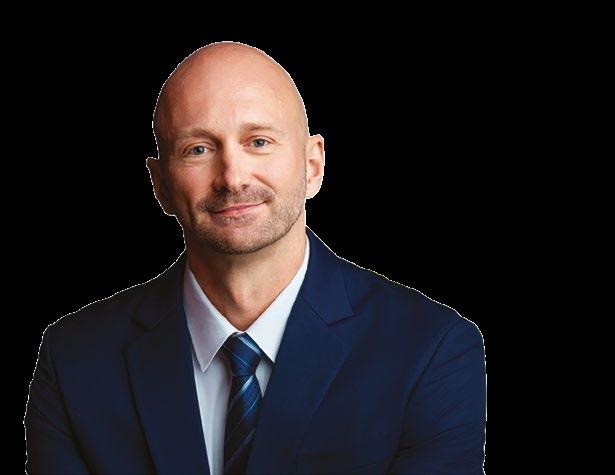

(EUAs), that are available to be traded. The price on carbon will mean companies have to either pay for their emissions using allowances, or develop robust decarbonisation strategies, implementing measures that substantially reduce them.
The EU plans to annually decrease the number of EUAs available in the market by 4%, while introducing additional steps in its strategy.
Following full implementation of the EU ETS, FuelEU Maritime will come into force, driving the shipping industry to actively reduce the greenhouse gas intensity of its fuels. Working together, the European Union system and regulations will help the shipping industry to step up its efforts to reduce GHG emissions related to voyages in and out of EU ports, and tackle decarbonisation globally. This aligns with updates to the International Maritime Organization’s (IMO) decarbonisation strategy, which mandates the industry to reduce greenhouse gas emissions by 55% by 2030, and by 100% by 2050. As shipping’s regulatory landscape continues to evolve, KPI OceanConnect is prepared as a trusted partner to help operators craft, implement and execute fuel strategies, ensuring smooth operations during this transition period.
Most owners and operators are familiar with the requirements of compliance, however, the increased administrative burden on operators will necessitate a shift in thinking, accompanied by the development of a long-term plan to prepare for incoming challenges. This will ensure that the purchasing and surrendering of EUAs is conducted in the most efficient manner possible. Initial requirements of
the EU ETS include the submission of monitoring, reporting, and verification (MRV) data for all voyages that include stops at EU ports from the start of this year, the setting up Union Registry accounts and the adaption of contracts to agree responsibilities related to the system. Timely provision of this data is imperative, with a deadline set for March 2025 covering all voyages in 2024. The corresponding EUAs must be surrendered by September 2025.
The process of setting up an EU ETS Operator Holding Account (OHA) with the Union Registry is a crucial element of operator compliance and may take a few months to set up. When these first become available in February 2024, it is anticipated that high demand will lengthen the process. KPI OceanConnect recognises the need for a customised and adaptable approach to assist clients in navigating this evolving landscape.
When dealing with the various components of the EU ETS, shipping companies should consider what expertise they need and assign specific roles to internal teams or departments that will lead engagement with the system. Shipping companies must amend existing contracts or draft new ones to explicitly outline each party’s responsibility. This clarity in allocating accountability helps ensure that all parties involved – whether the owner, the management company, or charterer - understand their roles and obligations concerning emissions monitoring and reporting within the EU ETS framework. It also helps mitigate potential disputes or confusion regarding responsibilities, ensuring smoother compliance processes and effective GHG emissions management within the shipping industry.
Adhering to EU ETS regulations is essential. Operators that fail to comply will not only face penalties, but also be required to obtain and surrender EUAs to account for their carbon emissions. In severe cases, vessels may be barred from entering the EU entirely. Comprehensive preparation is key to developing a successful strategy to navigate the EU ETS and effectively adapt to the changing regulatory environment. Looking ahead, operators should direct their attention to crafting robust, longterm fuel strategies. It can be helpful to seek advice from knowledgeable partners who can offer insights into available fuel options.
At KPI OceanConnect, our dedicated Alternative Fuels and Carbon Markets division continually monitors the alternative fuels market and stays abreast of new supply projects and upcoming regulations. We recognise our role in assisting clients and supply partners in navigating the EU ETS and its influence on the market. As a leading marine energy solutions provider, we extend our expertise from the traditional marine energy sector into this new era. As the EU ETS shapes the shipping industry, KPI OceanConnect stands ready as a trusted partner to help operators develop, implement, and execute strategies that ensure thriving operations during this complex transition.
• KPI OceanConnect is a leading provider of high–quality marine fuels, marine lubricants and expert advice to the shipping industry. It was one of the first marine brokerage firms in the US and has been a trusted, transparent, and innovative partner to shipowners and operators across the globe since 1971. l
74 Ship Management International Issue 107 January/February 2024 Emissions
75 107 January/February 2024 Ship Management International
Ravi Mehrotra founds Institute at Boston University
Veteran shipping-to-drilling owner and entrepreneur
Dr Ravi K. Mehrota CBE, Founder and Executive Chairman of Foresisht Group, together with his wife and Foresight Deputy Chairman Mrs Manju Mehrotra, once more hosted their annual Winter BBQ for some 350 privileged guests in late January.

An annual fixture on London’s social scene, the event was the 28th to be held in a specially erected marquee in the garden of the Mehrotra family home, following a pandemic-induced hiatus of a few years. Expert catering was provided by the staff of a local Indian restaurant, extravagant centrepiece displays of fresh exotic fruits providing a nod to Foresight’s origins in the reefer business.
This year’s event was marked by the announcement of Dr and Mrs Mehrotra’s endowment of a new Ravi K. Mehrotra Institute for Business, Markets, and Society (IBMS) at Boston University in the US. The Dean of the University’s Questrom School of Business, Susan Fournier [pictured, centre, in between Dr & Mrs Mehrotra] flew in for the event, in her speech paying tribute to the Mehrotra family’s generosity which she dubbed “a testament to your commitment to education, business, and societal betterment”. l

Shipowner woes aired at London Greek Vassilopita
At the New Year ‘Vassilopita’ cake-cutting ceremony held by the London-based Greek shipping Co-operation Committee, Chairman Haralambos J. Fafalios (pictured, centre) lamented the litany of challenges being faced by shipowners.
Besides the Red Sea crisis and Ukraine conflict, as well as the Panama Canal water restrictions, “world shipping has been trying to adjust to a low carbon environment,” he said. “Few realistic solutions at all have been provided by the technology suppliers such as ship and engine builders and the energy suppliers who have still not given us a real low carbon fuel on a wellto-wake basis. This is especially the case for tramp / bulk shipping.
“The fuels that are being offered do not, at present, have a global bunkering network and in some cases are not proven to be safe, especially for seafarers,” he continued. “So, it does the industry no good to add to its headaches with instruments such as ETS, CII, EEXI, which do not in any way encourage a path towards green shipping.”
All of which led the GSCC Chairman to stress the need for Greece to have “more permanent representation at the EU and the IMO, in order to increase the understanding of the maritime industry.” l
Wallem ends anniversary year at historic venue
Photos reach us of Wallem’s 120th anniversary event held back in December in the Shanghai Waldorf Astoria Long Bar -the scene of Haakon Wallem signing the original establishment document of the company back in 1903. Soon after Wallem moved into thirdpartly management – becoming one of the first companies to do so - when it was appointed to look after sisterships SS Chingtifu and SS Tsinanfu, both working in the Chinese coastal coal trade.
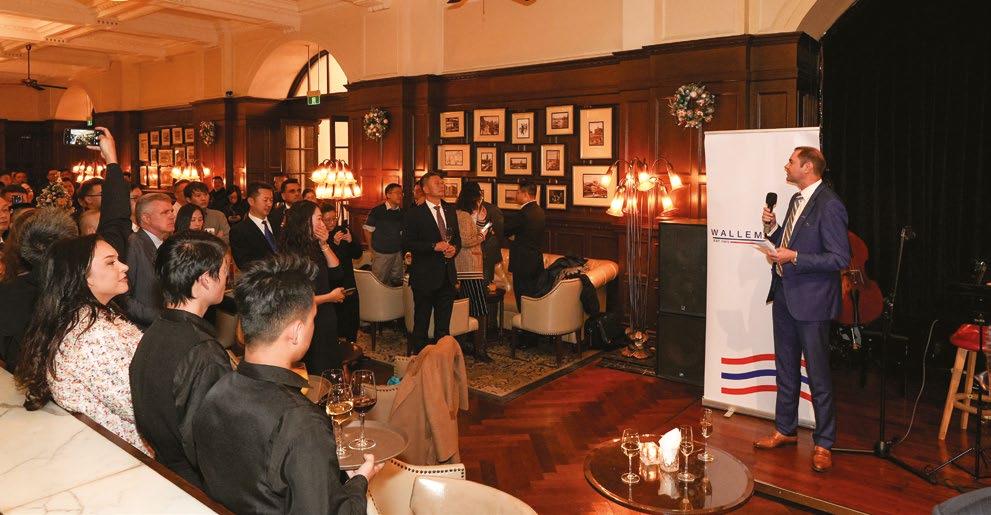
John-Kaare Aune is pictured hosting the event, culmination of a series of anniversary celebrations held around the world in last year, at which he simultaneously bowed out as Wallem Group CEO, John Rowley taking over as his successor.
Before his departure, Aune said It had been an honour being part of the Wallem Group. “We have improved client service levels, continued the digitalisation of the company services, and set the foundation for Wallem’s journey towards decarbonisation.” He wished the Group and new CEO “every success in the years to come.” l
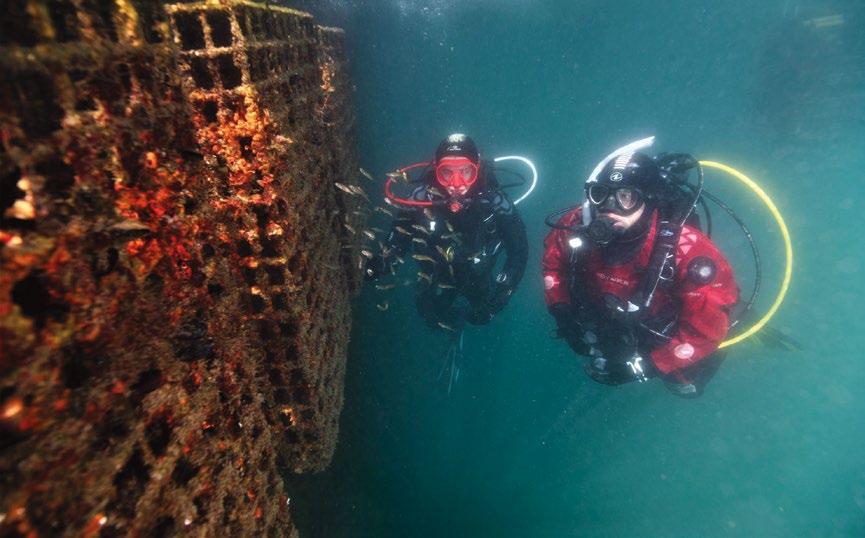
Preserving marine biodiversity at Abu Dhabi’s Khalifa Port
AD Ports Group, CMA CGM Group and Ecocean, an innovative company serving aquatic biodiversity, have signed a scientific cooperation framework agreement that will see the installation of 48 Biohuts at CMA CGM’s future terminal Khalifa Port that is currently under construction.
Designed to restore biodiversity and promote marine life in coastal and harbour areas, the Biohut module is a submerged structure that provides a safe and supportive habitat for marine life to thrive. The modules are specially designed to provide a refuge and breeding ground for a variety of marine species, including fish, crustaceans, and other marine life essential to the health of coastal ecosystems, particularly in environments where it has been disturbed or damaged by human activity.
CMA CGM Group has also long been involved in biodiversity protection and restoration projects around the world, particularly in the Middle East, including a coral reef restoration project in the United Arab Emirates. l
Cyprus Shipping Chamber celebrates milestone anniversary
The Cyprus Shipping Chamber (CSC) marked its 35th anniversary in late January, hosting a special dinner at the Hilton Nicosia Hotel.
Distinguished guests included H.E. the President of the Republic of Cyprus Mr. Nikos Christodoulides, President of the House of Representatives Mrs Annita Demetriou, as well as other dignitaries and leading shipping figures from the island.
CSC President Themis Papadopoulos, underlined the importance of continued and close collaboration between State and the CSC in fostering policies that will enable further sustainable growth for the national Shipping sector and the Cyprus economy and society.
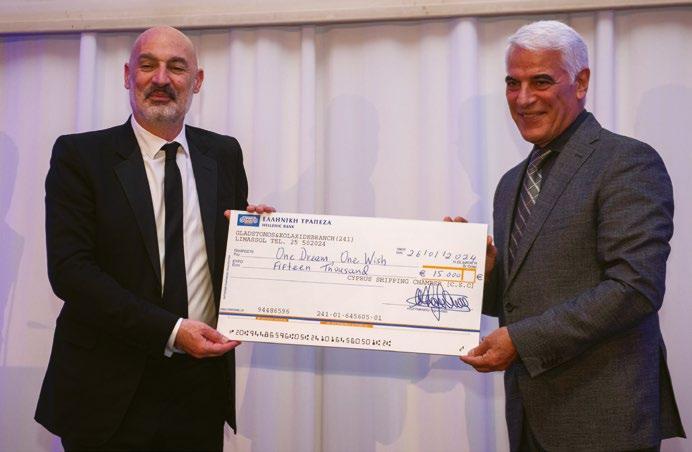
A new CSC logo was also unveiled at the dinner, and a cheque for the €15,000 proceeds of a collection among CSC Members was presented by the CSC President to the ‘One Dream – One Wish’ Cypriot charity for children with cancer and related diseases. l
Ad Hoc
Ad Hoc 77 107 January/February 2024 Ship Management International 76 Ship Management International Issue 107 January/February 2024

Alternative Viewpoint
Reducing emissions requires new thinking
By Dr Martin Stopford, leading maritime analyst and economist
The search for new technology to get shipping to zero carbon has got investors scratching their heads. The trouble is that some of the new-tec looks a bit limp wristed. Green fuels might be available for ship bunkers, but only in limited quantities (hard to be sure); and bunker prices might be much higher (sounds likely). Small modular nuclear reactors would be great for the big ships, but that’s a way off. And carbon capture is captivating, but only if you can find a way to get rid of the captivated carbon. It’s all a bit discouraging.
But maybe we should have more trust in the industry’s ability to face up to these problems. In the past shipping has been very successful at managing endlessly changing ship technology. Figure 1 tells the story – the red bars show the astonishing decline of CO2 emissions by (representative) ‘big ships’ between 1837 and 2023. Over the two centuries, the maritime industry squeezed out more and more transport, with less and less fossil fuels emissions. To put it into numbers, since 1837 the carbon emissions of a representative ‘big ship’ has been reduced by 99.4%, from 1484 Kg CO2/000 ton miles to 9 Kg CO2/000 ton miles.
It was a long, tedious and often expensive process. Two hundred

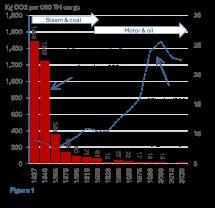
years ago the reference ship was the Great Western paddle steamer, built by Isambard Brunel. On her maiden voyage in 1838, she crossed the Atlantic in 15 days, and used 655 tons of coal (44 TPD). With a nominal cargo capacity of 500 tons, that gives a carbon footprint of about 1,484 kg of CO2/ 000 cargo ton miles.
But technology was constantly improving. Skip forward 80 years and by 1920 the diesel engines were on the way, making a massive difference. At a stroke CO2 emissions were cut by some 80% to 12 kg/000 ton miles and for good measure the diesel engine needed only 10 engine room staff, compared with 21 for a coal-fired steamship.
Putting diesel engines to work occupied the next 100 years to 2020, and there were two dominant trends.
The first was that by using the latest welding technology, the shipbuilders could cheaply fabricate big ships with
diesel engines for the bulk trades. This produced significant economies of scale.
But the second, which went in the opposite direction, was faster speeds.
After 1950 the speed of a big bulk liner ships, especially containerships, increased from about 8-11 knots to 16-25 knots. This improved delivery performance of the ships but pushed up carbon emissions per ton mile.
So the emissions data shown by the red bars in the chart did not reduce greatly between 1920 and 2022.
These long trends have a message for us. From 1820 to 1920, carbon emissions in cargo transport fell dramatically and ship speeds remained under 10 knots. But in the century from 1920 to 2020, much of the emissions improvement obtained from bigger ships was offset by faster speeds. So emissions stopped declining.
Green fuel, with their high costs and other limitations, could create a business framework more like the steam era, which favoured slow speeds. This is difficult because it means investors (and cargo) must re-think the way the ships are used –especially speed, their size in every trade; hanging around, and the trade logistics. Maybe we are relying too much on transport systems developed 50 years ago. If so, maybe it’s time for a rethink? l
79 107 January/February 2024 Ship Management International
Geopolitics to rule tanker market for the foreseeable future
In this Market Report, SMI looks at the crude tanker market in which geopolitics seems to be playing an increasing role.
By Ian Cochran
Just recently, the dynamics in the tanker market have been changed somewhat by events at the southern end of the Red Sea, which have seen Yemen-based Houthi rebels start to attack passing shipping in and around the Bab alMandab Strait.
Although VLCCs are not affected that much, as they normally sail via the Cape of Good Hope when travelling West to East or vice versa, Suezmaxes and Aframaxes that regularly use the Red Sea/Suez Canal route are.
According to LSEG Shipping Research, the extra cost of diverting a tanker from Asia to northwest Europe via South Africa is $932,905 per voyage. This is primarily due to the increased transit time from the normal 16 days to about 32, depending on the speed of the ship, which adds extra fuel. LSEG calculated that this increases Aframax voyage costs by 110%.

MIS Marine’s Dominic McKnight Hardy said that while a lot of focus has been on container traffic being diverted via South Africa, the numbers of tankers using this route had increased by about 65%.

If the crisis in the Red Sea lasts for months, as seems increasingly likely, not only will it have a significant impact on fuel costs, but also on CO2 emissions - the cost of carbon as part of EU ETS, he said.

A VLCC burns about 100 tonnes per day at 15 knots. At this speed, sailing around Cape will add around 14 days to the voyage with the vessel needing an additional 1,400 tonnes of fuel. At $600 per tonne for VLSFO that equates to an extra $840,000.
Meanwhile, in January Poten & Partners revealed its predicted key tanker market developments for 2024. Starting with VLCCs, newbuilding orders will take off this year. For several years, the VLCC orderbook has been the lowest of all the major tanker segments and near historical lows in terms of percentage of the
existing fleet. As of 1 January, 2024 the VLCC orderbook stood at 23 vessels or 2.6% of the trading fleet. This compared to 9.9% for Suezmaxes and 12.7% for Aframaxes/LR2s.
There are a number of reasons for this: VLCC earnings collapse after the initial pandemic/floating storage spike of 2020 and were dismal during 2021. Unlike the Suezmaxes and Aframaxes, VLCCs did not get a major boost from the trade flow dislocations after the Russian invasion of Ukraine in 2022.
The current Red Sea crisis also has far less impact on VLCCs than on smaller tankers thus far. However, Poten believes that this situation will change this year.
VLCCs continue to be the most economical size to move crude oil over long distances and rates made a strong recovery in 2023. In addition, fewer containership and LNG carrier orders recently have opened up shipyard slotsalbeit mostly for 2027 and beyond.
Once a few high-profile owners take the plunge and order vessels, more will follow. And, as a result, the VLCC orderbook will more than double this year, Poten predicts.
Geopolitics look set once more to dominate the tanker market in 2024 having been a major factor driving

volatility in the tanker market since the Russian invasion of Ukraine. With the conflict between Israel and Hamas, which has reignited tensions in the Middle East and the aforementioned involvement of the Houthi rebels and their campaign to disrupt commercial shipping, this has further raised the risk of escalation in the region, Poten expects tensions to remain high this year.
On top of these ongoing conflicts, elections in Taiwan have raised tensions in the South China Sea. Several major democracies are also going to the polls. General elections in the US, India, Mexico and Venezuela all have the potential to change the geopolitical landscape.
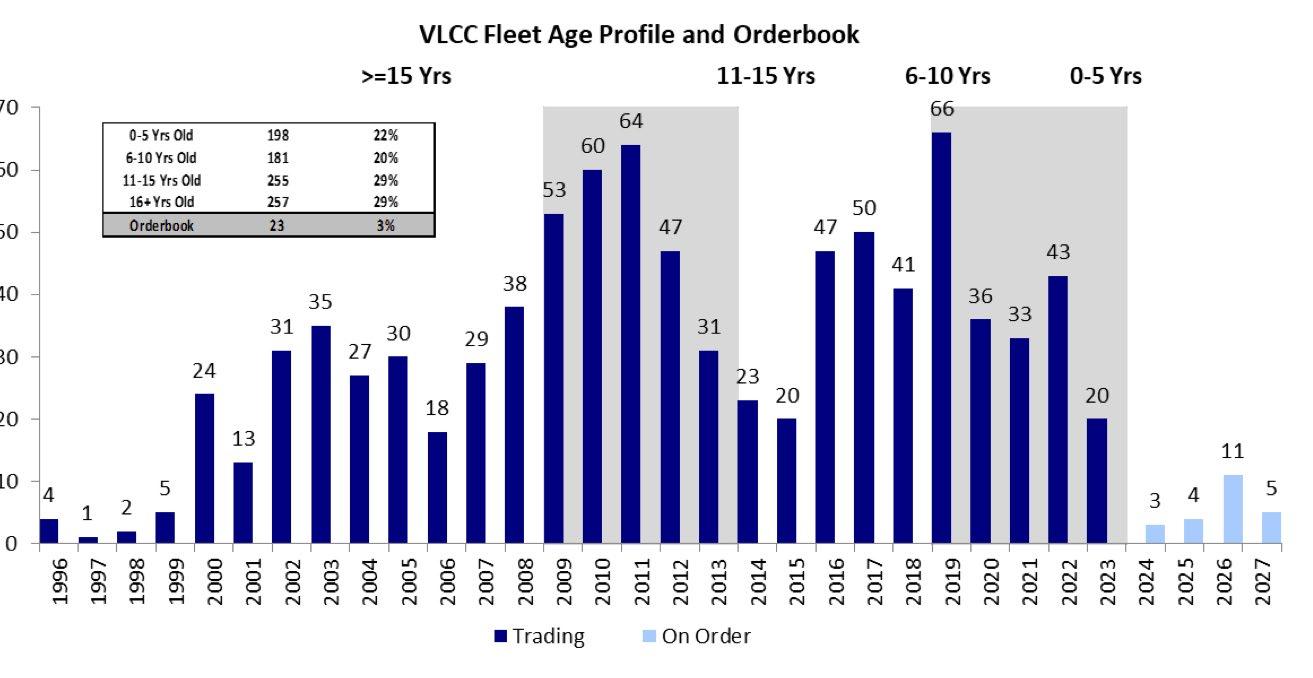
The fleet has also been getting older. Since 2019, the average age of the fleet has increased by four years (from 9.1 in January, 2019 to 13.1 currently). With limited deliveries scheduled over the next two years, the fleet will likely become even older.
The main reason for the dearth in recycling is the premium valuations on older vessels. It was much more profitable for owners to sell vessels for further trading (mostly into the ‘dark fleet’) than to recycle them.
As for the fleet, tanker recycling will pick up in 2024, as some vessels in the ‘dark fleet’ will start to be phased out. Data from Lloyd’s List Intelligence showed that only 14 tankers (>10,000 dwt) were recycled last year, down from 57 in 2022 and 95 in 2021 - the lowest level for at least 20 years
This is expected to change this year, as EU scrutiny on secondhand sales, as part of a new set of sanctions on Russia, could make owners more reluctant to sell ships to unknown buyers. However, more importantly, Poten thinks that the ‘dark fleet’ has reached a level where it is big enough to service the sanctioned trades.
As a result, tanker recycling is expected to reach at least 50 vessels this year. l
81 107 January/February 2024 Ship Management International 80 Ship Management International Issue 107 January/February 2024
Analysis
Analysis
BANCHERO COSTA BANCHERO COSTA
POTEN
POTEN
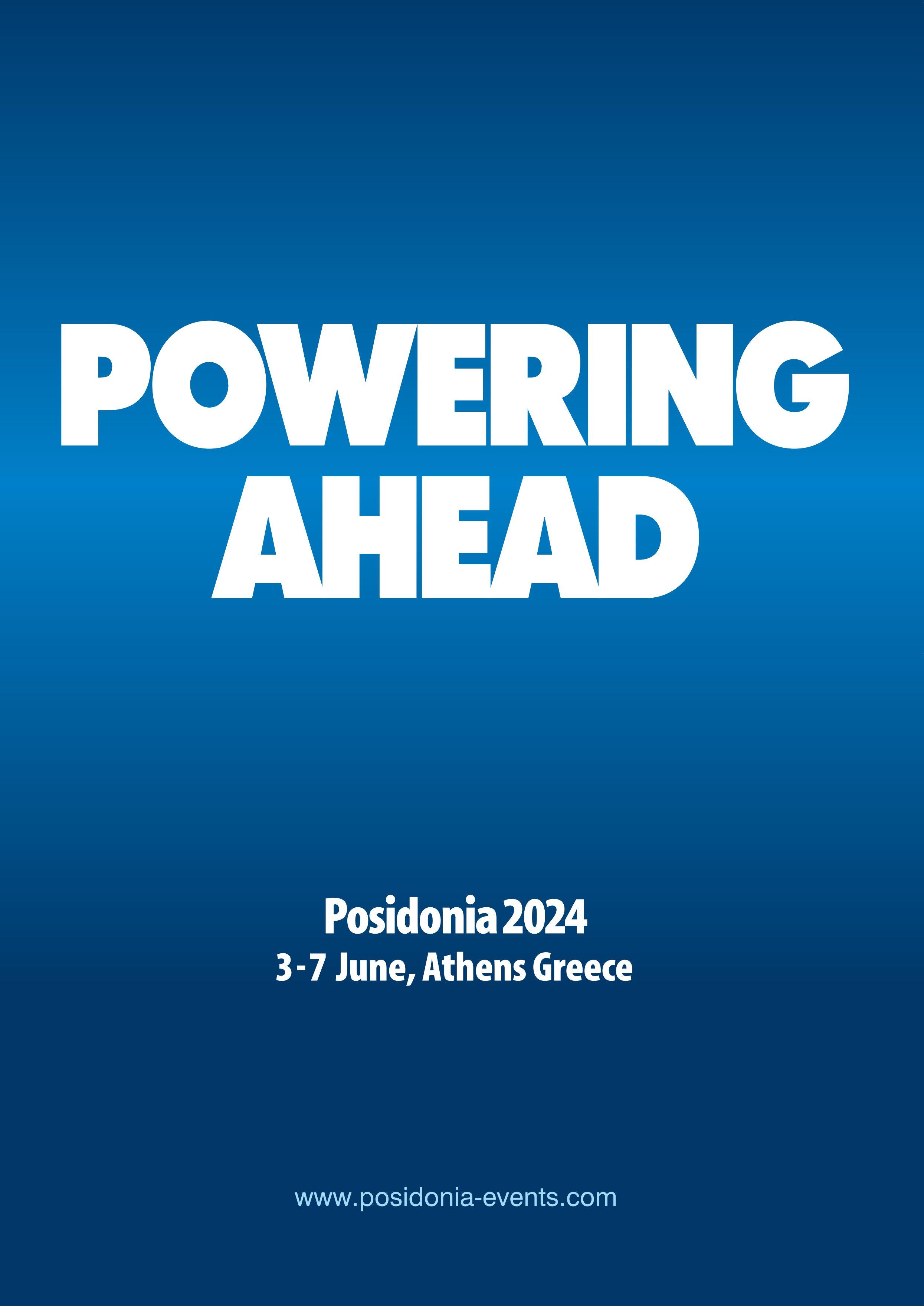
Technical
Evaluating the engine retrofit option
By David Tinsley
Decarbonising the existing fleet is a vital element in the shipping community’s quest to reduce greenhouse gas (GHG) emissions. Without substantial progress, there could still be as many as 20,000 merchant vessels relying on fossil fuels by 2050, putting the chances of achieving netzero emissions from the industry at risk.
A new publication from Lloyd’s Register (LR), analysing the practicalities, technology and business case for engine retrofits on existing ships, contends that a shortage of repair yards with experience in conversions could compromise the use and pace of retrofitting as an effective tool for realising the decarbonisation process.
Entitled the Engine Retrofit Report 2023, and intended as an annually updated guide, the study tracks the state of engine retrofit demand, capacity, and uptake, exploring the technical, economic and regulatory aspects that shipowners

must consider when evaluating and implementing fuelbased conversions. It also points to the requirement posed by such technically intricate projects for new skills in naval architecture, electrical engineering and fuel handling.
In assessing industry readiness for the adoption of alternative fuels by ships already in service, the report focuses on methanol and ammonia. It includes updates on the latest pertinent technology from original equipment manufacturers (OEMs) and licensors, notably Wartsila, MAN Energy Solutions, and Winterthur Gas & Diesel (WinGD).
LR’s observations and recommendations are predicated on the view that the maritime energy transition might be accelerated significantly through retrofitting. Dual-fuel retrofits represent a practical step that can be taken on the path to decarbonisation while enabling shipowners to maintain asset values and obviate the need to build additional tonnage.
83 107 January/February 2024 Ship Management International
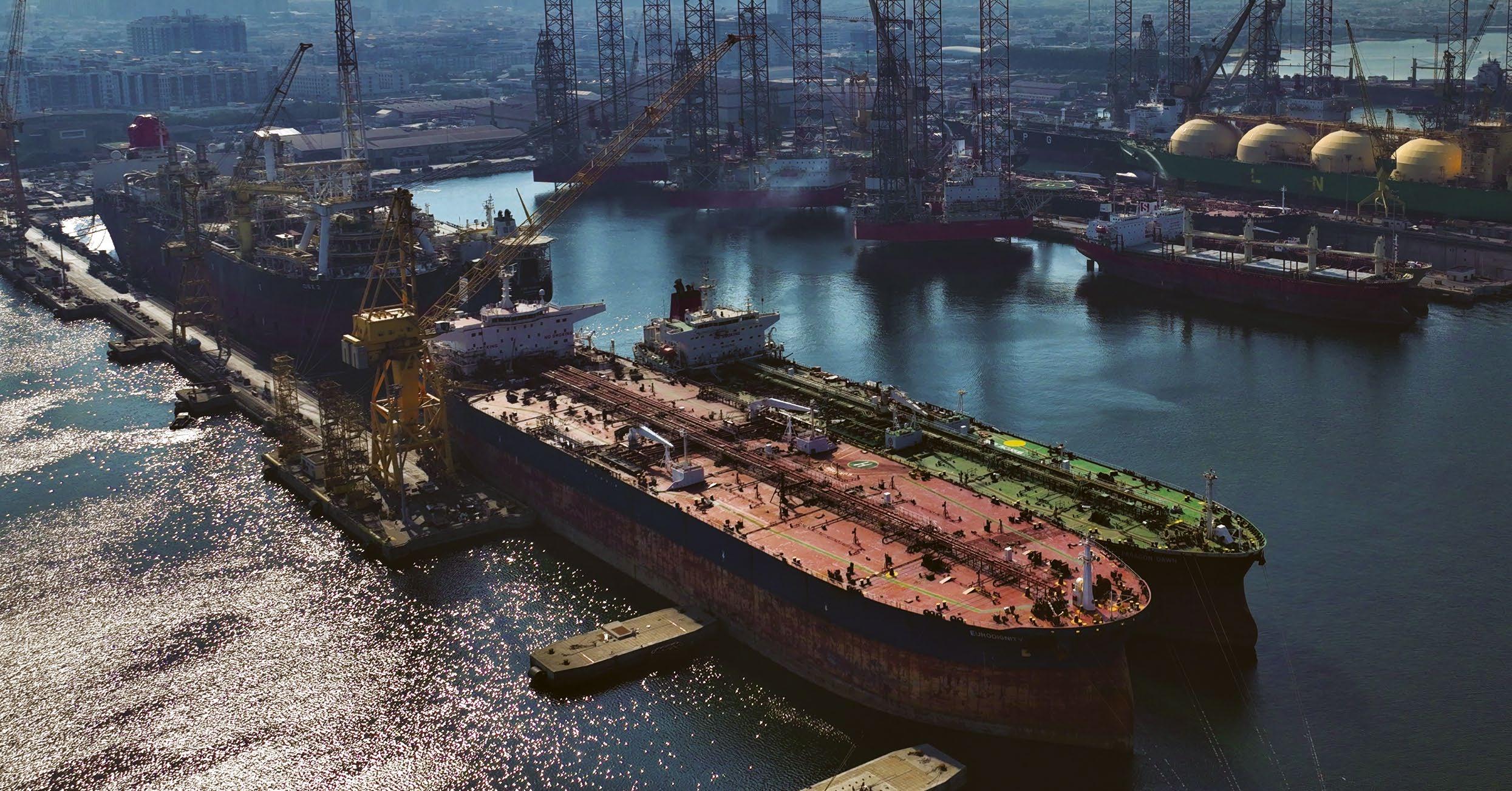
While fuel cost/availability and regulatory drivers remain uncertain, a maximum addressable market of 9,000 to 12,900 large merchant ships for such conversions has been identified by LR up to 2030. Key factors influencing the size of the market and the timing of retrofits include the date by which the shipping industry begins building only zero-emission vessels, as well as the age at which owners or operators decide to retrofit vessels, and the availability of suitable engine conversion packages. Nonetheless, realising even a fraction of this potential market will necessitate new capabilities and technologies on the part of ship designers, shipyards and operators.
While engine technological readiness is a crucial factor in ship conversions for low- or zero-emission fuels, the larger issue lies in integrating the wider fuel system and related supporting systems onto existing vessels. Significant issues such as space availability for more or larger fuel tanks and fuel preparation equipment, and ensuring safety measures are in place, provide obstacles to rapidly retrofitting the existing fossil fuel fleet.
Techno-economic modelling data in the study shows that the use of renewable methanol or ammonia would substantially increase fuel costs, in some cases more than doubling for vessels in all segments. On the other hand, the balance could be tipped in favour of alternative fuels in a low-cost scenario where the latter decrease in price and hydrocarbon fuels become more expensive.
LR also highlights the importance of human factor considerations. Working on a vessel operating on alternative fuels can entail new risks and necessitates training in specific handling procedures and equipment maintenance.
Retrofit solutions for converting to LNG firing have existed for nearly a decade since the Nakilat LNG carrier Rasheeda had her MAN main engines adapted in 2015. In fact, dual-fuel retrofits were initially centred on converting the engines of energy carriers to run on cargo fuel.
The uptake of LNG has grown rapidly since the
Rasheeda project, but primarily through newbuild installations rather than retrofits. The containership sector has led the maritime energy transition, whereby increasing numbers of newbuilds have been specified from the outset with dual-fuel engines, initially for LNG firing but more recently with the accent on methanol.
The LNG retrofit option has lost ground in terms of market interest due to the rising cost of LNG relative to fuel oil and because of its GHG emissions profile and the issue of methane slip. However, the future availability of LNG as an e-fuel or derived from biomass could provide a net-zero or near-zero carbon equivalent that may be used in existing LNG engines.
LR draws attention to the challenge of installing LNG fuel systems on existing merchant vessels, which cannot necessarily be regarded as a straightforward process. It cites the case of a large container vessel that had been classed as LNG-ready, but which was off-hire for nine months for the retrofit work, estimated to have cost $35 million. The society accordingly warns that class ‘ready’ notations or descriptive notes should not in isolation be taken to infer that a conversion will be simple.
Finding space for extra fuel tanks while limiting the loss of cargo carrying capacity is a particular design issue for retrofits to many types of vessel. Fuels such as methanol and ammonia require even more tank volume than LNG, necessitating an exacting design appraisal to avoid sacrifices in cargo capacity. However, an advantage of methanol is that it can be stored in liquid form in tanks made from stainless steel or mild steel coated with zinc silicate. This means that suitably located, IGF Code-compliant tanks on existing vessels can be used if thoroughly cleaned and coated.
Notwithstanding the surge in the nomination of dualfuel installations for many categories of newbuild tonnage, the number of existing ships capable of operating on alternative fuels, as a proportion of the global, is still very
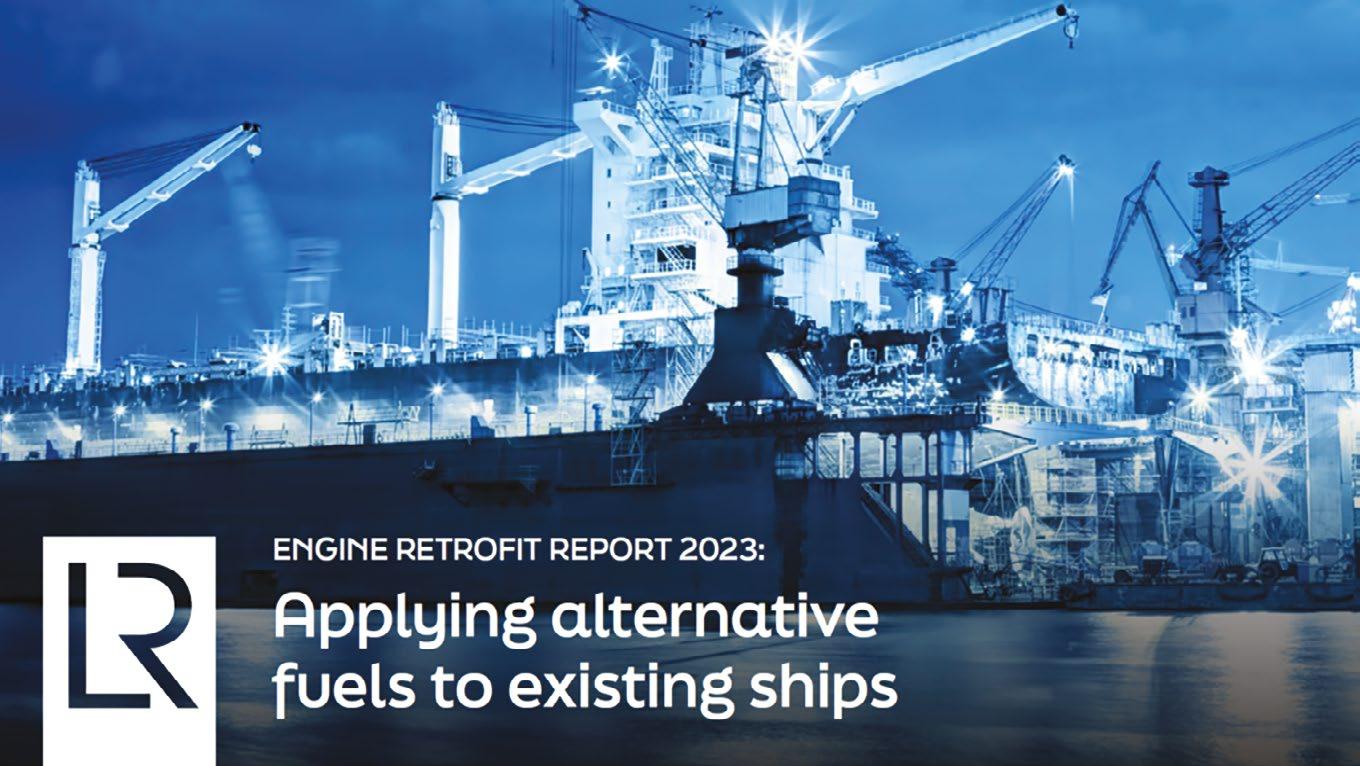
limited. Consequently, the shiprepair sector’s exposure to such vessels is correspondingly limited, placing a constraint on the number of repair yards with the experience and skills to carry out alternative fuel retrofit schemes.
LR’s modelling identified just 16 shipyards as being truly capable of performing fuel conversions. The select group’s combined capacity would equate to around 300 such conversions per annum, well short of the requisite, global capability to effect the transformation of the existing fleet in line with energy transition imperatives.
Long in the vanguard of technological innovation and adoption within the liner shipping sector, A.P. Moller - Maersk launched a plan in 2013 to retrofit 11 container to methanol dual-fuel operation. In each case, the scheme entails conversion of the potent G95-series MAN two-stroke diesel to LGIM (liquid gas injection— methanol) format allowing methanol firing. The first ship in the programme, the 15,280TEU, 2017-built Maersk Halifax, is scheduled to undergo work at Zhoushan Xinya Shipbuilding Co in China during mid 2024. Besides the engine modifications, the pioneering installation will feature Alfa Laval’s low-flashpoint fuel supply system FCM Methanol, a dedicated fuel line for methanol alongside the existing fuel oil line, fuel preparation room and new fuel tanks.
The Danish group’s initiative has been closely followed by a potentially extensive programme entailing the adaptation of some of the largest Chinese boxships for operation on methanol. The opening order awarded by COSCO Heavy Industry Shanghai Co to MAN Energy Solutions calls for the conversion of single-fuel, S90-type low-speed engines to methanol dualfuel versions in four vessels, spanning 13,800TEU and 20,000TEU sizes. The contract includes options covering retrofits to a further nine vessels in the 20,000TEU category.
As with the Maersk programme, MAN will deliver a package service for the COSCO conversions, comprising engineering, parts, project management, technical assistance at the yard and during sea trials, and re-certification.
MAN has implemented R&D and invested in a testbed dedicated to the S90-LGIM solution, and believes that the Chinese scheme will spur wider industry uptake of the specific retrofit option. “We are in the early days of a huge wave of dual-fuel retrofits and see many concrete projects coming on-line with the capacity to meet shipping’s demand for green fuels, such as e-methanol and bioLNG,” said Michael Petersen, the company’s senior vice president and head of aftersales brand PrimeServ Denmark.
The organisation has thrown its weight behind a new German research endeavour to develop methanol retrofit
solutions for medium-speed marine engines. The focus of the three-year project, entitled Climate Neutral Retrofit Engine Concepts(CliNeREco), is a retrofit-capable combustion process using climate-neutral methanol produced from ‘green’ hydrogen. Funded by the German Federal Ministry for Economic Affairs and Climate Action(BMWK), CliNeR-Eco partners MAN with energy conversion specialist WTZ Rosslau and the Technical University of Darmstadt. A model of 48/60 diesel from the MAN four-stroke portfolio will be retrofitted to serve as a test engine during 2024.
Following its ascription to the R&D project, the Augsburg-based engine producer signed an agreement with Alfa Laval to develop a methanol fuel supply system for four-stroke retrofits. As a consequence, it is anticipated that the first engines will be capable of conversion to methanol operation from 2025.
Wartsila’s Fit4Fuels innovation is a retrofit technology platform for converting two-stroke diesels to run on alternative or future fuels. The hybrid combustion concept is designed to maintain engine power density and eliminate fuel slip, extending a ship’s carbon intensity index (CII) by up to five years and affording a breathing space while uncertainties as to fuel availability and cost prevail. The system offers either a conventional fuel to LNG and then on to ammonia pathway, or a conventional fuel to methanol or ammonia pathway.
Although Wartsila no longer designs low-speed engines, it remains the global service provider for WinGD’s legacy Sulzer and Wartsila two-stroke brands, and the retrofit solution is applicable to all electronically controlled models in that portfolio.
In the four-stroke stakes, Wartsila has been in the forefront of future fuel retrofits, having delivered its first methanol engine conversion in 2015 to the Sulzer ZA40series medium-speed powered ro-pax ferry Stena Germanica. l
85 107 January/February 2024 Ship Management International 84 Ship Management International Issue 107 January/February 2024 Technical Technical
Decarbonisation

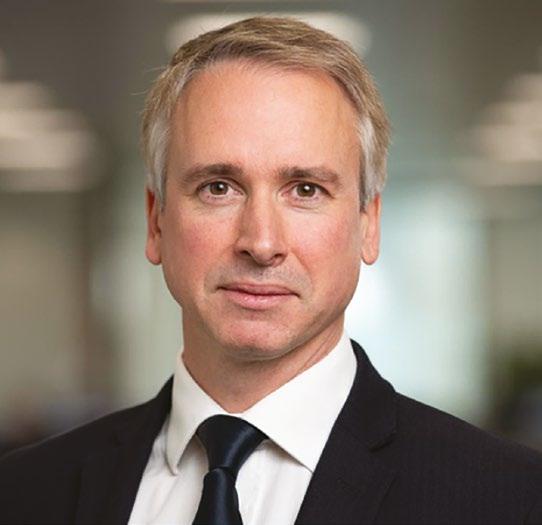
With a push for cleaner and more sustainable maritime operations at the forefront of the IMO’s agenda for the coming decades, stakeholders in shipping may often find themselves caught between the dual imperatives of environmental responsibility and economic viability. Any solution will need to strike a delicate balance between these two factors if it is to be a long-term sustainable solution for the industry.
At this time, our global fleet is almost entirely powered by fossil fuels and facing a set of increasingly punitive sanctions for failing to curb greenhouse gas (GHG) emissions in the near term. But without clear leaders on new fuels and clean technologies, ship owners and operators are grappling with the
Simplying emissions compliance
As the maritime industry finds itself at a critical juncture between the challenges of stringent emission regulations and rising costs, Ben Richardson, CEO at SulNOx, highlights the importance of gaining ground with easy wins on vessel efficiency and emissions reductions.
economic implications of substantial capital investments, operational disruptions, and comprehensive training programs for onboard personnel. These factors make the journey towards compliance an intricate and costly one, with tremendous potential for missteps.
But there are simpler ways to meet these requirements with fewer risks involved — allowing ship operators to take an immediate step towards greener operations and reduced emissions.
Speeding the process
A better fuel burn is the most direct route to a reduction in emissions and also brings cost advantages. We have taken this approach with our all-natural, fully biodegradable fuel conditioner,
SulNOxEco, which can be added to a wide range of existing marine fuels, including marine diesel and gas oil (MDO/MGO), very low and heavy sulphur fuel oil (VLSFO/HSFO), and increasingly importantly, biofuels. The conditioner provides additional oxygen and improved combustion, resulting in a cleaner burn that produces more energy and significantly less particulate matter for the same amount of power generation. The conditioners not only improve combustion efficiency but also fuel lubricity, and clean away deposits on injectors and pistons — improving engine health and reducing maintenance costs.
Stakeholders across the board immediately reap benefits as they can extend the viable operating life of
bunkering infrastructure and onboard machinery without sacrificing the commitment to decarbonisation. Our drop-in conditioners come without the need to rip out old machinery, piping and tanks to accommodate drastic changes in energy density, handling requirements or novel chemical hazards. Furthermore, the mixture of vessel fuel and SulNOxEco will remain stable in the fuel tank for months on end, ensuring a simpler, cost-effective and streamlined path to adoption and emission compliance that is readily available in the market today.
For operators who have found themselves faced with the prospect of widespread retraining of seafarers and extensive reconfiguration of vessel layouts and engine rooms to accommodate some future fuels, the appeal of a drop-in fuel conditioner is clear — especially for those with vessels already on the water. For some, a lack of familiarity with a product or technology can form an additional barrier to uptake, hindering the progress towards decarbonisation. However, with SulNOx, ease of adoption is key, as vessels and their crew can continue to run as contracted, ensuring no disruption to the global supply chain while advancing our shared goals for a greener industry en route to net zero.
Time and money
Payback periods can be frustrating for vessel owners and technology providers alike, particularly when large capital investments are involved. While technologies that improve vessel efficiency save owners/operators money by reducing their bunker costs - often yielding enough fuel savings to pay for the investment in the long term, this is a delicate balance. What seems like a sure-fire investment that a company could take to any bank or financier becomes less appealing as those
payback periods lengthen, capital sums involved increase, and various market and operational risks bleed into the equation. Owners and suppliers can be left with a great solution on the wrong side of a tall financial hurdle.
For low capex solutions, that hurdle is diminished. Our own fuel conditioners cut the burden on the shipowner and the risk involved in adopting our fuel conditioners by lowering the investment amount and removing any long-term repayment obligation.
For any carbon-cutting technology, laboratory data and trial data are critical in making an investment decision. We are proud to show a 6.4% reduction in VLSFO consumption in a recent three-month trial on a Marfin two-stroke ultramax bulk carrier, as well as an over 5% reduction in a five-month marine diesel trial conducted in partnership with a Hamburg-based shipping company (independently verified by a Northern German university). Marfin has additionally committed to expanding its trial up to six vessels - a vote of confidence shows the value of an easy to adopt, no-capex approach, and how one ship can act as the pioneer for a whole fleet.
That said, the only data that really matters to a shipowner is that of their own vessels. Our cost-reducing product, with proven results, significantly lowers the risk of finding out for yourself.
Getting the timing right
Even a shipowner with finances in place can be frustrated in their quest to start cutting expenses and saving the environment by deploying efficiency technologies. Weather routing, hull design, hull coatings, ducts, optimised propellers, wind power, electronically controlled engine loads - the list of fuel saving technologies in the maritime sector goes on, each shaving valuable
percentage points from a ship’s fuel consumption and comes with their own considerations.
From a technology deployment perspective, the disruption to ship operations and the delay before efficiencies are felt vary greatly between solutions. A shipowner making a decision to invest in greater fuel efficiency may wait mere weeks for technicians to install sensors and computer hardware, months for fabrication of large assemblies, or years if significant retrofit work is to be scheduled at dry dock. The demand for greater efficiency is immediate, but the operational reality may not align. Tight regulatory deadlines do not leave much room for delay, be it in the initial adoption of a solution, or any continued support and consumables required. Conscious of that urgency, SulNOx’s biodegradable fuel conditioners are ready to drop in at delivery and our manufacturer Nouryon (formerly AkzoNobel) stands ready to increase output to meet increasing demand as trials turn to full fleet deployments, ensuring owners are not left waiting for the next barrel.
Sustainable growth
As we hunt for efficiency improvements in every corner of ship operations, it is of paramount importance that the solutions adopted are compatible with one another. Investment decisions and reducing ships’ emissions are all more straightforward when technologies provide a cumulative improvement rather than forcing a choice between one approach and another.
By focusing on the efficiency of power generation, SulNOx’s fuel conditioners are compatible with a wide range of products focused on power usage — making shipping’s journey to decarbonisation not just simpler, but also possible today. l
87 107 January/February 2024 Ship Management International 86 Ship Management International Issue 107 January/February 2024 Decarbonisation
Clean Seas Holistic solution for hull cleaning

Fouling is a persistent global problem. According to Tor Østervold, CEO of Norway-based ECOsubsea, sustainable hull cleaning that effectively deals with the intertwined issues of climate change, invasive species and local pollution is the best solution.
It is estimated that around five million kg of fouling is carried on the hulls of internationally trading vessels every year. “At a time when the IMO has just revised its emissions reduction goal to net zero by or around 2050, pressure on the industry is even greater to cut carbon footprint wherever possible. Getting rid of fouling is lowhanging fruit and can reduce both costs and emissions by up to 15-20%,” says Østervold, especially important now the EU ETS (Emissions Trading System) has kicked in and extra CO2 emissions will have to be paid for.
Hull fouling is also suspected to be the largest vector for the transportation of marine invasive species between geographies – which is a serious problem given that oneeighth of the world’s fauna is currently threatened with extinction. The impacts of these organisms are underreported and still not well understood, so the global impact on coastal biodiversity and economies is likely to be even greater that current estimates. The situation has led countries like New Zealand to impose regulations requiring all ships to provide evidence of biofouling management prior to arrival and denying entry to ‘dirty’ ships.
Also to be noted is that the biocide tributytin (TBT)

was commonly used in hull antifouling paints and coatings until it was banned in 2008, and another toxin, cybutryne, was banned at the start of 2023, both reducing the efficacy of coatings and propelling fouling rates. Meanwhile, hull paints and coating systems also still contain heavy metals and other chemical compounds and are moreover a source of microplastics pollution. This is exacerbated by conventional cleaning methods using divers and brushes and high-pressure jets, with zero or low collection and capture of waste material,” says Østervold.
“Although I acknowledge that conventional hull cleaning makes ships more efficient, it does nothing for pollution. This is very under-communicated in the industry. We have to name the problem to solve the problem.
Sustainable hull cleaning with full collection and capture is the only effective method that addresses all three anglesclimate change, invasive species and local pollution.”
ECOSUBSEA SYSTEM
The Norwegian company’s closed-loop solution has taken 15 years to develop and perfect and is covered by 50 patent families. Hull cleaning is performed while vessels are
in port by a subsea Remote Operated Vehicle (ROV) that ‘carries’ a robotic cleaning unit. The battery driven ROV is equipped with 10 separate thrusters that keep the unit firmly in place as it transverses the hull.
The ROV is supplied with power as well as water for the cleaning system from a mobile quayside control station mounted on a truck trailer. The cables and hoses are bundled together to form a flexible umbilical around 150 metres long, enabling the system to clean a 300-metre-long vessel if the station is positioned midships. “We can of course clean larger ships simply by moving the station along the quayside. The ROV can also be deployed from a barge, if necessary,” says Østervold.
The mobile station is self-supplied with power from an integrated generator but can alternatively be supplied with electricity from outlets on the quayside.
It also houses a control room, workshop, hangar for the ROV, winch/drum for the umbilical, switch board, a crane for launch and recovery and, of course, the effluent filtration system. Being self-powered it is easy to transport the station to where it is needed; this makes the solution very scalable.
The system ‘pilot’ sits in the control room from where he/she can manoeuvre the submerged ROV and steer/monitor the cleaning unit guided by its eight cameras. A technician on the dock keeps an eye on the ROV ensuring the umbilical can run freely. The robotic cleaner uses Soft Jets for non-abrasive cleaning (the jets are 1/10th of the pressure of traditional high-pressure cleaning jets used in drydocks which can impact the hull coating) leaving the antifouling coating unharmed.
Onboard the ROV is a powerful suction pump that ‘hoovers up’ all the material removed from the hull and sends it topside for processing -- up to 1,000 kg per cleaning. The filtering system is staged; the first is a settling tank to catch the largest bio-components such as barnacles, with the remaining biomass fed through increasingly small filters (up to six sizes with additional microfiltration if required), leaving the effluent clean and free of biofouling. The system thus ensures complete environmental compliance.
ECOsubsea is currently working on a new unit that will be even more effective, with the ability to clean a ship four times faster than has previously been possible. Currently, a typical cleaning takes eight to 10 hours, with
a maximum cleaning capacity of 3,000 square metres per hour. “Our goal is to clean a 400-metre container vessel in under 12 hours,” says Østervold.
Also, the ECOsubsea filtration system is claimed to be the most advanced on the market. The company has collected data from the 1,000 ships it has cleaned and 100,000 kg of fouling treated since 2012, for clients such as Wilhelmsen Ships Service – with which it has a strategic partnership - Carnival UK and BP Shipping –which is “why we have licenses to operate in some of Europe’s strictest ports,” adds the CEO.
The cost of ECOsubsea’s service naturally depends on the size of the vessel, amount of fouling, location of the clean and use of a barge if required. Although sustainable hull cleaning has been expensive, the company is currently in expansion mode and by scaling up aims to make its service both affordable and widely available. “Ships should ideally be cleaned more frequently for a smaller percentage saving but avoiding the hidden loss over time,” adds Østervold.
As part of its service ECOsubsea also provides a biofouling monitoring, as well as a Biofouling Passport, an online platform that provides a fleet overview to ensure compliance. This can track each vessel’s fouling factor and fuel performance, and determine which ships have high or low biofouling risk, also allowing data to be shared with regulators and ports – likely to become an increasing necessity as clean sea regulations tighten in ports around the world. l

Clean Seas
Ship Management International Issue 107 January/February 2024
Remotely operated robotic hull cleaner at work sending fouling material to the quayside via an umbilical where it undergoes extensive filtration (Photo: ECOsubsea)
Mobile control station alongside NCL’s 2022-built cruise ship Norwegian Prima in the Port of Southampton
Objects of Desire
» Wear it smart
Stay connected in style, and charge through your day with this Zegna smart jacket taking clothing to the next level! It’s Smart and high-performance and enables you to charge your day with Power+ and means your phone, powerpack and other items can be charged conveniently and on the go. The transmitter, USB cable and power bank must be removed before washing the garment or having it dry cleaned.
Technical Fabric Overjacket
$1935 zegna.com


Blinding speakers
High-end active loudspeaker blending radical audio technology with graceful aesthetics and meticulous craftsmanship. A loudspeaker that exceeds expectations time and time again. Finely tuned to provide balanced, rich audio whether listening to music or watching a movie. Prepare for exceptional performances of music and cinematic soundscapes, powered by patented Bang & Olufsen technology.
BEOLAB 50
£41,650 bang-olufsen.com
» The world’s first Hyperfoil

A Hyperfoil is a high-performance electric hydrofoiling vehicle with wings to fly above the water. Like a jetski, it has an active stability system using Skyride flight control software. Combined, this creates a craft with precise balance and agility and means you can fly like a pro. All you need to do is hit the throttle and feel your stomach drop as you rise above the water and accelerate from 0 to 45 mph in 8 seconds. Slice through waves without a splash and carve tight turns effortlessly. The Valo Hyperfoil harnesses the best of aerospace, motorsport and America’s Cup racing technology to create this revolutionary weightless, flying experience.
$59000 ridevalo.com
» Electric joy
Its mission is to catalyze the move towards carbon free motoring and it’s the reason why Acrimoto has introduced the all-new Roadster, designed to be the ultimate openroad fun machine. Featuring dual-motor front-wheel drive, instant torque, and a fully connected seating stance, it’s possibly the purest expression of the Arcimoto Platform as it’s designed to be the best! See the full range online and get ready to be amazed.
Roadster
$23,900 arcimoto.com

» Ultra low-light vision
An ultra-low-light marine navigational camera, SIONYX is built around the company’s patented Black Silicon CMOS sensor. It allows mariners of all levels to easily spot obstacles and debris in moonless starlight without white light or expensive thermal cameras – navigating safely, avoiding collisions, and maximizing time on the water. IP67-rated, it’s built to operate in the toughest marine environments. Nightwave’s flexible mounting and video streaming setups allow both seamless integration with major brand MFDs and the option to view live video on your mobile device, so you can navigate confidently in the dark from any vessel with clear colour digital night vision.
SIONYX Night Vision
$250.00 sionyx.com

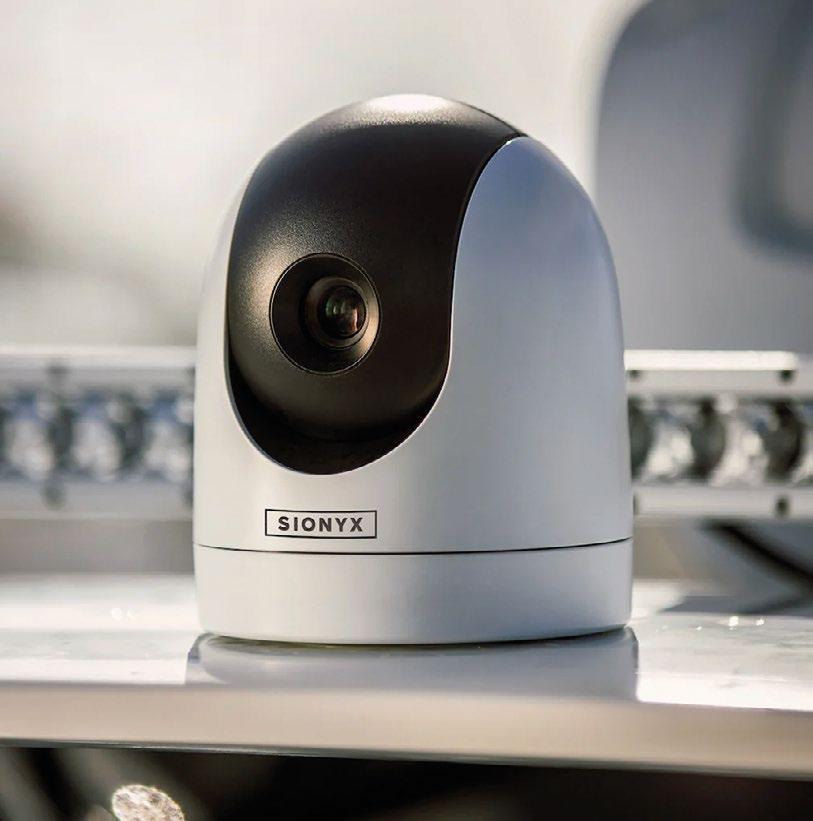
» Motion corkscrew
Brought together in the Up & Down set, these two sommelier tools are the key to mastering every last step of a serious wine tasting. From the bottom to the top, the Oeno Motion Leather&Silver ® lever corkscrew starts the ball rolling with a powerful mechanism that excels in the art of extraction. The Bubble Cork Silver ® preservation stopper then draws the ceremony to a beautiful close. The stopper maintains the full effervescence of your favourite champagnes and sparkling wines so all the better to enjoy the next day.
Up & Down
€208.00 atelierduvin.com
»
Objects of Desire
Valo Hyperfoil
91 107 January/February 2024 Ship Management International 90 Ship Management International Issue 107 January/February 2024

Holi Festival – India
24-25 March 2024
As the most popular festivals of colours and the celebration of Holi in India, it will paint your adventure into springtime. Embark on an unforgettable journey as people from all walks of life gather to partake in this excitement. Embrace the spirit of unity while coloured water is playfully thrown at each other, breaking barriers and blurring boundaries. Dance to traditional music, feast on delectable sweets and let loose in the infectious laughter and joy that flows through the air. Holi is a symbol of the victory of good over evil and the importance of unity and inclusiveness that will leave you with lasting memories. Free, at various locations in India (Udaipur, Rajasthan, Mumbai, etc.)
Natural History Museum
South Kensington, London SW7 5BD, England
A research institution and museum showcasing the wonders of the natural world, a visit to the Natural History Museum is a must for getting a picture with Dippy the Diplodocus, London’s most popular dinosaur. The Natural History Museum is the place for dino lovers from everywhere, although there is much more to the museum than ginormous skeletons. The taxidermy is incredible, while the inquisitive approach to the wider universe will make science geeks out of hardened cynics. Research continues here, making it a living museum of thought and curiosity.

Pulling Together, The Making of a Global Maritime Trade Union
Andrew Linington, Foreword by Stephen Cotton, General Secretary of the International Transport Workers’ Federation (ITF)
Ship masters and officers may not seem like pioneers of trade unionism. However, this history of their unique union, Nautilus International, shows how they have been pitched into the forefront of a long struggle for decent jobs, fair pay and conditions, employment rights, and health and safety – all in an international industry marked by savage and cut-throat competition. This book traces the evolution of today’s organisation from its roots in the Victorian-era expansion of the merchant fleet and the moves to raise the status and professionalism of its seafarers. It tells how unions have overcome problems of piracy, criminalisation, substandard ships, excessive work hours and threats of being replaced, not to mention the battle against government indifference and public ignorance of an industry that is essential for an island nation. Priced £19.99, hardback.

Summer Night Concert
Front of Schönbrunn Palace, Vienna & June 2024
Music in the garden takes on another dimension in the Viennese summer. The music is a live performance by the Vienna Philharmonic Orchestra; the garden is the landscaped park of Schönbrunn Palace, a UNESCO World Heritage site which welcomes you to the annual Summer Night Concert. Free, the open-air Sommernachts konzert in the palace grounds allows you to relish in the classical music programme with a world-class conductor and soloist(s). Be aware that the park closes if it reaches capacity so do travel early!

Saint Peter
362 Oxford St, Paddington, Sydney saintpeter.com.au

According to experts, Chef Josh Niland has transformed the way we cook, transport, age and store fish. His ethical, sustainable and revolutionary approach has received global recognition. Fellow chefs, marine experts, seafood companies and fishmongers have applauded and embraced his new philosophy. A multi-award-winning chef, he is also a restaurateur and author. In 2016, at aged twenty-seven, Josh and wife Julie opened Saint Peter, a small fish restaurant in a Sydney suburb, Paddington. Introducing whole fish cookery, Saint Peter, an Australian Fish Eatery was a highly risky venture. But together on a small budget, the couple managed to create a bustling neighbourhood favourite. Within its first year, the restaurant achieved significant global interest. Not to be missed when in town. Open for a la carte lunch and dinner. From $125 per person. Book online.
Review
books, theatre, dining, events, culture, films, festival, music, art, dvd, wine
93 107 January/February 2024 Ship Management International 92 Ship Management International Issue 107 January/February 2024
Lifestyle

Holidays extraordinaire: the road less travelled
By Margie Collins
As temperatures plunge to sub-zero and snow flurries blur a weak winter moon, fat holiday brochures land in post-boxes with a pleasing thud, luring us with bouquets of clichés and promises. Do we really want to see another Disneyfied temple? Engage in dawn towel-wars to bag a sunbed by the hotel pool? Watch a stampede of rolling suitcases as anti-tourism activists snarl at new arrivals shouting “Airbnb dehors!”?
Some tourist destinations have become less hospitable especially during the sweaty months of summer. Nebraska – one of American states people do want to visit – ran a passive-aggressive ad campaign: “Nebraska: Honestly, it’s not for everyone. Famous for our flat, boring landscape. Lucky for you, there’s nothing to do here.” These vagabond shoes are yearning to stray though! Where then? Barcelona? Kidding? Again?
The world is vast and not indifferent to travellers with serious money to burn. James Bell, managing director of Turquoise Holidays, says the “£100,000 holiday is not far off being normalised.” Abercrombie & Kent has almost sold out of their 2024 £100,000 villa holidays. The Caribbean island of Canouan has become famous for saving billionaires from having to mingle with mere millionaires. A nine-month roundthe-world cruise aboard Royal Caribbean’s Serenade of the Seas set passengers back $60,000 - $117,000, and their antics aboard have become TikTok hits.
Billionaires flock to Courchevel’s Chalet Edelweiss to hobnob with their kind during a £620,000 two-week-long stay over Christmas. Or they hire – or buy – their own private islands, currently in high demand as they provide the quintessential minimal contact with mere mortals. They come with fully furnished and staffed houses, pools, tennis courts, landing pads. Around the world, over 550 islands
are currently for sale – secluded places that have not yet been loved to death.
Sleep tourism, said Conde Nast Traveller, is the travel trend we’ve all been waiting for - part of the trillion-dollar wellness tourism industry fuelled by people who prioritise their wellbeing. You go on holiday to get quality, restorative sleep. Working with hypnotherapists and sleep clinicians who prescribe treatments to the sleep-deprived and burntout, luxury hotels and resorts offer programmes focused on getting a good and rebalancing shut-eye. Hastens, Swedish maker of some of the most expensive mattresses in the world, opened a sleep spa in Coimbra, Portugal. Rooms at Zedwell, London’t first sleep-centric hotel, are soundproofed, equipped with noise-reducing walls, floors, doors, mood lighting. No anxiety-inducing attractions – TVs, radios, phones - here. The Mandarin Oriental in Geneva teamed up with a private medical sleep clinic to curate a programme that tracks guests’ sleep patterns and sleeping disorders.
Travel-jaded people who hanker for new, challenging excitements are well-served by the danger and adventure tourism industry – risk-taking holidays that depart from comfort zones. Swimming with orcas in the Norwegian fjords, ski marathons in Switzerland’s Engadin valley, desertsurvival courses with just a machete, tarpaulin, map, freezedried food, harpoon and a satellite phone for emergencies.
Travellers who yearn for extreme escapism and isolation in what is called “get-lost travel” are cast out to be alone in hostile environments – the Peruvian Amazon, the wilds of Patagonia, the mountains of Morocco, the Mongolian steppes, remote uninhabited islands – safe in the knowledge they are being invisibly trailed by a well-trained crew. “Get-lost trips are like epic productions and can require 18 months’ planning,” said Tom Marchant, founder of Black Tomato, to The Times.
The wreck of Titanic - object of dives and tours - which split into two as it sank on 14 April 1912 - was discovered in 1985 during an expedition led by oceanographer Robert Ballard. “It lies in total darkness more than two miles below the surface of the North Atlantic,” wrote Graham Paton in The Times. “To get to it sightseers must endure a voyage over treacherous waters, followed by a five-hour dive to the sea bed in a cramped submersible.” On 18 June last year at about 105 minutes into a descent towards Titanic, the 22ft submersible Titan imploded and stopped communicating with its mother ship, instantly killing the five passengers onboard.
“I think the wreck should be treated as the grave site that it is,” said William JV Neill, former emeritus professor at Aberdeen University. “To take tours cheapens it and ties in with this deeper trend in disaster tourism. I think we should let those souls rest in peace.”
The strange allure of disaster tourism is magnet for travellers who visit gruesome locations associated with tragic or catastrophic events – genocide, earthquakes and volcanic eruptions: Pripyat in Ukraine, scene of the Chernobyl nuclear disaster of 1986; the ghost town of Belchite in Zaragoza, Spain; Pompeii’s ruins; the Fontanelle cemetery in Naples with thousands of human skulls; Craco in Matera, Basilicata; the leper colonies of Japan; the terrifying dolls of Xochimilco in Mexico hanging from every tree as a reminder of the body of a girl found nearby.
In 1972 Uruguayan Air Force flight 571 carrying 5 crew and 40 passengers including an amateur rugby team struck a mountain ridge in the Andes and crashed. Twenty-nine died; 16 survivors, stranded in freezing temperatures for 72 days, were faced with the choice of eating the remains of team members or starving to death. Hundreds of tourists make a pilgrimage to the site every year.
“Feel the Jail” programme of Tihar Jail in Delhi allows tourists to spend time in prison cells, eating the same food, wearing the same uniform, sleeping on floors as inmates who include gangsters, killers, the occasional tycoon and politician. “Prison tourism relies heavily on the gruesome to attract visitors who take selfies in striped jumpsuits,” wrote Hope Corrigan in Mother Jones. “But the entire industry is
grappling with a growing justice and reform movement and questions about exploitation and voyeurism.”
The Hotel La Prison in Beziers, France, opened last year as a renovated luxury hotel. Missouri State Penitentiary in Jefferson City encourages tourists to take photos of its old gas chamber where 40 inmates died. Robben Island Prison, where Nelson Mandela spent 27 years, attracts over 50,000 tourists a year. “Most tourists want to learn a bit of history, the conditions in which historical prisoners were incarcerated for unjust reasons,” wrote Andrew Wein in Tourism Review.
While penitentiary tourism smacks of morbid curiosity, some prisons have been bought, renovated and are being managed by luxury hotel groups – notably the Four Seasons Sultanahmet in Istanbul, a jail from 1919 to 1969, which housed some well-known people including artists, writers and political leaders.
Nicholas Wood founded Political Tours, whose programmes are led by journalists, diplomats and political analysts. “Our aim is to give people access to and the understanding of major issues in the news but draw the line at going anywhere that would endanger customers.” Political tourism is “travel behind the headlines for enquiring minds”, to countries stricken by war, trouble and strife – Afghanistan, Syria, North Korea, Iran, Libya. Hostilities in parts of Syria continue but President Assad is determined to open the country to tourists, hence Damascus issuing visas again. North Korea welcomes over 5,000 tourists every year, with the Wonsan-Kalma tourist zone being developed to increase visitor-numbers. “They have great beaches,” endorsed Donald Trump. “You see that whenever they’re exploding their cannons into the ocean. I said to Mr Kim, ‘you know, instead of doing that, you could have the best hotels in the world right there.’”
A chain of luxury resorts, from the Red Sea to the mountain of Al Soudha, is being developed in Saudi Arabia, spearheaded by Crown Prince Mohammed bin Salman, with billions of dollars being spent to create a new tourism mecca. The religious and moral police have not lowered their guard, but in 2020 Saudi Arabia started issuing visas to visitors, relaxing their strict dress code and travel restrictions for women.
95 107 January/February 2024 Ship Management International 94 Ship Management International Issue 107 January/February 2024
Lifestyle

“You haven’t been to India until you’ve been to an Indian wedding,” advertised an Indian travel firm. Travellers browse wedding listings online and pay to be invited to the wedding of their choice – which could last for days.
Auto Trader says demand for commercial vehicles is up 57% since 2020. In the growing “van life movement”, camper vans are being converted into mobile homes by people who have mostly walked away from homes, material possessions and careers to explore the freedom of the road and travel unencumbered. Ditch the car, said geographer Daniel Raven-Ellison to The Times, and get there slower. “We have footpaths connecting towns and cities. You can save money, improve your health, enjoy a network connected by railways and roads, which might take a little longer but that slower way of getting from A to B has all these benefits.” Slow Ways maps of Britain connect pedestrian-friendly and traffic-free towns and villages – the Pennine Way, the Southwest Coast Path, the West Highland Way, among others.
Where will your next holiday take you? The Arctic to see glaciers before they melt and wildlife disappear?
“There is a risk,” says the Environmental Committee of Arctic Circle, “that thousands of tourists are contributing to the degradation of the very unspoilt environment they came to see.” Or Antarctica – an inhospitable wilderness of white – the sought-after destination of those who pay up to $50,000 to stay in a heated igloo, dive beneath the icebergs, kayak alongside seals. Scientists say that earth’s southernmost continent is changing faster than any other area of the planet, its temperatures having risen by 3C over the past 50 years.
Be an island bagger – a new competitive breed of traveller sailing from Britain’s shores by boat, ferry or kayak – in a race to visit over 6,000 British isles.
“These islands are among the last places you can have micro-adventures. You wake up on the beach and hear sea birds coo, chirr and chunter. The seals are curious and bob up and down. It’s a magical experience,” said Denise McLellan, the ‘queen’ of island-baggers, to the Times.
Glamour is back in sleeper-train travel, with carriages being transformed into grand suites with elegant bathrooms, attended by butlers and meals concocted by Michelin-starred chefs. “The thrill comes from the hoot of the train in the night, that just the other side of a curtain lies South Africa’s Karoo desert or the Alps, or the Devon coast while you lie in the dark under a tangled blanket,” rhapsodised Julian Glover.
One day Elon Musk (or his son X) will take humankind to Mars, opening new frontiers. British astronaut Tim Peake said: “We know exactly how to get there. I reckon we will be in Mars by the late 2030s.”
There is a waiting list of some 800 people willing to pay $450,000 for a seat on Virgin Galactic’s suborbital missions – to view the stars in a 72-minute round trip across the invisible Karman Line. Jon Goodwin, 80, the first paying tourist on Galactic’s VSS Unity, refused to let a diagnosis of Parkinson’s deter him from his ride. Landing back on terra firma, he said: “What am I going to do now? I suppose there’s always the moon.”
What good are wings, after all, without the courage to fly? “The woods diverged in a road,” wrote Robert Frost, “and I took the one less travelled by, and that has made all the difference.” l

96 Ship Management International Issue 107 January/February 2024 Lifestyle
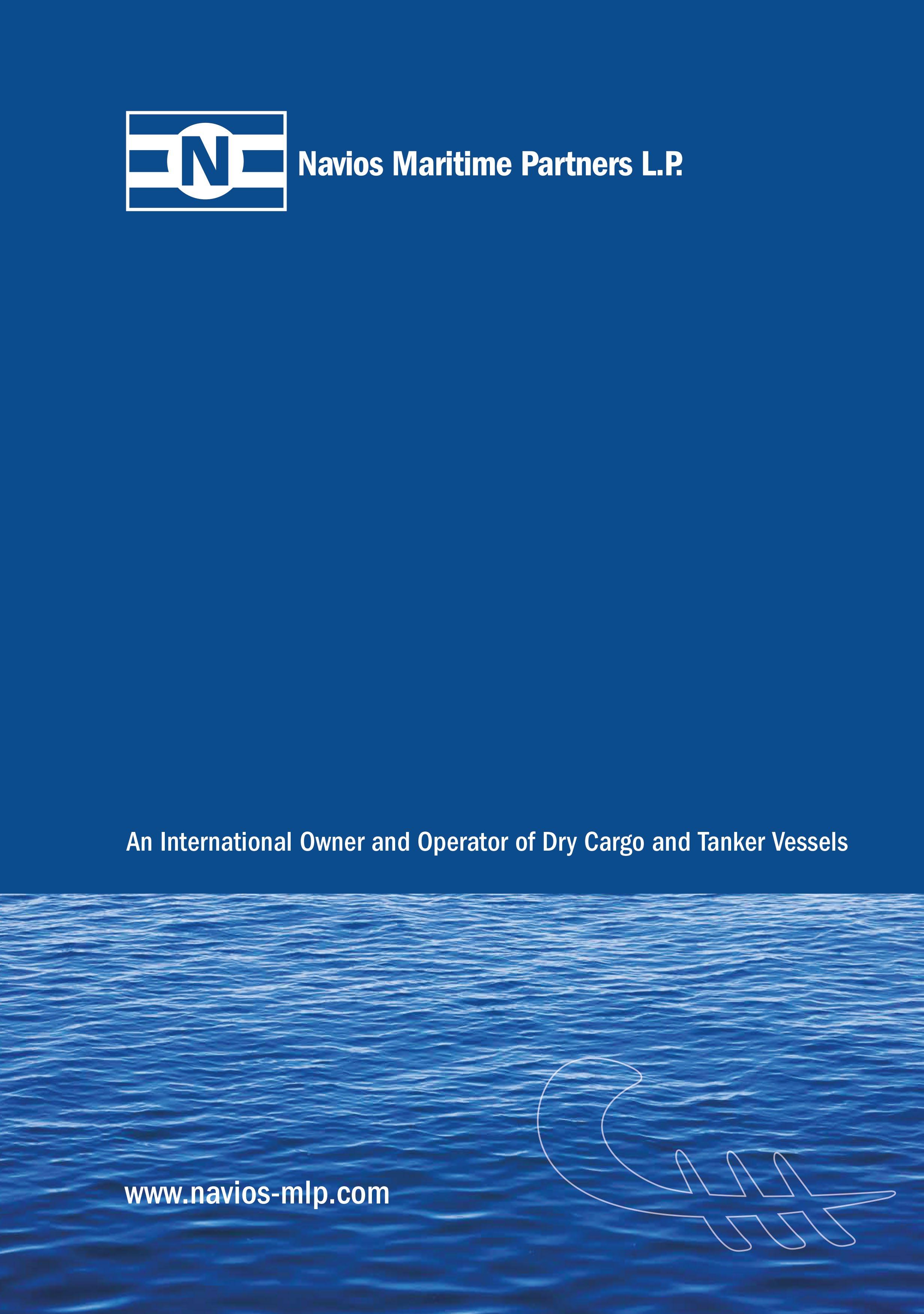



































 By Robert Hodge, General Manager at ITIC
By Robert Hodge, General Manager at ITIC




















 By Dor Raviv, Co-founder and CTO, Orca AI
By Dor Raviv, Co-founder and CTO, Orca AI




























































 By Troy Mitch, a founder of ContinuSys, provider of an
By Troy Mitch, a founder of ContinuSys, provider of an







































